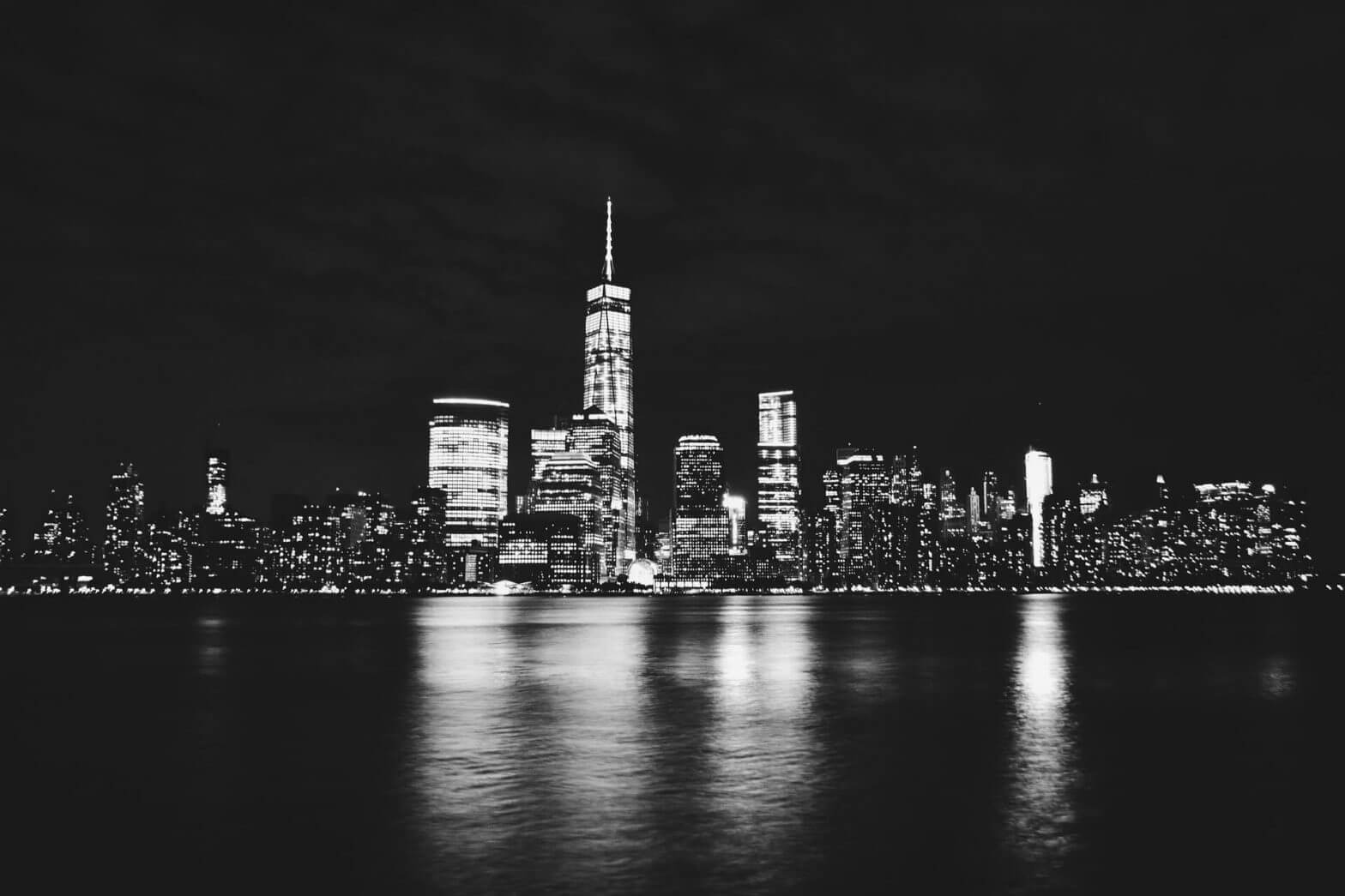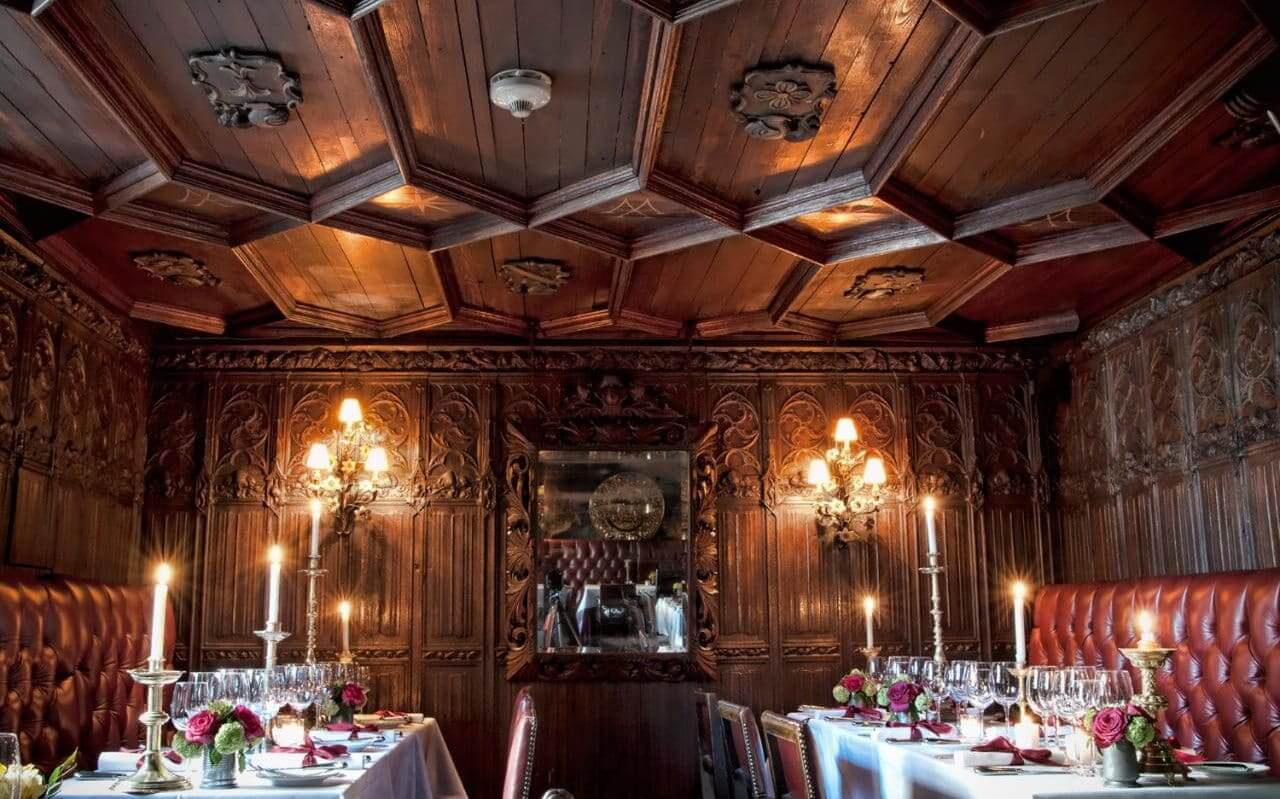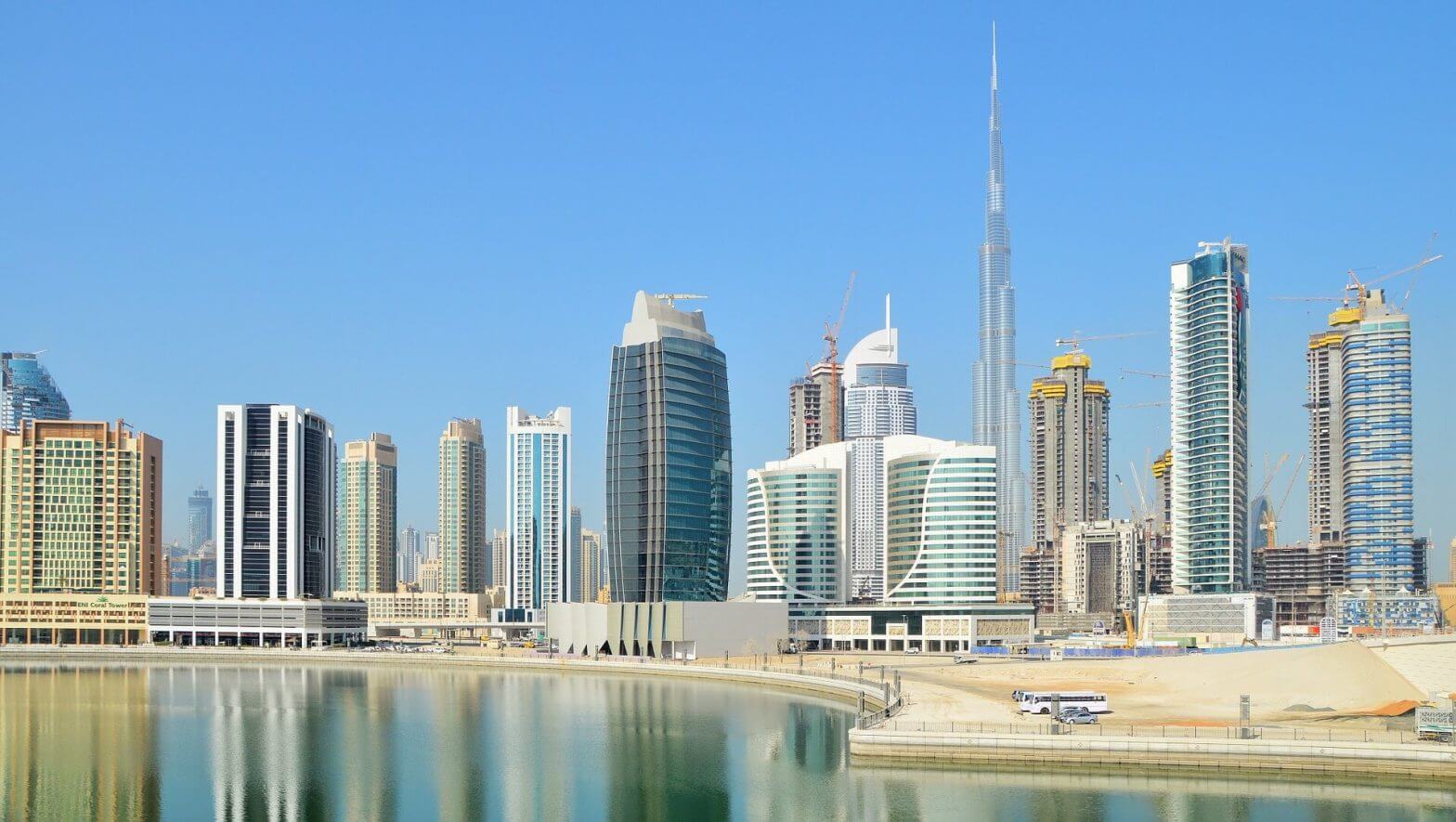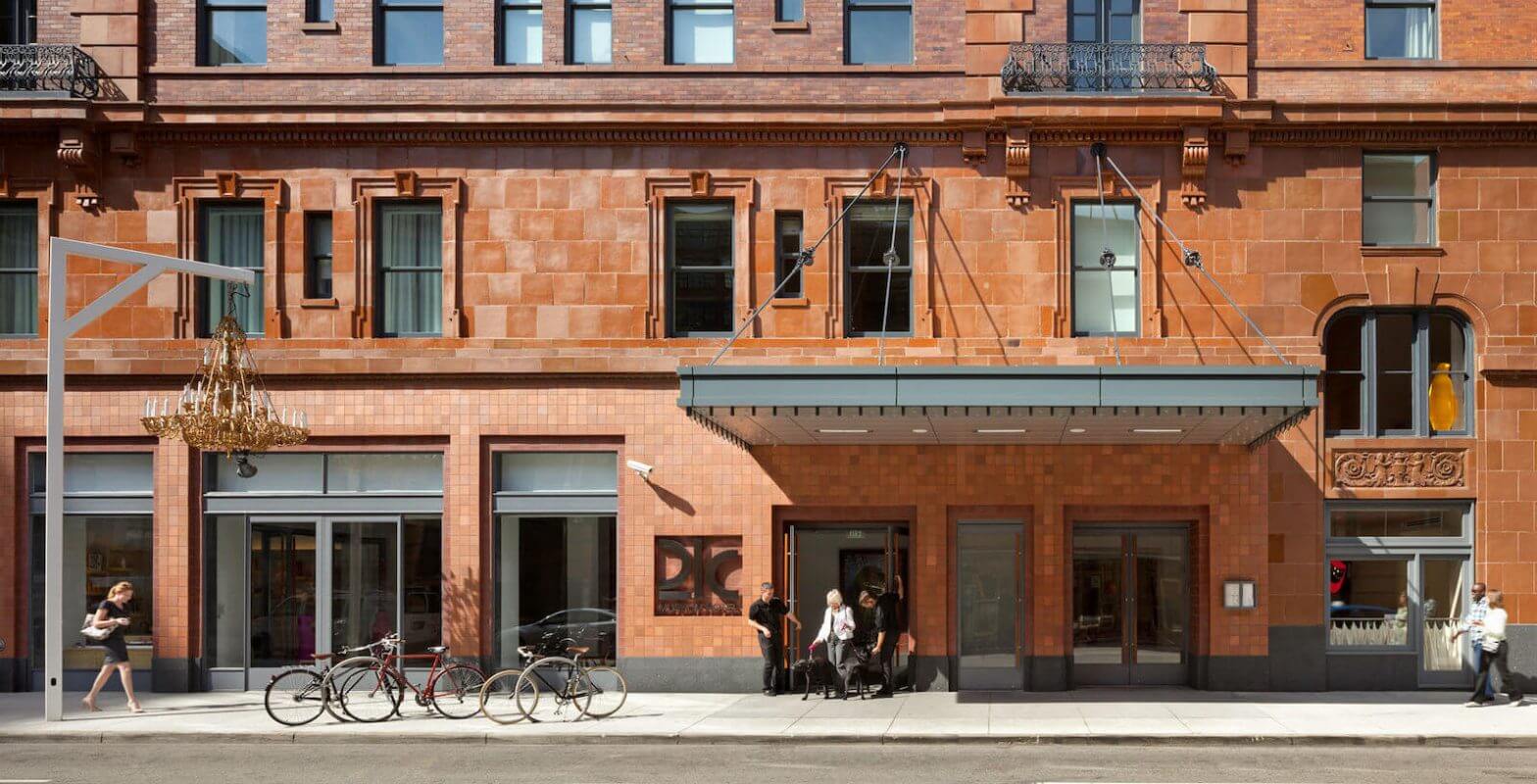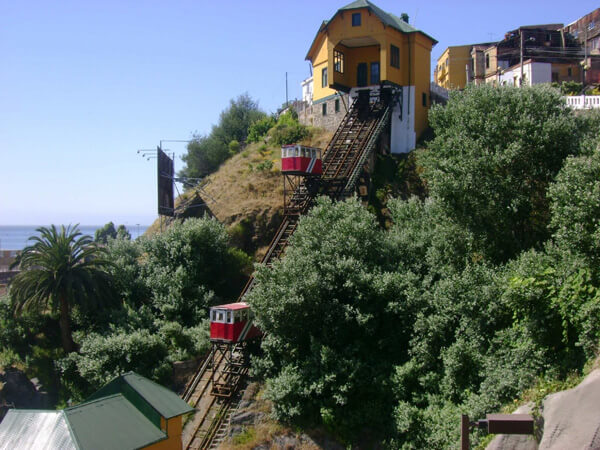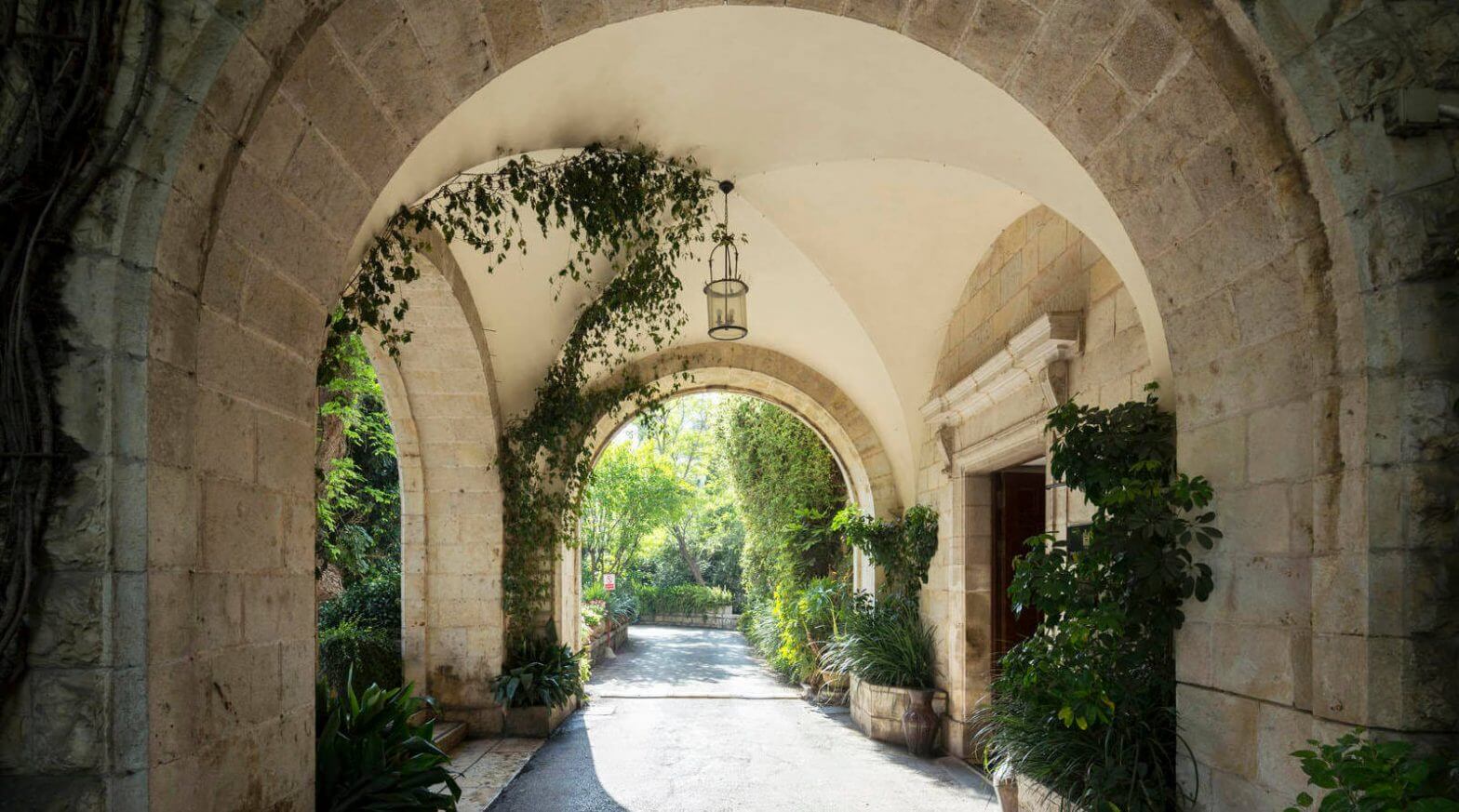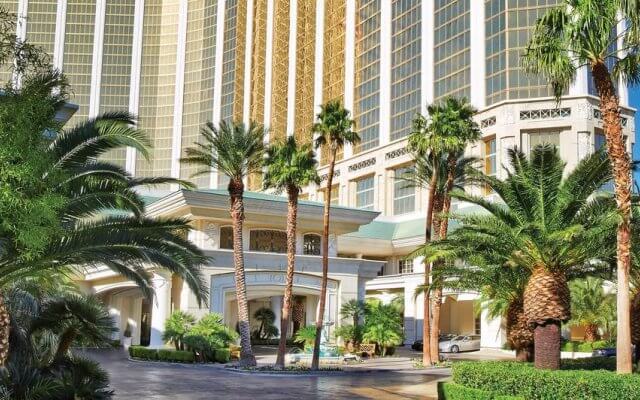This year’s winners were chosen based on over 1.5 million professional reviews.
19 hotel openings to watch in 2019
Checking into a newly-opened hotel is a lot like moving into a new home. The paint is fresh, the sheets are crisp, the bed still has a bounce, you can see your face in the pristine tiled bathroom, and the space has a true fresh aroma. But unlike one’s residence, there’s an attentive staff to take your luggage, prepare top-notch cuisine, and book those practically unattainable theater tickets. It is for these reasons — and more — that staying in a hotel is always a memorable experience. While you may have your favorites, here are some up-and-comers opening their doors in 2019. Get ready to pack your bags.
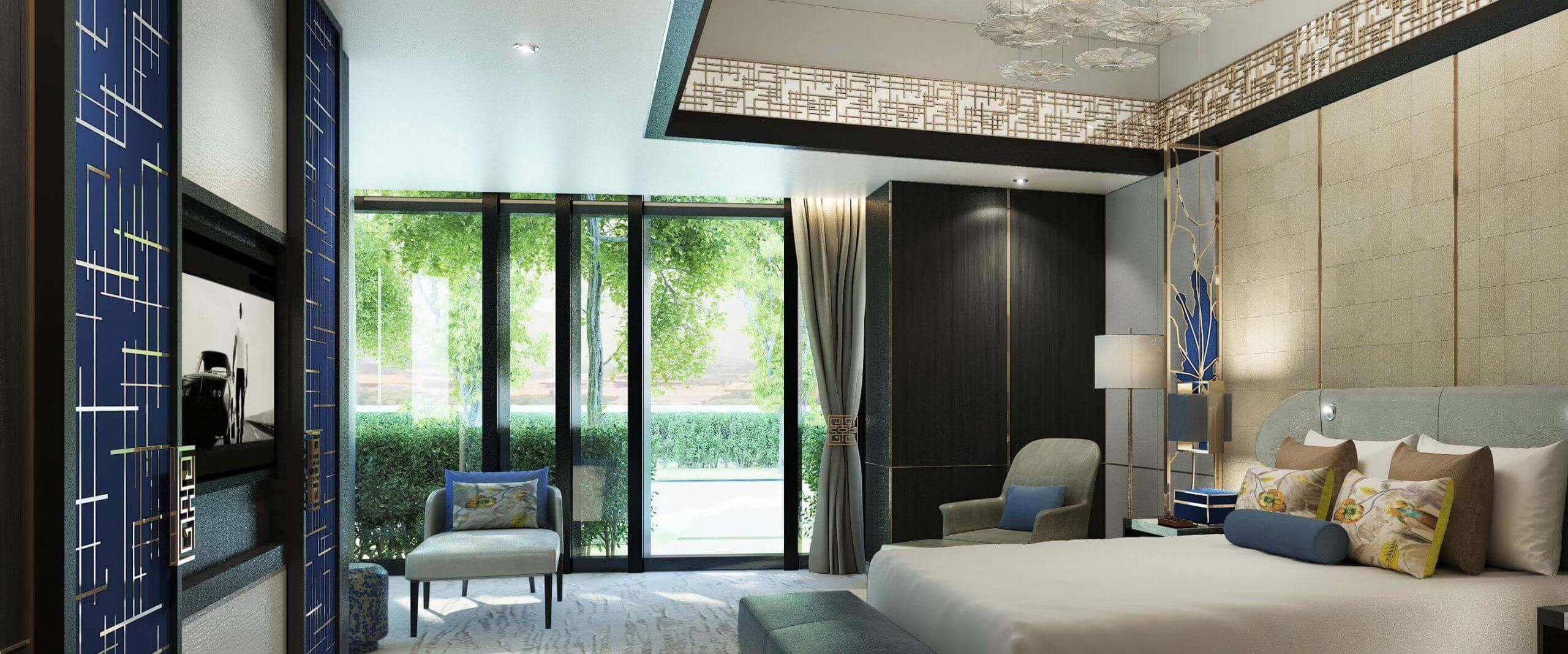
Mandarin Oriental Wangfujing
Where: Beijing
When: Early 2019
Why Go: Nestled within the commercial and political nucleus of the city, this upscale hotel is perfect for those traveling on business — but there’s plenty to draw in pleasure seekers, too. We’re talking about two restaurants, a bar, and an ethereal spa complete with a state-of-the-art fitness center and 25 meter indoor lap pool housed under a sky roof. The property is strategically located on the top two floors of the WF Central — an upscale 21,000 square meter retail paradise — so shoppers, rejoyce. Wind down at the end of the day in one of the 73 rooms and suites that are touted as some of the largest in the Beijing. Don’t leave without taking in the views of the Forbidden City on the rooftop terrace with a libation in hand.
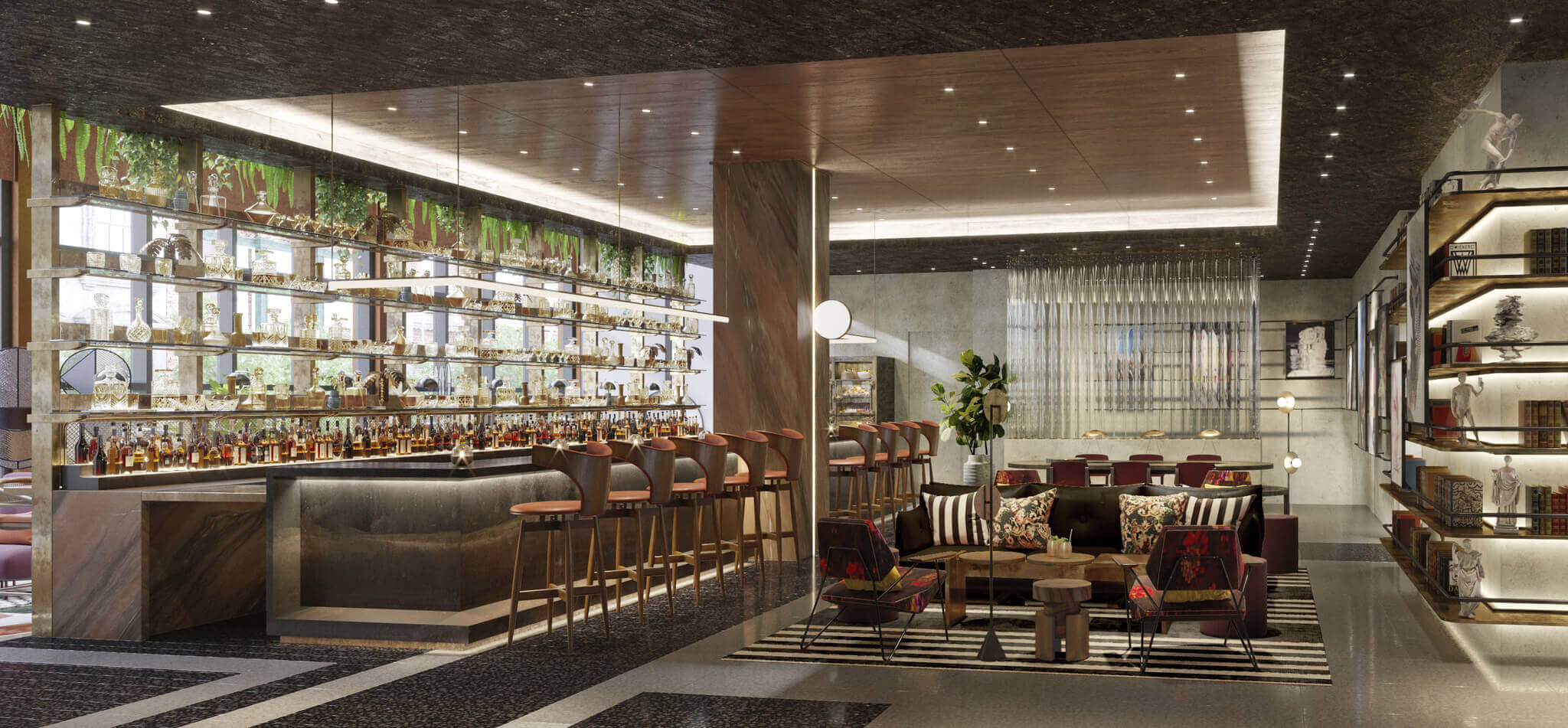
Moxy
Where: Chelsea, New York
When: February
Why Go: Following in the footsteps of the Moxy in Times Square, the Chelsea location is primed to have the same level of success. Boasting 37-stories, the hotel features 349 guest rooms (each with floor to ceiling windows), a lively trattoria/café, live/work/play spaces, a coworking lounge, meeting studios, a planted conservatory, and a retractable glass-enclosed rooftop bar with sweeping views of the Empire State Building.

Mandarin Oriental Jumeirah
Where: Dubai
When: February
Why Go: Location, location. The Mandarin Oriental Jumeira is the closest beachfront resort to Downtown Dubai and the financial and business districts, so it’s perfect for business and leisure travelers alike. The property features an impressive six dining/drinking establishments, to include a Japanese steakhouse and José Avillez of Lisbon’s Belcanto, a celebrated eatery awarded two Michelin stars. Drop your little ones off at the kids’ club and head over to the spa for one of the indigenous treatments on offer. Celebrating a special occasion? Book the the Sea Jewel, an indulgent VIP suite featuring unparalleled views of the waterfront and a hammam-style treatment area.

Blackberry Mountain
Where: Tennessee, USA
When: February
Why Go: It’s likely that you’re already familiar with the legendary Blackberry Farm in the foothills of the Great Smoky Mountains in Tennessee. Despite the passing of founder Sam Beall, his wife and family continue to carry the torch for this historic property, as well as up-and-comer Blackberry Mountain. The holistic retreat is situated on eight miles of protected ridgetop spanning 5,200 acres, which makes it the perfect setting to enjoy creekside meditation, cooking demos, guided hikes, craft classes, mountain biking, tree climbing, rock climbing, foraging, and camping. You’ll want to make time to wind down at the outdoor heated infinity pool featuring breathtaking views of the grounds. It’s the perfect place to come with a group as the luxury accommodations are offered in the form of a ridgetop cabin, stone cottage, or multi-bedroom home.

Hotel Amapa
Where: Puerto Vallarta, Mexico
When: March
Why Go: While there’s a bevy of enormous accomodations in Mexico, Hotel Amapa proves that good things come in small packages. Several of the 55 well-appointed guest rooms feature a private balcony, scopious windows, and minimal yet modern Mexican design (think ceramics by Mexico City-based David Pompa, woven wall hangings by fibre artist Mariella Motilla, and natural bath products by Mexican brand Vervan) that makes you feel as though you’re kicking back in your own hacienda. Take a trip to the rooftop pool and bar for an eagle eye view of the Sierra Madre mountains and tropical beach scene.
The Biltmore, Mayfair
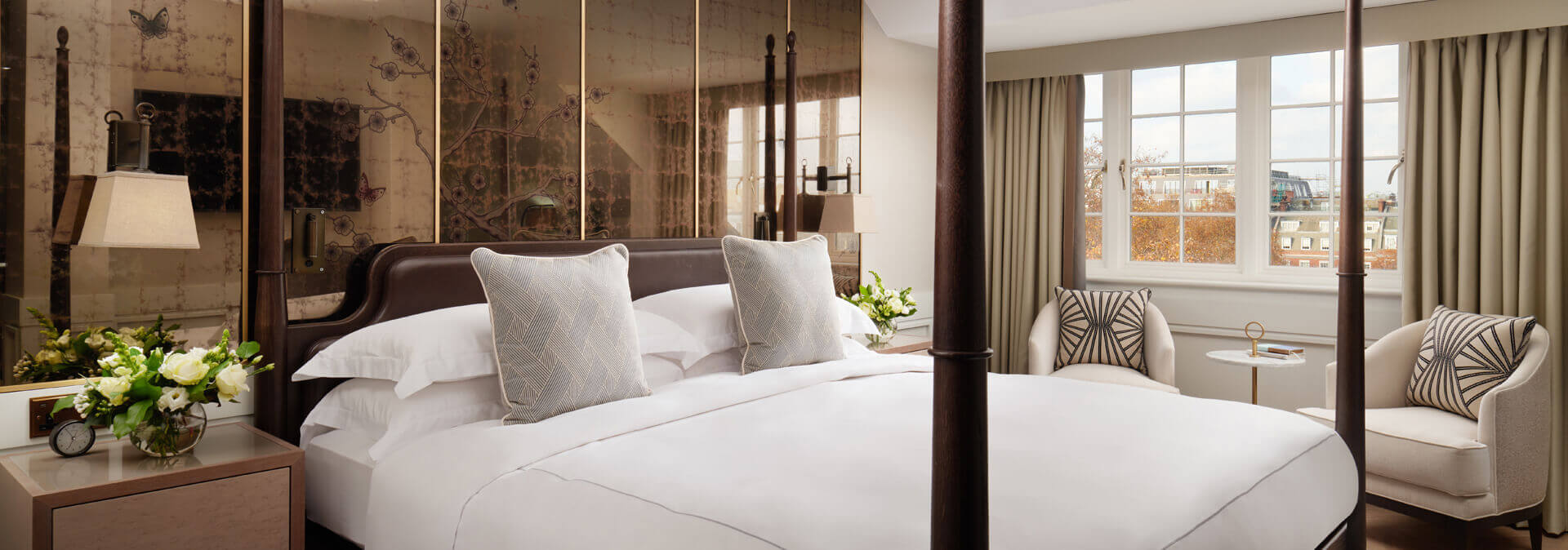
The Biltmore, Mayfair
Where: London, England
When: March
Why Go: LKR Hotels & Resort is is making its first European debut in the heart of London next to the historic Grosvenor Square. The 257 well-appointed guest rooms and 51 luxurious suites pay homage to the property’s roots when it served as a stately private residence. While specific restaurant details are forthcoming, we’re told one can expect internationally-renowned chefs in the kitchen, a year-round alfresco terrace, and a chic cocktail bar. If there are wedding bells in your near future, a 500 square meter ballroom can facilitate up to 700 guests for a cocktail reception.
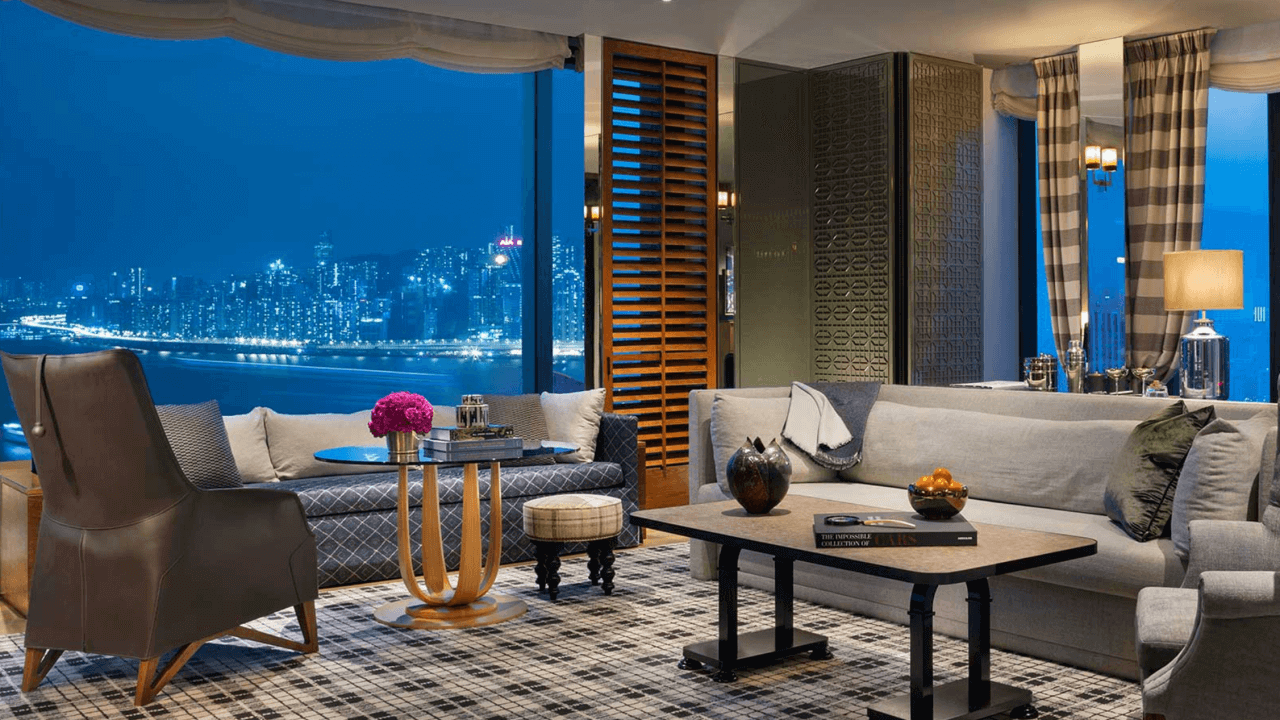
Rosewood Hong Kong
Where: Hong Kong, China
When: March
Why Go: As this hotel is under the Rosewood brand, it’s no surprise that the accommodations are beyond luxurious — especially if you book one of the 18 specialty suites where you’ll receive personalized butler service and Manor Club access. Be sure to make an advanced booking at the Asaya, Rosewood’s second global wellness retreat. Along with face, body, and nail treatments, you can sign up for a customized, integrative program to help you achieve both physical and mental goals.
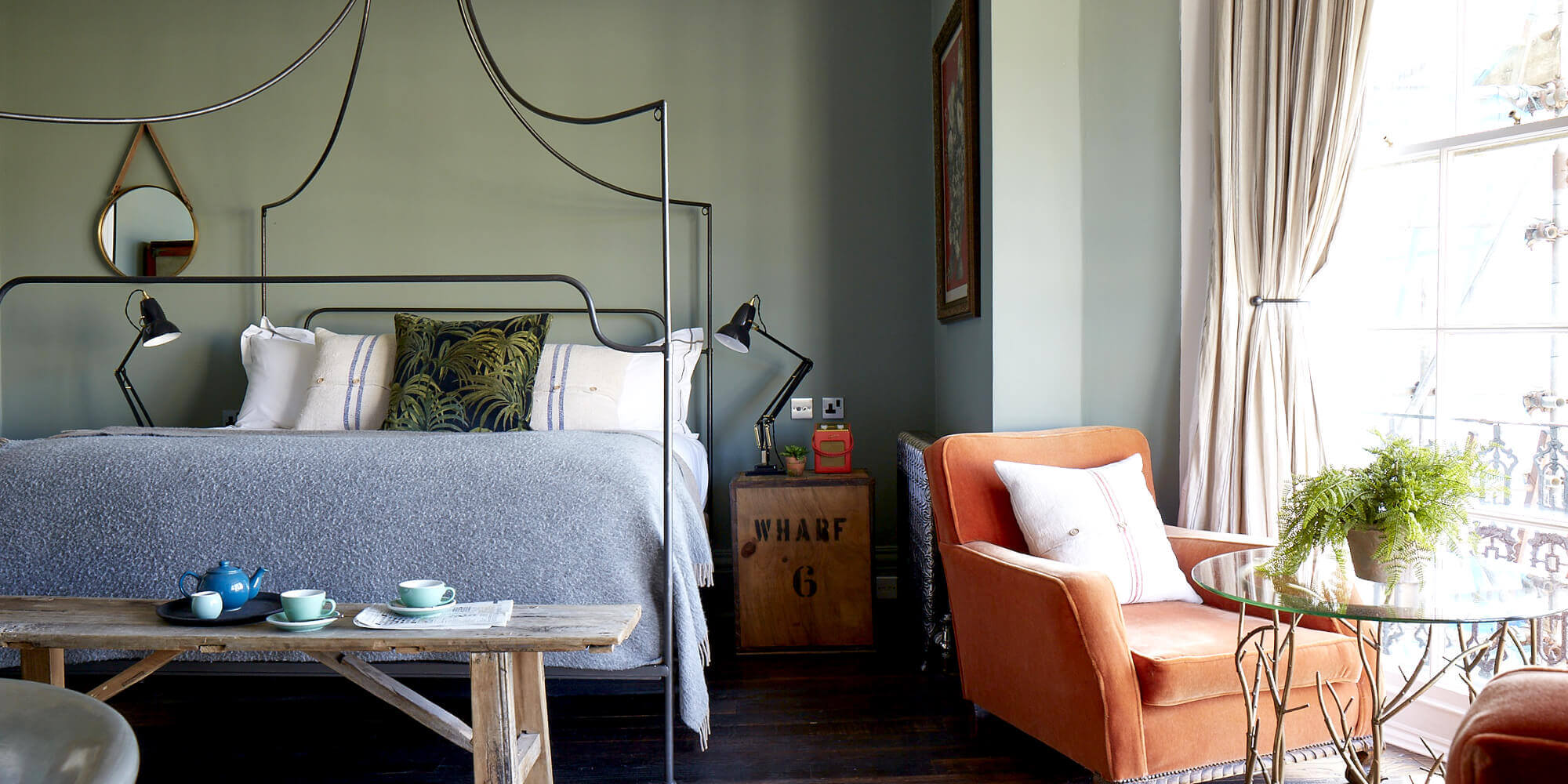
Artist Residence
Where: Bristol, UK
When: March
Why Go: Partners in business and life, Justin Salisbury and (now) wife Charlotte are opening their fifth hotel in ten years, all of which are under the Artist Residence brand. The latest — housed in a former boot factory — will offer 27 bedrooms, a bar and café, and an event space for those who prefer a non-ballroom affair. Expect the same unconventional, nonconformist decor that includes a wide range of textures and colors.
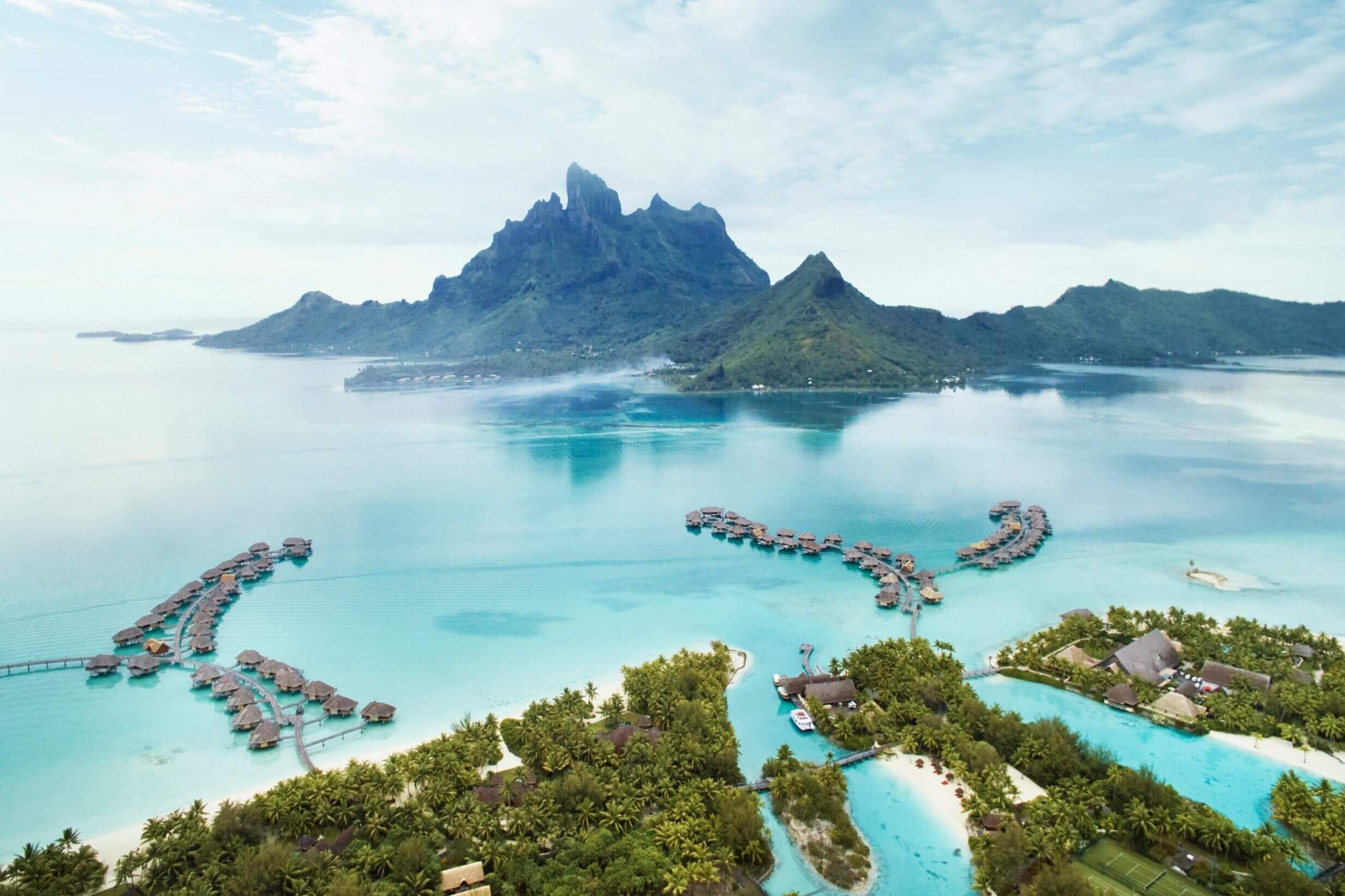
Coqui Coqui
Where: Bora Bora, French Polynesia
When: April
Why Go: Native to Mexico, the Coqui Coqui Residences and Spa portfolio is making its way to the French Polynesian island of Bora Bora. The brainchild of perfumers Nicolas Malleville and Francesca Bonato, the residences and boutique celebrate the fruits, woods, and herbs of the native land. The dynamic duo tapped their friend/neighbor Raphael Delente, an accomplished landscaper, to create a beautiful, fragrant botanical garden on the premises. The residence will blend right into the area, complete with Polynesian bungalow charm.
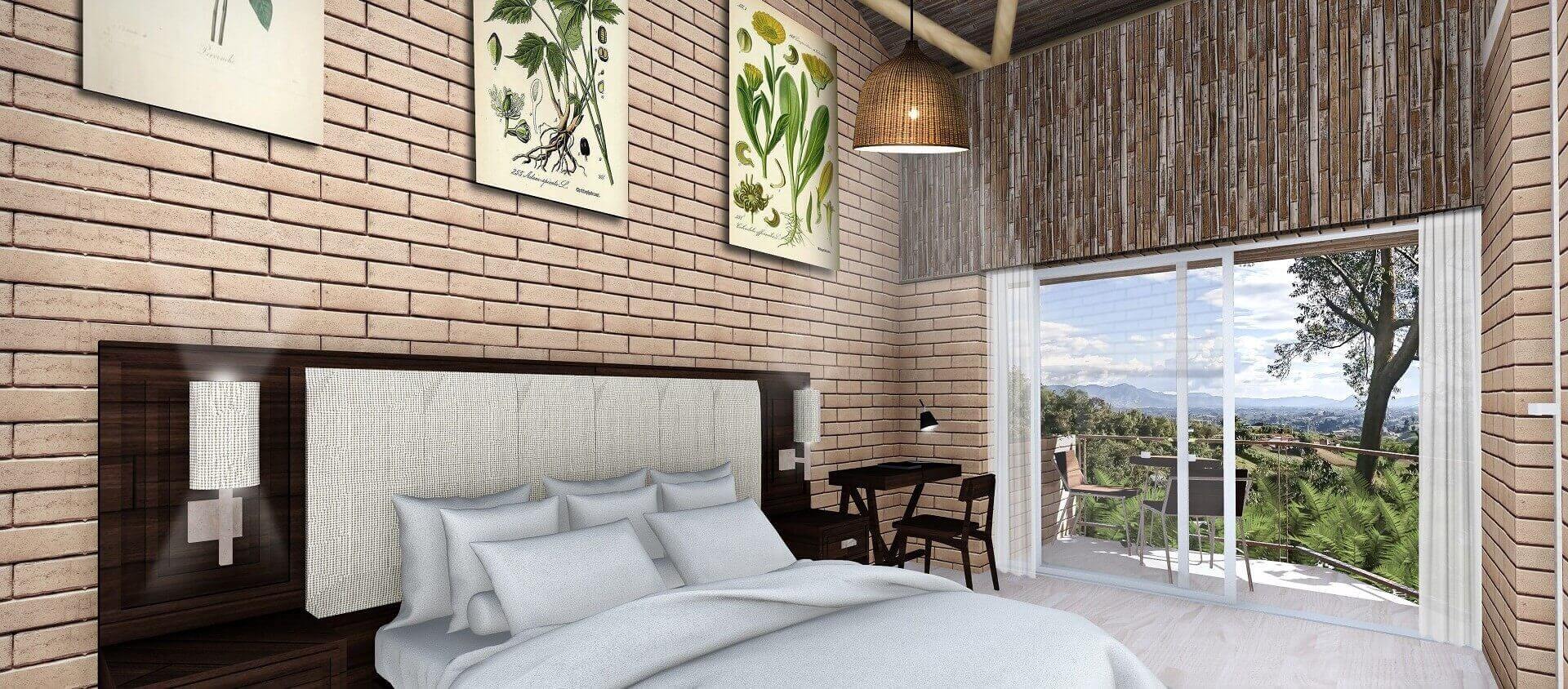
Cannúa
Where: Marinilla, Columbia
When: April
Why Go: Located within the heart of the Columbian countryside within a protected forest among the Antioquian fincas of the central Andes, Cannúa is being primed to be the only upscale boutique retreat of its kind in the entire country. The 10 rooms and 8 cabanas — constructed with sustainable materials — are nestled within the mountainside, so you really feel as though you’re one with nature despite being surrounded by modern-day amenities and locally-influenced decor. Take advantage of the terrain by taking a pre-Hispanic heritage hike, exotic bird watching expedition, or a cooking class utilizing indigenous ingredients from the area.
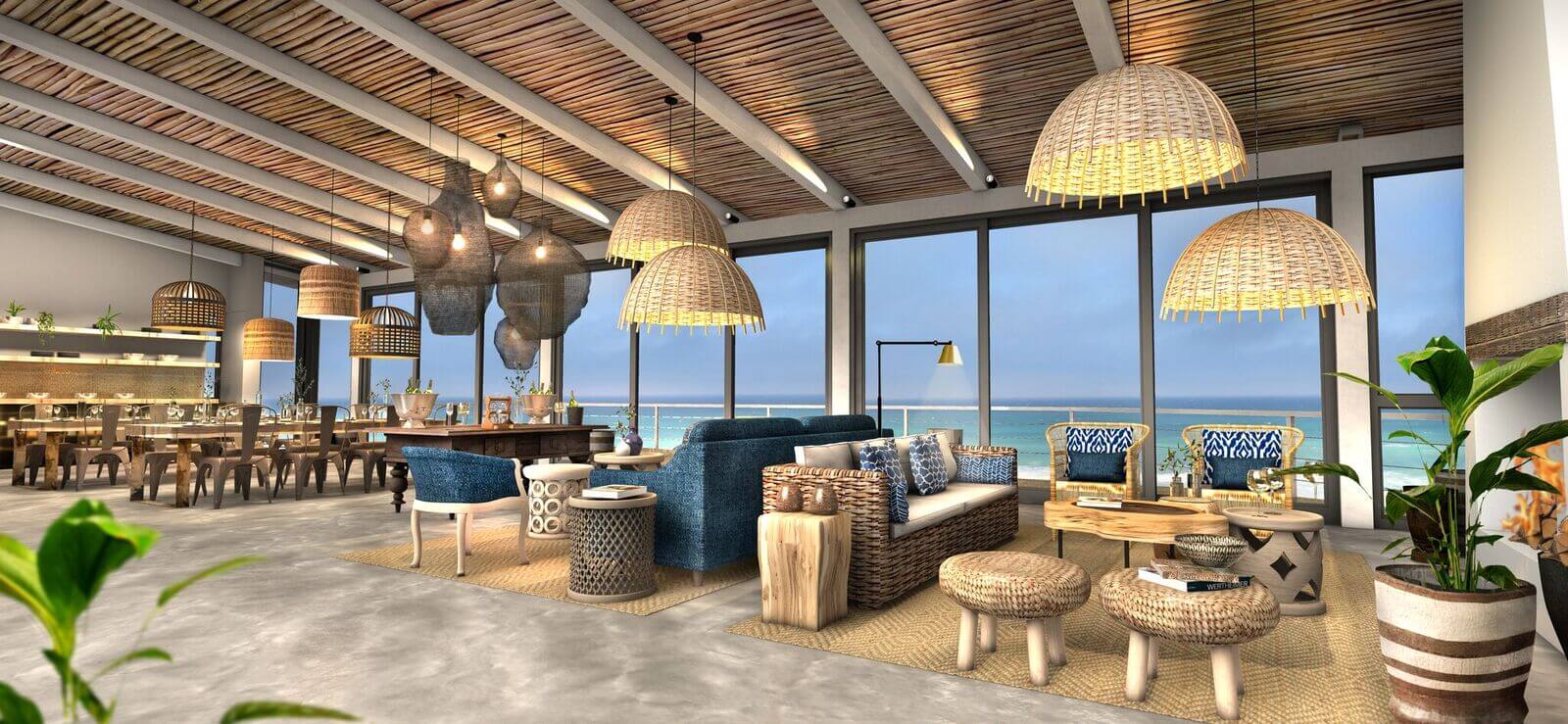
Lekkerwater Beach Lodge
Where: South Africa
When: April
Why Go: Natural Selection’s latest property is situated on the former South African president FW de Klerk’s retreat — it’s likely that he choose it due to the mesmerizing views of the Indian Ocean. Case in point, Lekkerwater actually means “the place of good water,” so it’s only apt that each of the seven rooms are located on a six-kilometer private beach. The De Hoop Nature Reserve is one of the most beautiful coastal reserves in Africa, so it’s a good home base for spying freely roaming Cape Mountain zebras, thousands of endemic plant species, tidal pools, and whales from July to November — come August or September and you could very well catch 400 to 600 whales at once!
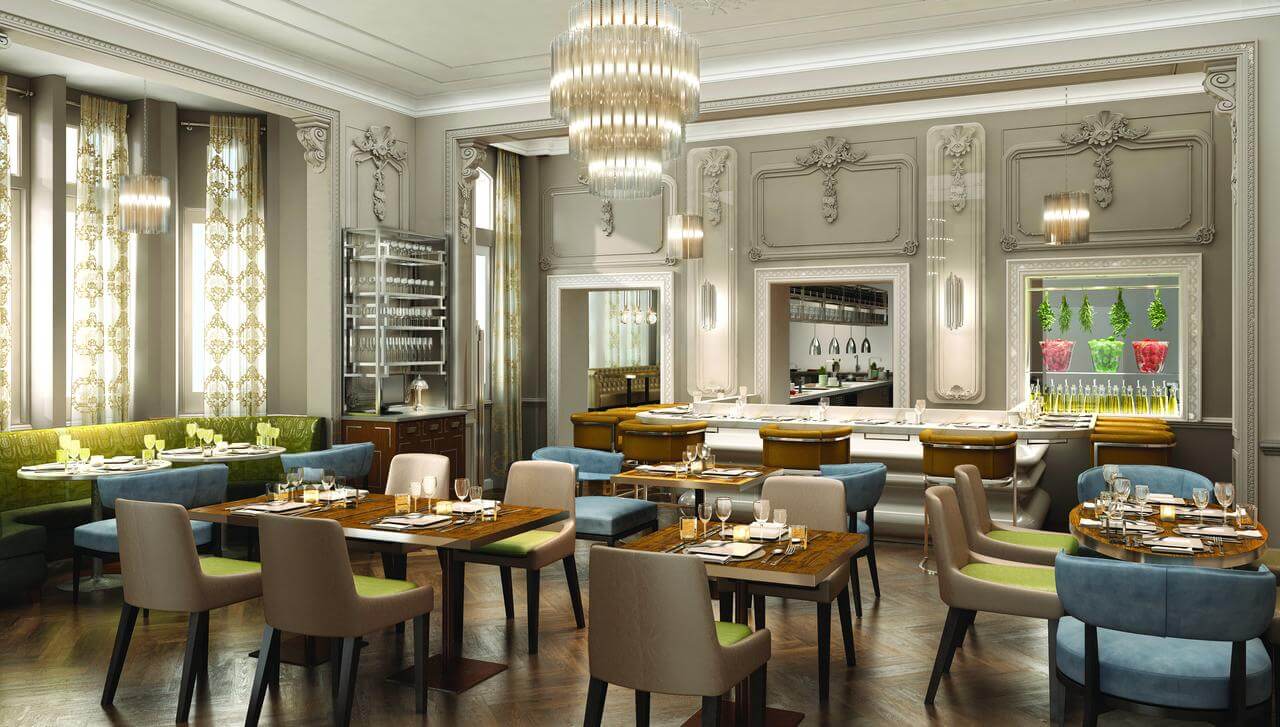
Belmond Cadogan Hotel
Where: London, UK
When: Early Spring
Why Go: Whether it’s celebrating the Golden Age of travel on the Venice Simplon Orient-Express or rubbing elbows with A-listers at Cipriani and Copacabana Palace, the Belmond group is the epitome of luxury. The latest venture to join their portfolio is housed within the former home of Lillie Langtry, mistress of the Prince of Wales (later Edward VII.) Later, when the residence became the Cadogan Hotel, it was the hideout of Oscar Wilde — though he was eventually arrested in room 118. Now, after a four-year overhaul, the property is primed to be one of the most luxurious in all of London. The rooms and suites still have the vibe of an opulent old home, but with modern-day decor and amenities. The property is perfectly positioned between Chelsea and Knightsbridge, so you’ll have plenty to see and do. Just don’t miss out on the on-site gems such as the stunning Cadogan Place Gardens (the same since 1886) and the Chelsea Physic Garden (1673), London’s oldest botanical garden. The hotel will provide blankets, deck chairs, board games, a picnic, a hands-on learning experience, or anything else to help you enjoy this impeccible outdoor Eden.
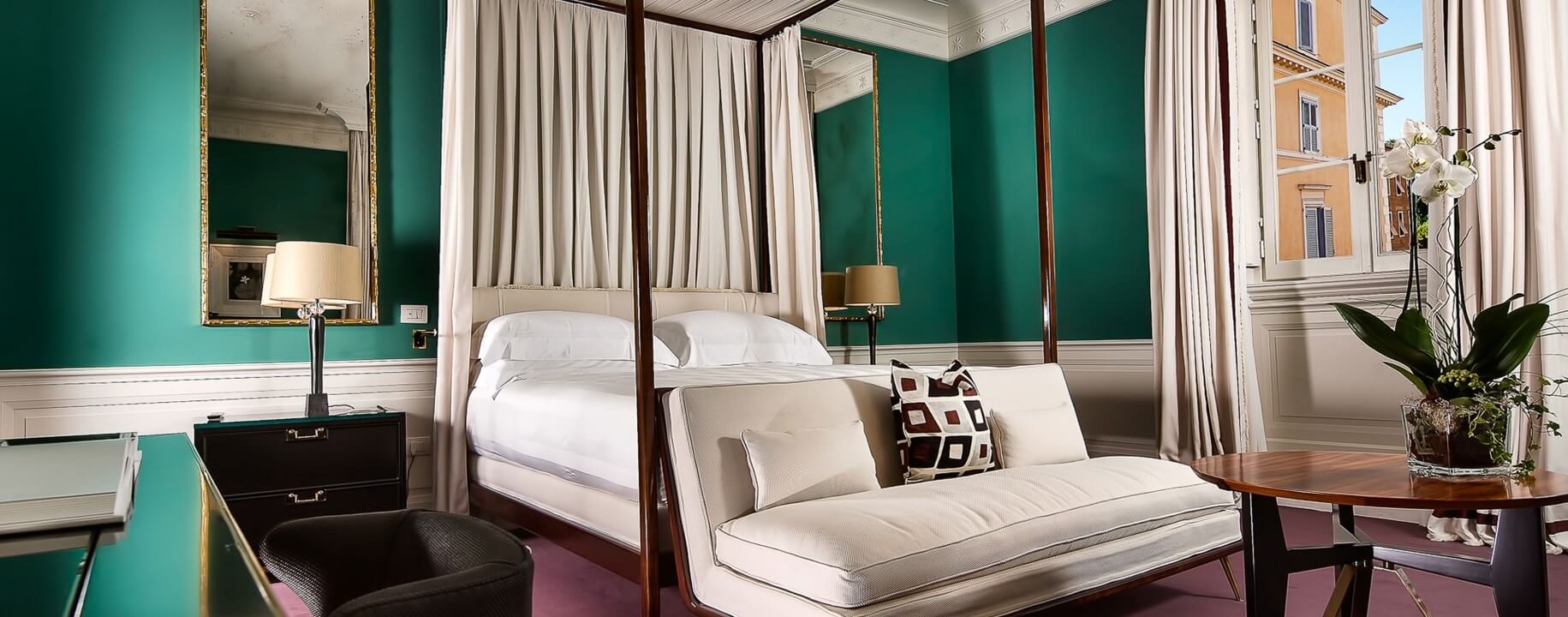
J.K. Place Paris
Where: Paris
When: May
Why Go: Those booking a springtime getaway to the City of Light are going to want to be one of the first to stay at what’s bound to be one of the newest Parisian hotspots — but with only 30 well-appointed rooms, you’ve got to act fast. Housed in the former European Consulate in the heart of Saint-Germain-des-Prés, the location literally took the hotel group five years to find. J.K.’s first non-Italian venture will still celebrate their roots (hint: Casa Tua restaurant) while pulling in enough French touches so you remember where you’re at. For example, amongst the custom made interiors by Michele Bonan, you’ll find one-of-a-kind items from flea markets across Paris. It wouldn’t be a luxurious French hotel without a spa (Sisley, in this case), and the indoor pool can serve as a mood-booster on those grey Paris days.
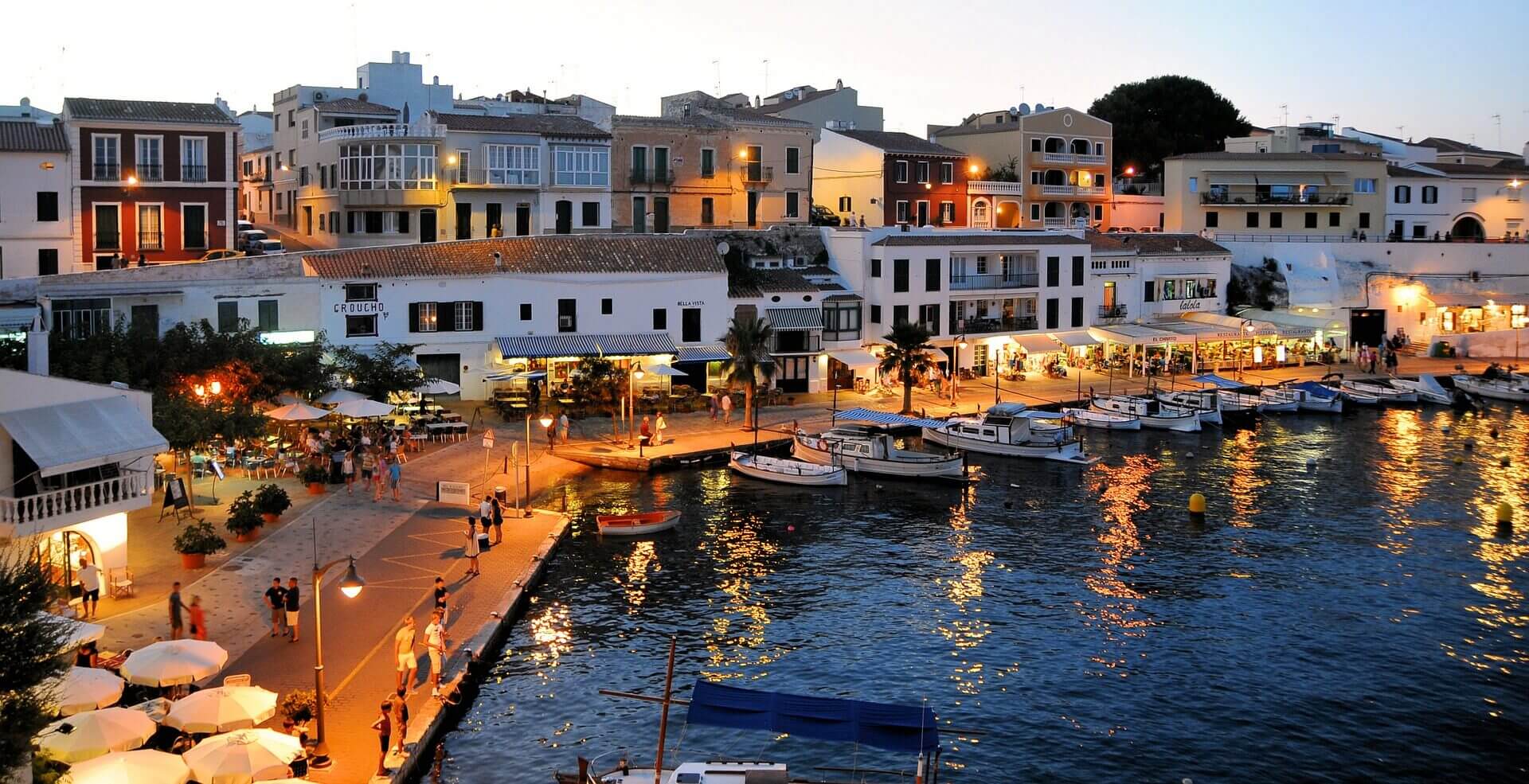
Experimental Menorca
Where: Menorca
When: June
Why Go: Childhood friends, the dynamic French trio (Oliver Bon, Pierre-Charles Cros, and Romée De Goriainoff — aka Experimental Group), are behind some of the most sought-after restaurants, drinking establishments, and hotels in Paris, London, New York, Verbier, and Ibiza — but now they’ve got Menorca on the brain. Unlike other islands, Menorca (a UNESCO Biosphere zone) is relatively unspoilt in comparison to its other sandy sisters, which is one of the many reasons why you should go. The 40-acre hotel — and first resort property for the Experimental Group —was previously a finca (country estate/ranch), yet it boasts a similar vibe to its extremely popular beach club in Ibiza. Of the 40 rooms, 9 will include private dipping pools for those quiet moments when you’re not catching the sunset with a craft cocktail (of course) at the beach bar.

Singita Kwitonda Lodge
Where: Rwanda
When: August
Why Go: What started as one lodge in 1993 has now morphed into 12 lodges and camps amongst five wilderness regions in three African countries. The family land (known as the Sabi Sand Game Reserve) is also home to copious community development projects, so it’s making the lives of those who live there better, as well as those who visit. Another reason that makes Singita Kwitonda Lodge unparalleled to none is that it rests on 178 acres of land on the edge of a national park — more than one-third of world’s remaining mountain gorillas reside here amongst the treetops (you’ll want to book a classic safari!). From traditional dry-stone walls built by locals to native planting, the six lodges and camps are designed with the environment and community in mind.

Casa Cook
Where: Chaina, Crete
When: Summer
Why Go: Did you know that Thomas Cook, the vacation package guru, was also an esteemed hotelier? That’s right, The company has properties in Mykonos, Kos, and Rhodes, but now it’s set to open up a more family friendly establishment in the ancient city of Chaina on the island of Crete. While the parents reclaim their sanity with yoga or a massage, the kiddos can explore the Neverland-inspired treehouse or partake of an educational yet entertaining cooking class, painting workshop, or sleepover experience — in a teepee no less! The newly built village-like property boasts 106 rooms and suites (as well as 16 family villas and 4 presidential villas) feel like a home away from home, Cretian style.
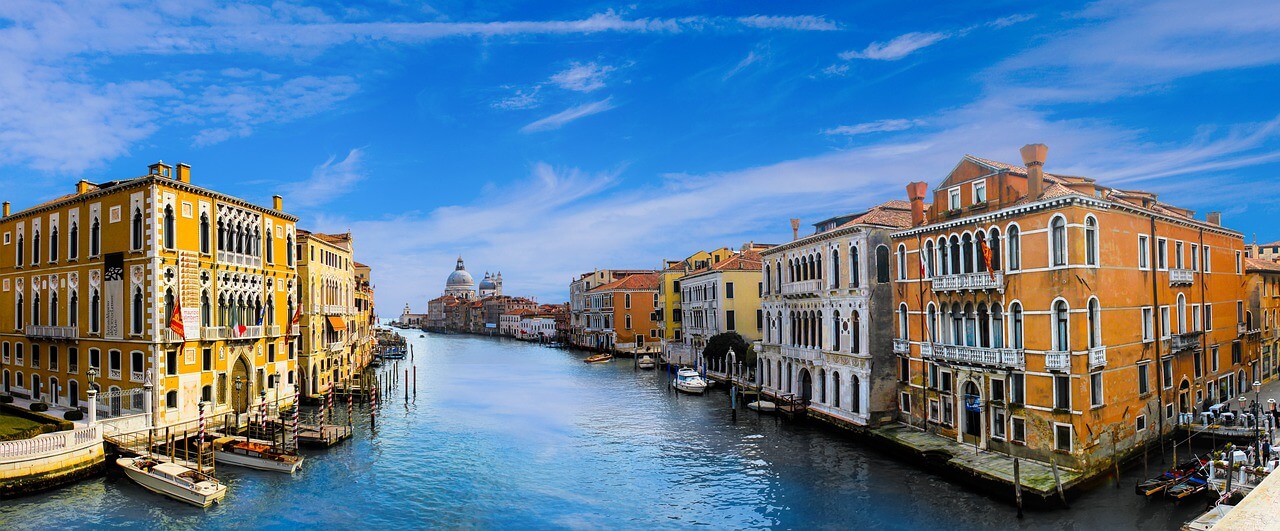
Experimental Venice
Where: Venice
When: September
Why Go: First there will be Menorca (see the aforementioned notes on Experimental Menorca), next there will be Venice, the hospitality group’s first Italian property. Upon visiting the area, the group became enamoured with a 17th century palazzo in the Dorsoduro district, an area that boasts more of a residential (read: less touristy) vibe. Nestled between two unassuming canals, the front of the 39-room hotel boasts a sweeping terrace that serves as the main restaurant and Experimental bar. The back of the property — accessible via a private garden — offers a private space where one can take breakfast or an afternoon libation. Thankfully, designer Dorothée Meilizchon retained many of the historic elements that make Venetian architecture within the property, yet you’ll see contemporary nods to remind you that it’s 2019.
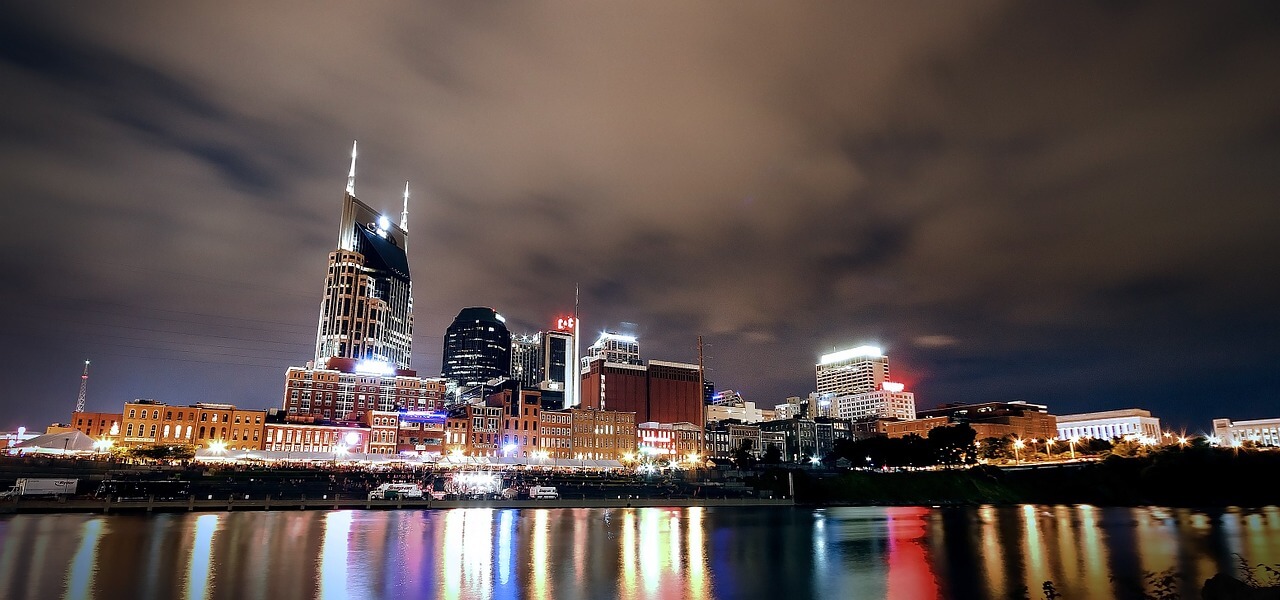
Margaritaville Nashville Hotel
Where: Nashville, Tennessee
When: Fall
Why Go: Nashville is the first urban retreat where you can waste away in Margaritaville. The 217-room hotel will feature all the amenities of a beachy resort, to include a rooftop relaxation and entertainment area, swimming pool, cabanas, and live entertainment when you’re not at Music City Center. For those in the timeshare arena, 52 Margaritaville Vacation Club by Wyndham timeshare condo suites are on offer.
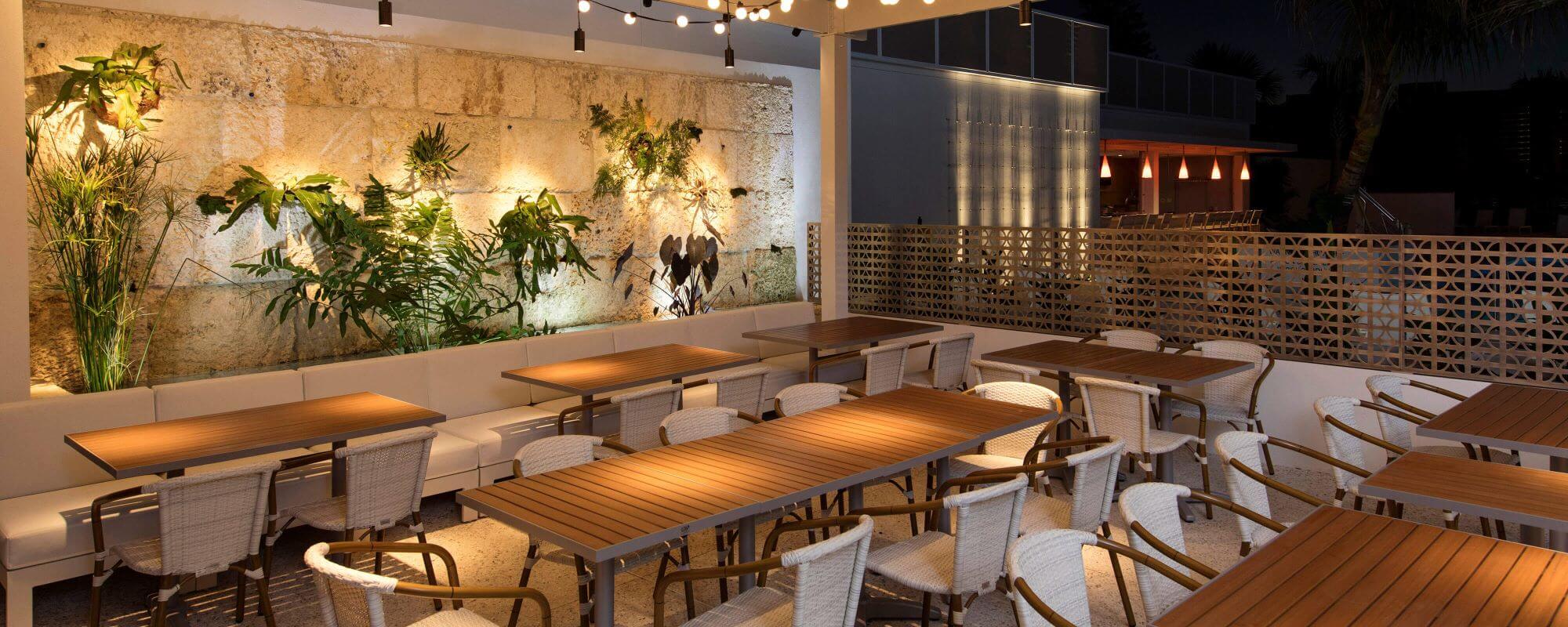
The Sarasota Modern
Where: Sarasota, Florida
When: December, 11
Why Go: Celebrating European design and 40’s modernism, this luxury 89-room luxury boutique hotel (and as the name suggests, it’s modern-chic) is a welcome addition to the urban Rosemary District. When you’re not in the mood for the crowded beach, take a dip in one of the two aqua pools (or the hot tub), complete with private cabanas. If business trumps pleasure, there’s 10,000 square feet of meeting space and Rudolph’s restaurant (an elegant 2,500 square-foot eatery) to impress colleagues and contacts alike.
Edinburgh’s top historic hotels, according to the experts
From abbeys and castles to ancient drinking holes, Edinburgh packs a lot of history into its square miles. So it’s no surprise that the city offers visitors the chance to stay in places where the past feels very much alive and tradition takes centre stage. In an age where the more Instagrammable a hotel, the better, the extravagant facades, period interiors, dark wood panelling and chandeliers of Edinburgh’s historic hotels make them an especially seductive getaway.
Our Experts’ Choice winners have all scored over 80 on TripExpert, representing the very best of the Scottish capital, according to expert sources. So check out our list of the top historic hotels in Edinburgh, for old-school charm combined with modern-day comfort, and for character without skimping on quality.
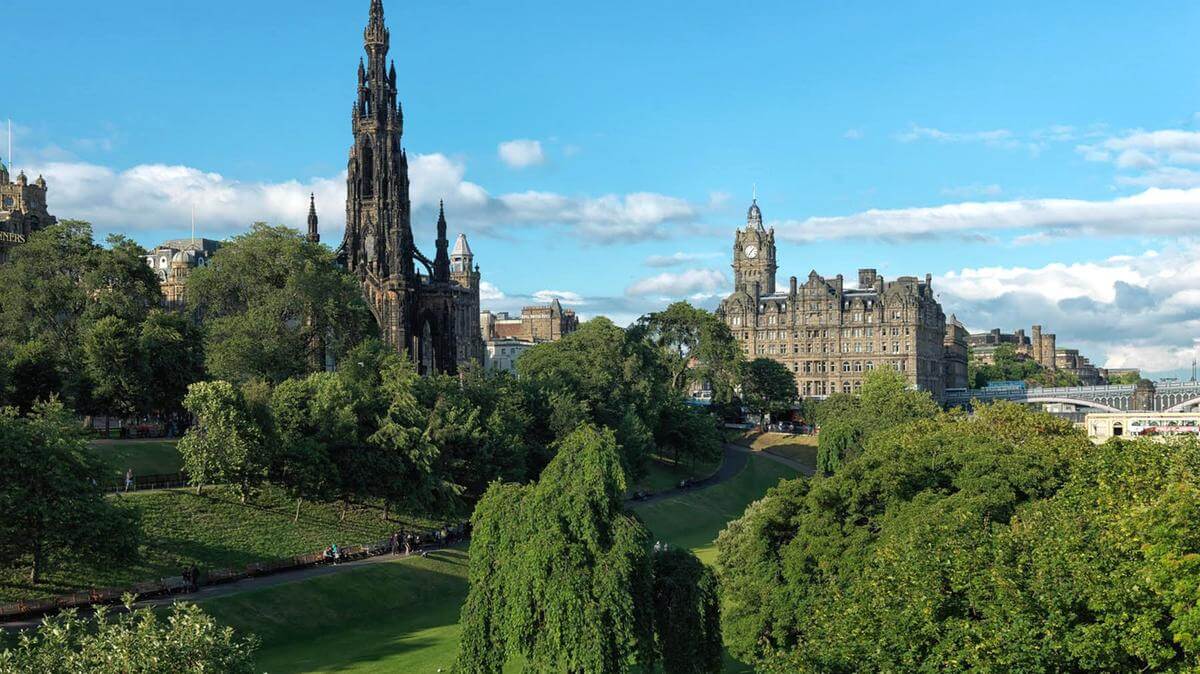
The Balmoral
Located at the east end of Princes Street, Edinburgh’s main thoroughfare, this top-end Edwardian hotel – with its iconic clock tower – is a true city landmark. A hotel of peerless class and quality whose motto “Nemo me impune lacessit”, or “no-one attacks me with impunity” would seem arrogant were it to come from any other hotel. From its lobby with its chandeliers, and towering columns to the 18th-century-style bedroomswith their marble bathrooms and castle views, Balmoral offers guests the luxury and elegance of a bygone era. Enjoy a dram in the whisky bar, boasting one of the largest selections in the world, or afternoon tea in the Palm Court where you might also participate in an etiquette class. But while it might be well-established, Balmoral far from stuck from in its ways. Ever keen to expand its offerings, as of November 2018, the hotel is offering personalised walking tours in partnership with Hunter, which guests can enjoy while wearing a pair of the classic wellington boot.
The Prestonfield
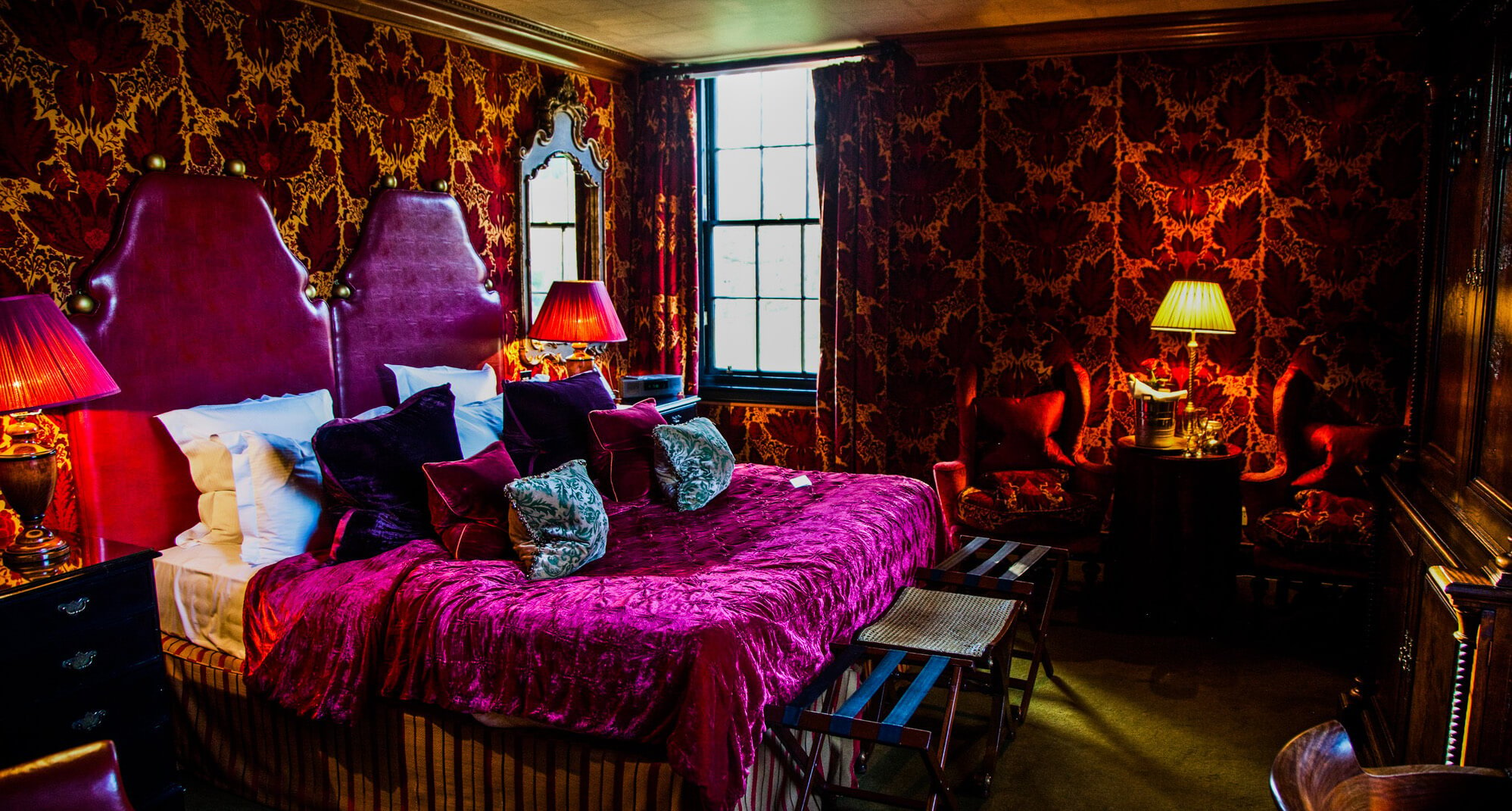
The Prestonfield
If it’s historic grandeur and unapologetic decadence you’re after, the Prestonfield is the place for you. Concierge sums it up nicely: “As far from minimal as you can possibly imagine, this restored Jacobean mansion is extravagantly rococo.” We’re talking bathrooms decked in Venetian glass mosaics, rooms overflowing with antiques, original tapestries, hand-painted wallpaper, and tassels and gilt galore. A mansion dating from 1687, its one-time owner Sir Alexander Dick can be thanked for introducing the rhubarb to Scotland in the 18th century – hence the name of the hotel’s restaurant. Today, the Prestonfield offers both an escape into an aristocratic past and a bolthole from the chaotic city-centre thanks to its 20-acre grounds complete with peacocks and Highland cattle. Fun fact for history buffs: Benjamin Franklin stayed here and was so taken with it he wrote a poem where he notes its “Neatness and sweetness all around”.
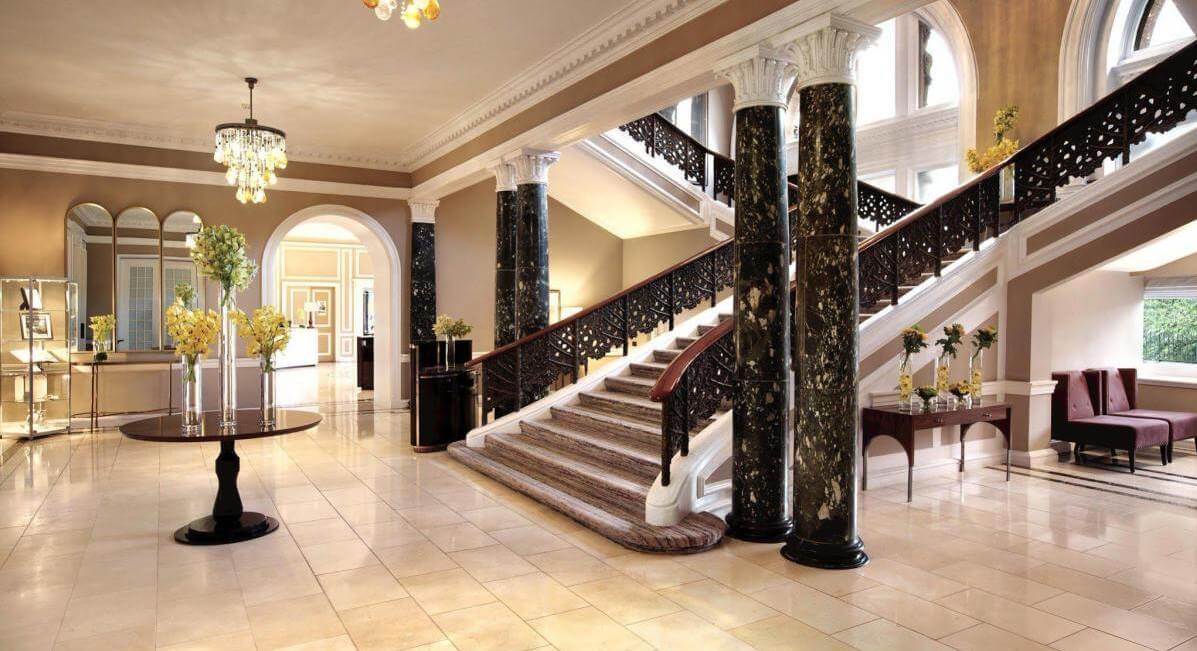
Waldorf Astoria Edinburgh – The Caledonian
This famous railway hotel is somewhat of a city relic, sitting at the west end of Princes Street and referred to affectionately by locals as “the Caley”. Taken over by Waldorf-Astoria in 2012, it was transformed from a slightly worn-down grande dame into something spectacular. And in the last year, it has been bought by Twenty14 Holdings, who plan to add a further 50 rooms to the hotel. Built between 1898 and 1902, today it features two exceptional restaurants – traditional French haute cuisine at Pompadour by Galvin, classic bistro fare at Galvin Brasserie de Luxe – and plenty of red sandstone, restored marble, and rooms in smokey blues and greys. Of particular note for history fans is the show-stopping Peacock Alley, formerly the train station concourse, as well as The Carriage Queen rooms, with fixings that recall Victorian railway carriages. You can also delight in knowing that previous guests have included the likes of Charlie Chaplin, Elizabeth Taylor and Bing Crosby.
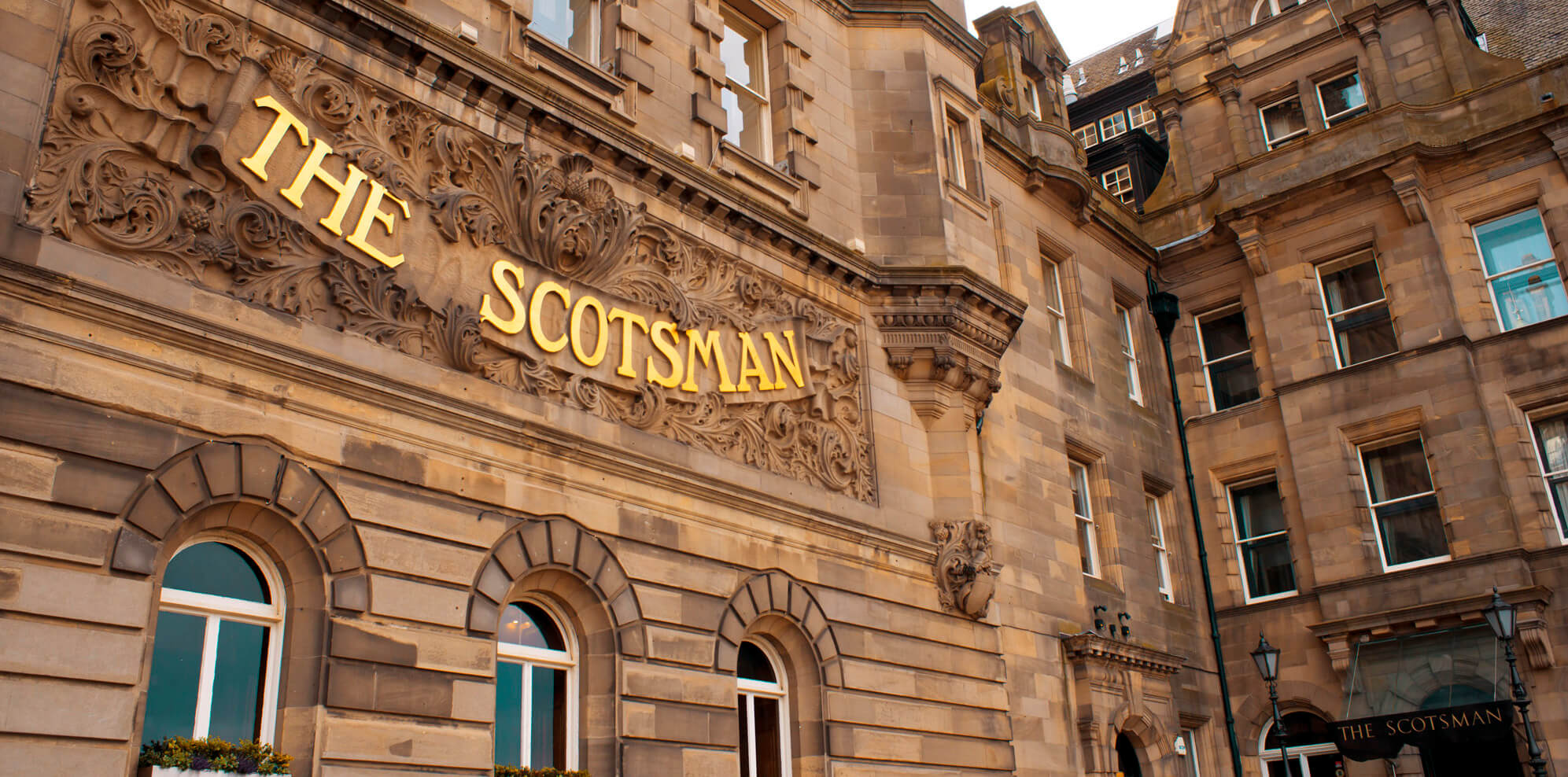
The Scotsman Hotel
This elegant fin de siècle building was formerly the headquarters of the ground-breaking national newspaper of the same name. Today The Scotsman is a luxury hotel but much of its allure lies in imagining the controversial headlines composed within its walls. Of equal charm is its magnificent sandstone façade and fairytale-esque towers. As Time Out puts it, there’s “No better place in Edinburgh to have a bath in a turret.” And its interior is also gorgeous: dark oak panelling, stained glass, columns, and a green-and-white marble staircase. Set over 9 floors, the hotel is a labyrinth that will lead you back to a time when its rooms were used as offices and its Penthouse Suite the pigeon loft. Top tip from Fodor’s: ask for an upper-story room with a view, both for peace and quiet and a visual treat. Rooms each include a Edinburgh Monopoly board game and a free daily copy of the Scotsman.

The Witchery by the Castle
For a heady hit of Gothic glamour, it doesn’t get better than The Witchery by the Castle. Nestled away beneath the castle in a merchant’s house dating from 1595, this is a portal directly back to the 16th century. Think oak-panels, low ceilings, wall hangings, red leather, and lots of candle-light. The suites have names such as The Turrent and The Inner Sanctum and are all as bewitchingly old-fashioned as you might hope: ornate four-poster beds, velvet, brocade, bathtubs designed for two, and here and there a suit of armour. Yes, it’s flamboyant and theatrical but everyone needs a break from the 21st century sometimes. Unfortunately this unique hideaway is no longer a secret. As Lonely Planet points out, you’ll have to book several months in advance to be sure of getting a room.
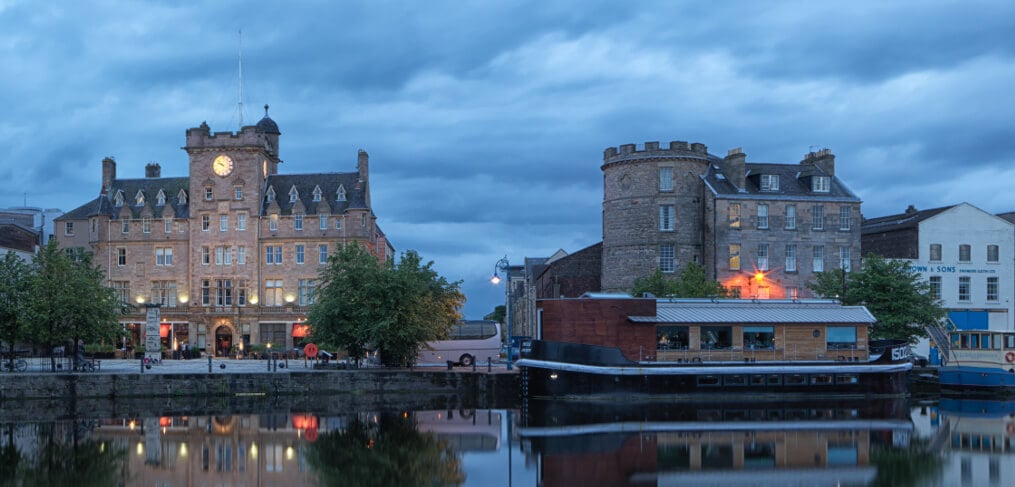
Malmaison Hotel
The Malmaison, set in a former Seamen’s Mission in Leith, is a historic building with a firmly contemporary interior. Located in the docklands area right on the seafront, this hotel is ideal if you’re craving broodingly beautiful views over the water. A majestic 19th-century building that used to be part of the Christian welfare charity, Missions to Seamen, it could house up to 56 sailors at a time – more, if there was a shipwreck. It was also a ‘house of ill-repute’ at one time – or at least legend has it. Today, however, it’s a design hotel, and part of the on-going gentrification of this part of the city as it transforms into a sophisticated and elegant waterfront hub. Here you’ll be close to many of Edinburgh’s culinary hotspots, including The Kitchin and Martin Wishart, both Michelin-starred and within walking distance of the Malmaison.
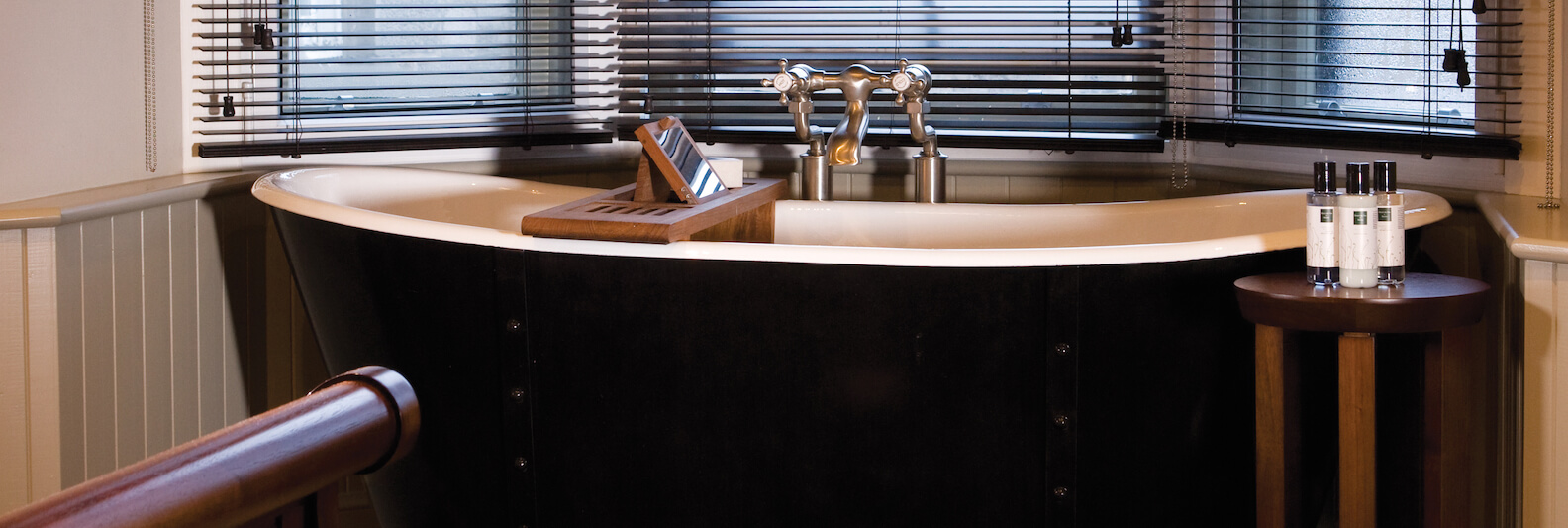
Hotel du Vin & Bistro
Part of the Du Vin chain, which has built its name on the refurbishing of unusual buildings, this hotel is as characterful as they come. Situated in a former Victorian poorhouse, which then became an asylum, this 47-room hotel is steeped in intriguing history. While the furnishings might be understated – with the occasional smattering of tartan – you can be sure the building’s past was far from uneventful, and there are some rather dark reminders of its former incarnation in the walls around the hotel. Nevertheless, the main emphasis of the hotel is on wine, with rooms named after different wines and champagnes, monthly wine-tasting sessions and a wine glass chandelier in the reception. Meanwhile, at the heart of the hotel is a bistro serving traditional Scottish fare and an overhanging mezzanine bar. Or, if you want to head out, the hotel is surrounded by great pubs and restaurants as well as many popular city attractions.
Marseille’s top 5 attractions, according to the experts
Once the main port connecting France to its North African possessions, Marseille has long been a melting pot of cultures. The days of colonial rule have come and gone, but the city remains as vibrant and multicultural as ever. These 5 attractions represent the very best of old and new Marseille, based on recent reviews in major travel guides, magazines, and other respected publications.
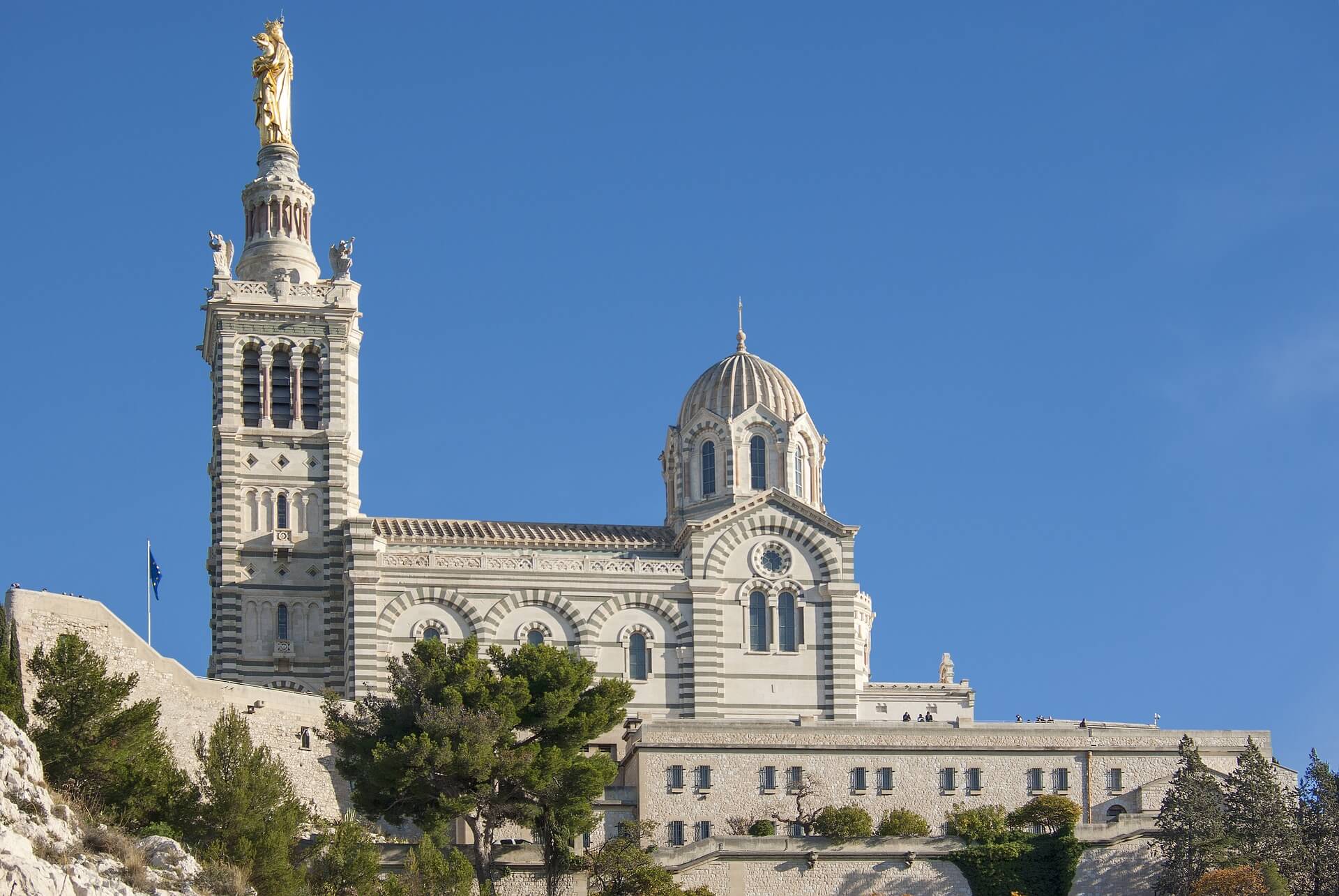
Basilique Notre-Dame de la Garde
Perched on the highest natural point in Marseille, the Neo-Byzantine church of Notre-Dame de la Garde numbers among the most prominent and important landmarks in the city. This mid-19th century church is dedicated to the Virgin Mary, the protectress of sailors and fisherman, and of the entire city. The vaulted crypt features an elegant statue of the Virgin supporting the Christ Child with one hand and proffering a bouquet of flowers with the other. The upper sanctuary is covered with soaring domes decorated with glittering mosaics. Don’t miss the bell tower, which offers panoramic views of the city!
Old Port
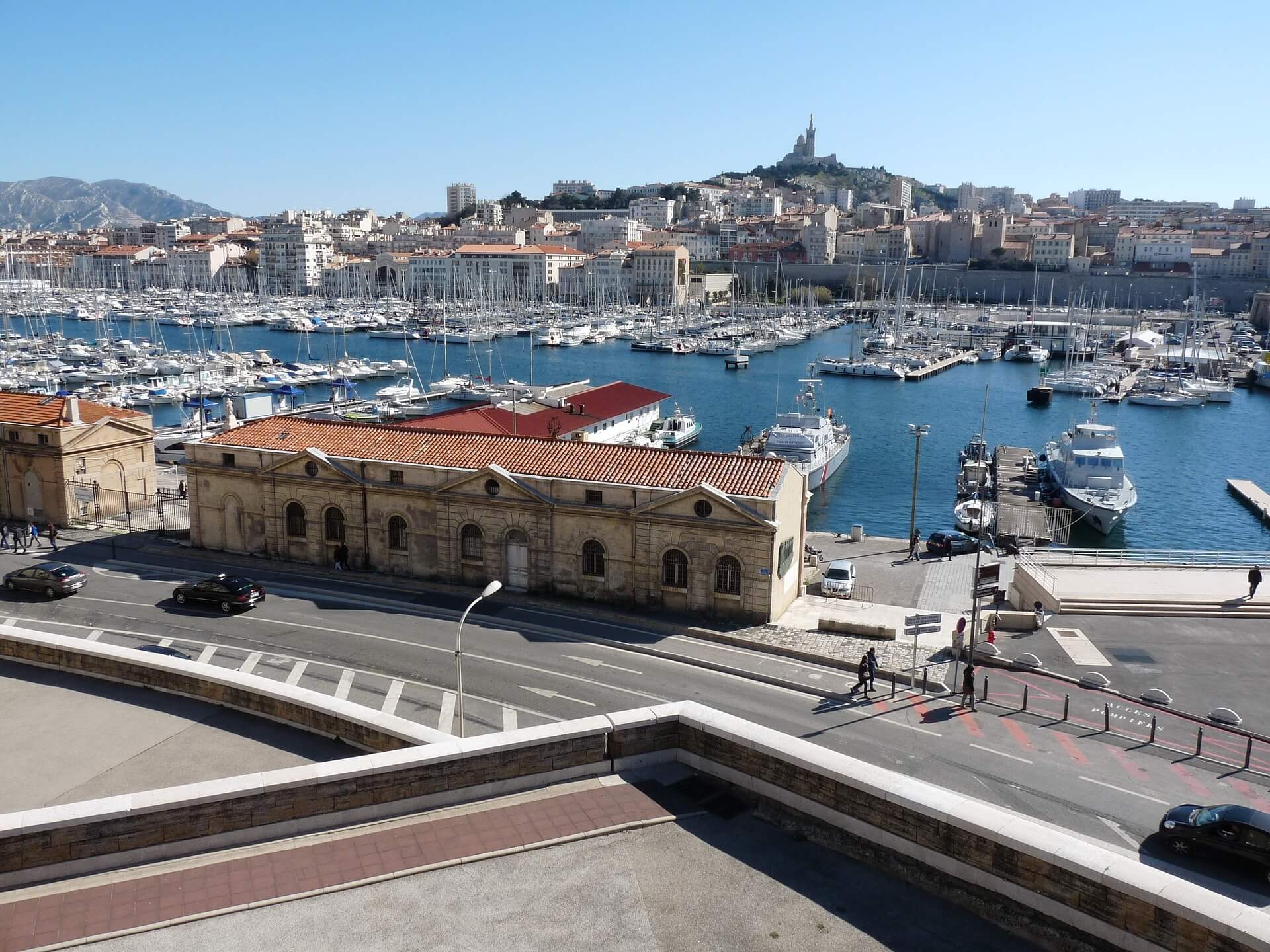
Old Port
Flanked by the Panier (Old Town) on one side and Notre-Dame de la Garde on the other, the picturesque Old Port served as the commercial center of Marseille for over two millennia. The main commercial docks have since been moved, but the port remains a thriving harbor for fishing and pleasure boats alike. Visit the artisanal shops selling Marseille soap, sample locally-made pastis, or simply watch the world go by at the many restaurants, cafés, and bars lining the basin. Early birds can enjoy the vast array of fish on offer at the local fish market.
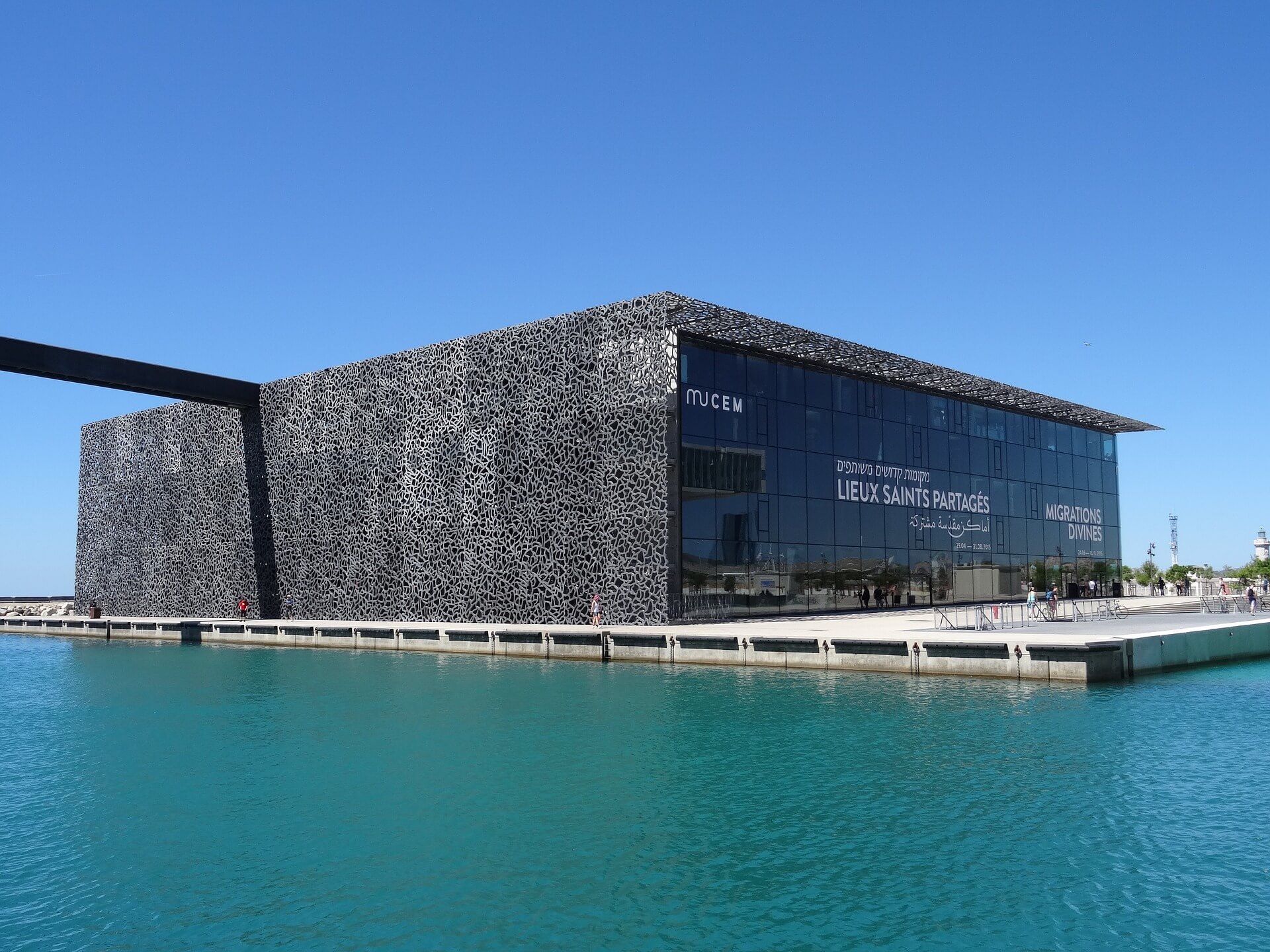
Mucem
Devoted to the great civilizations of the Mediterranean, this new museum occupies three distinct buildings: the historic Fort Saint-Jean, the ultra-modern J4, and the Center for Conservation and Resources, which is located in the Belle de Mai area of the city, away from the other two sites. On offer are major exhibitions, public lectures, and films, as well as a pleasant café with unrivaled views of the sea.
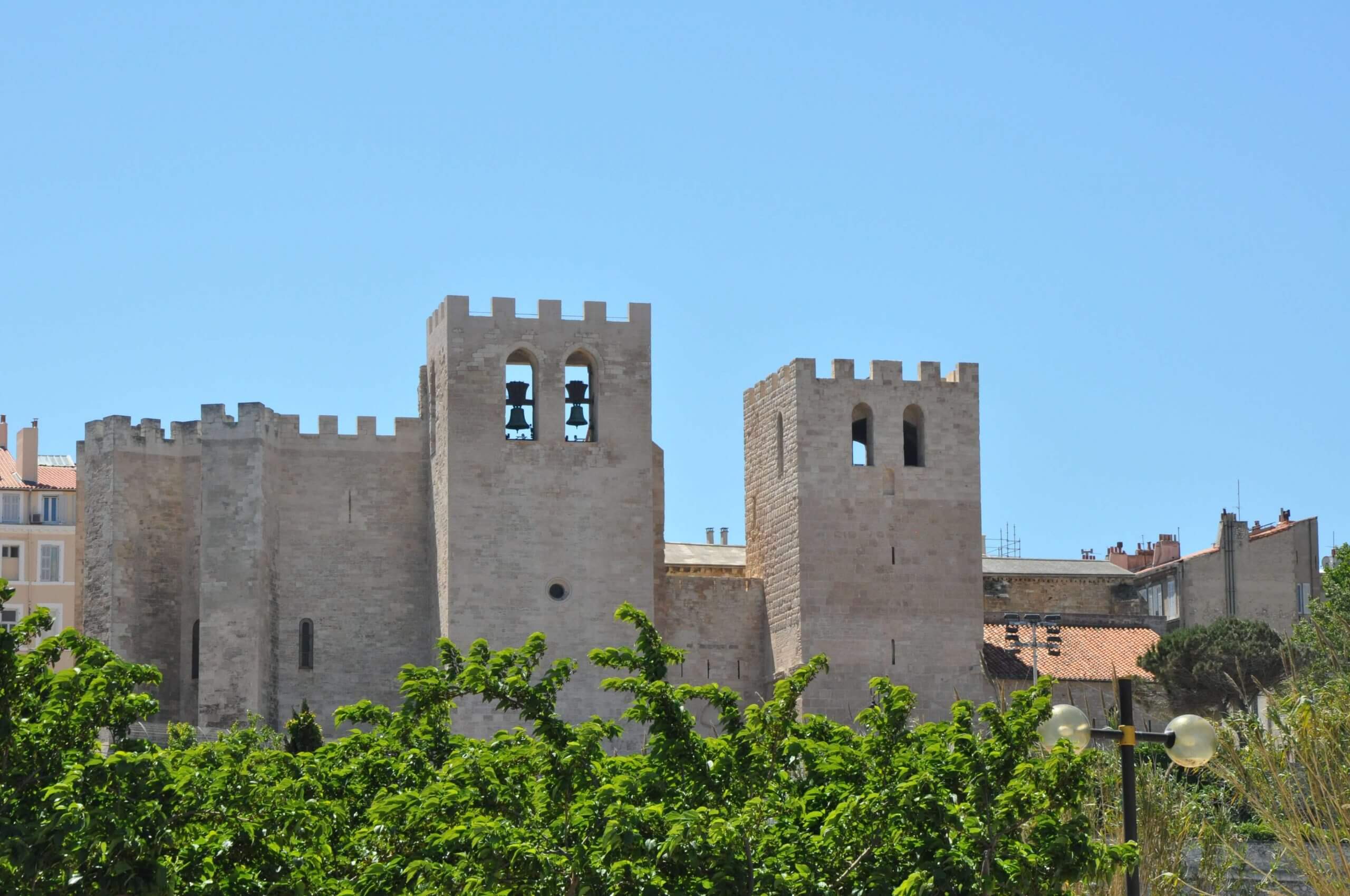
Abbaye Saint-Victor
The abbey of Saint-Victor is one of the oldest monuments in Marseille. Dating primarily to the 12th century, the fortified complex reportedly marks the burial site of Victor of Marseille, a Roman soldier martyred in late antiquity for denouncing idolatry. The massive stone structure houses the relics of Victor, as well as those of other local saints. Of particularly note is the collection of Paleochristian sarcophagi in the crypt and the ornate 17th-century organ in the upper church.
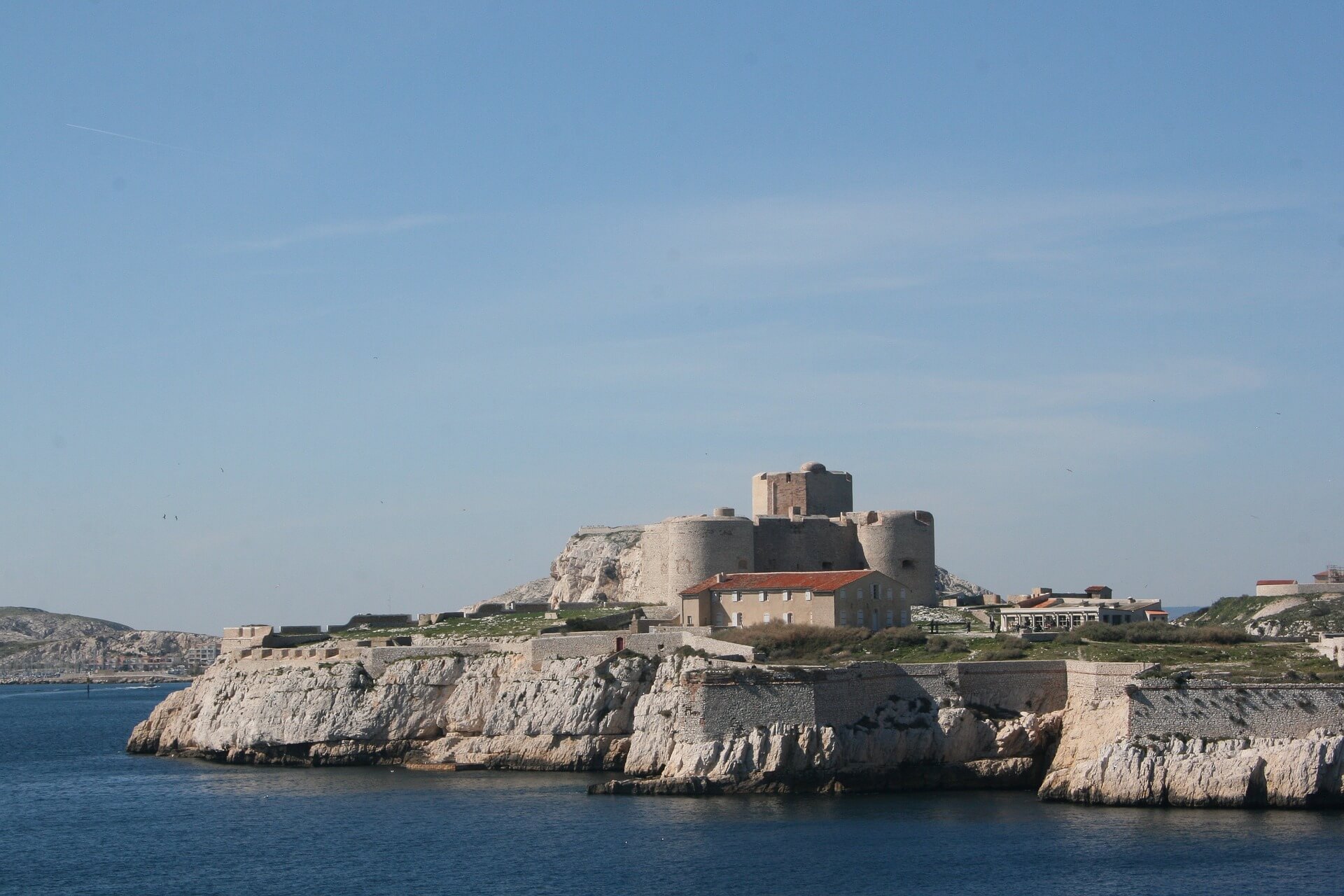
The Château d’If
Located less than a mile offshore in the Bay of Marseille, the brooding Château d’If is just a 20-minute ferry ride from the Old Port. This former prison and walled fortress was once home to France’s most reviled criminals, including enemies of the state and religious offenders. It rose to fame in the mid-19th century, when Alexandre Dumas published his renowned novel, The Count of Monte Cristo. The fort preserves the fictional count’s prison cell to this day.
Dubai Hotel Winners: Experts' Choice 2019
From humble beginnings as a Gulf trading center to one of the world’s most glamourous travel destinations, Dubai is home to some of the world’s tallest and headline-grabbing hotels. With over 100,000 hotel rooms to choose from, each catering to a certain budget, taste, and travel preference, we round up the 5 best hotels in the city.
These hotels, as chosen by TripExpert, boast the city’s beautiful landscapes and showcase Dubai’s rich Arabic culture.
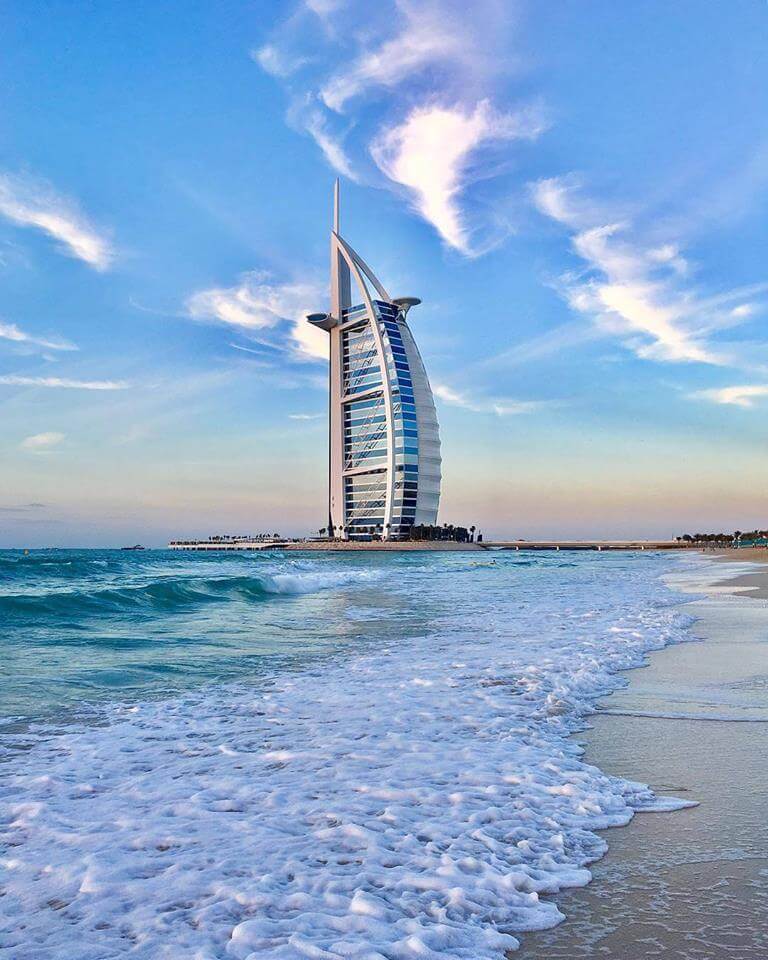
Burj Al Arab
Burj Al Arab is the world’s first seven-star hotel and the fifth tallest hotel in the world. This sail-shaped hotel has a collection of 202 duplex suites with 24-hour personal butler service, Hermès toiletries, and a fleet of Rolls Royce. “The hotel prides itself on its ability to satisfy even the pickiest guest, and so has many services in addition to its standard leisure programs” according to Fodor’s Travel.
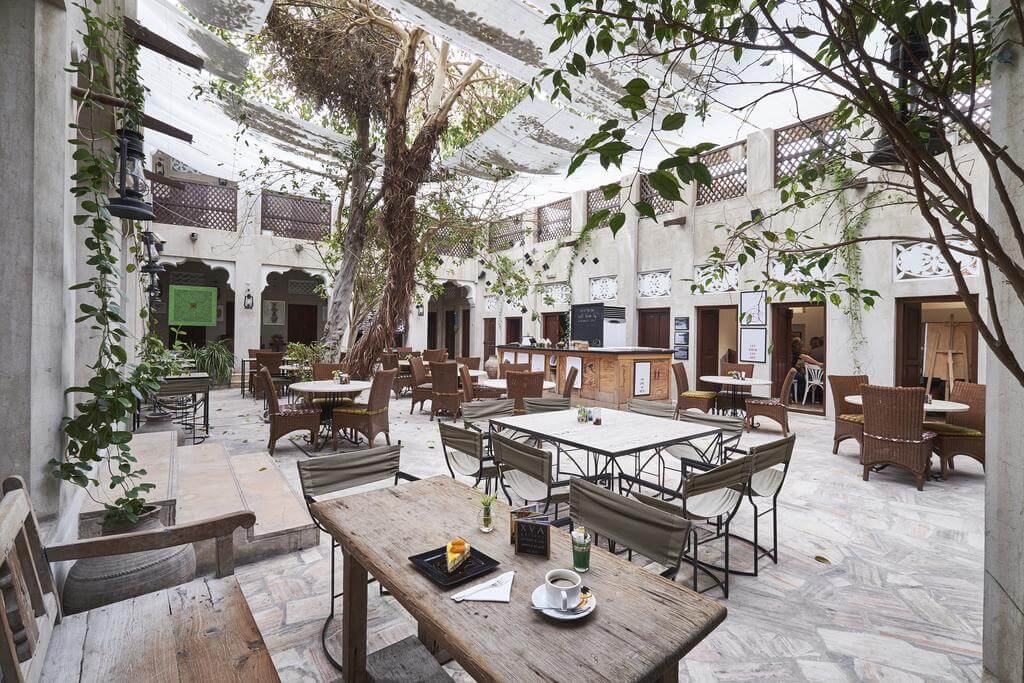
XVA Art Hotel
Ideal for art and history lovers, the XVA Art Hotel is situated in Al Fahidi and features interiors by top Middle Eastern artists. Each room is individually themed, but their Gallery Deluxe features tall, wood-beamed ceilings, stone floors, and white walls decorated with art. Enjoy the restaurant’s vegetarian dishes in one of their shaded courtyards, or explore the hotel’s surrounding neighbourhood for more traditional Arabic delicacies.
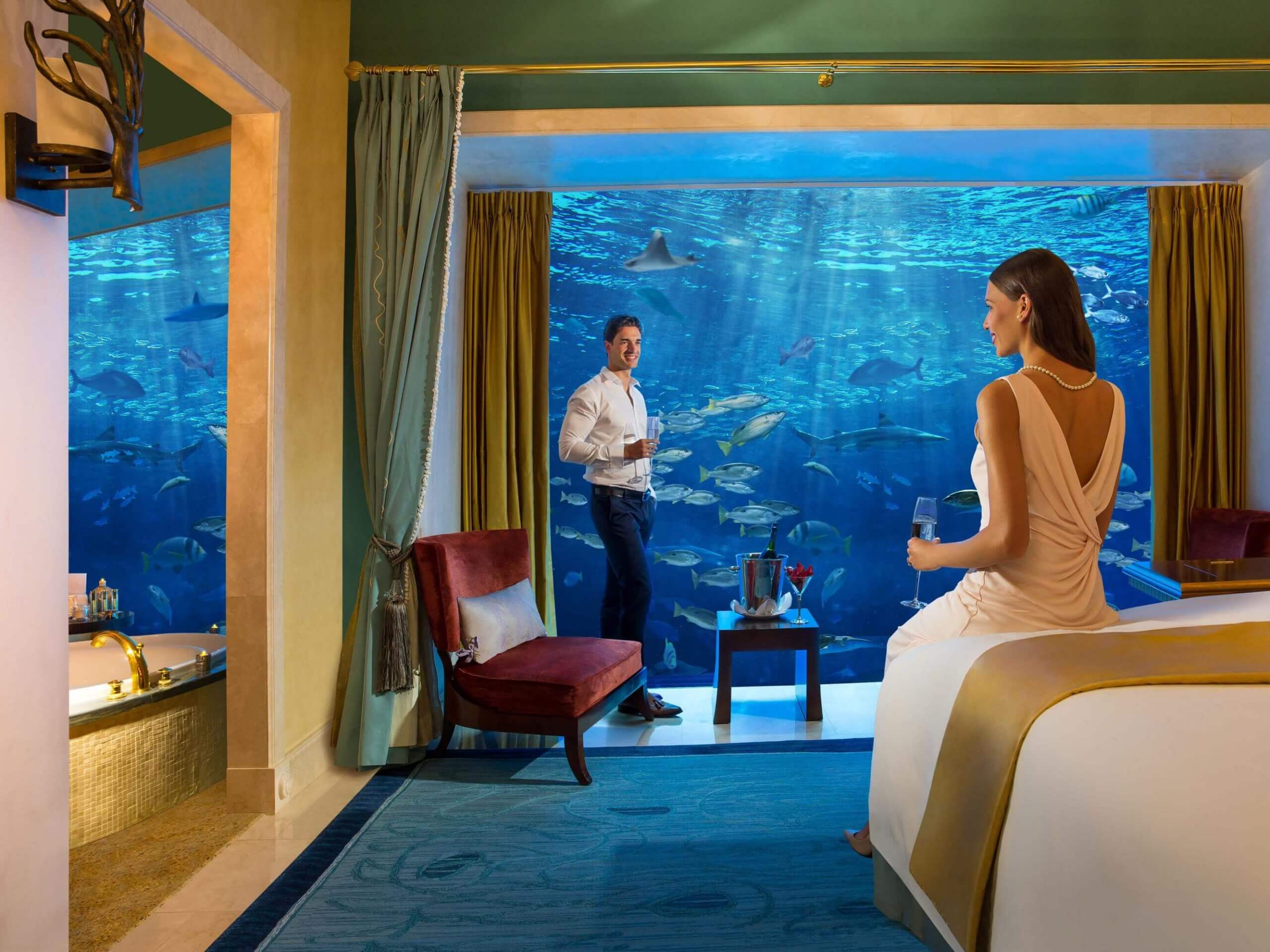
Atlantis the Palm
Atlantis the Palm is the perfect spot for a romantic weekend with real ocean experience. Here, you can stay in an underwater aquarium suite and enjoy a mesmerizing view of sharks, stingrays, and other 65,000 sea creatures swimming right in front of your eyes. Don’t skip the massive waterpark or the Lost Chambers aquarium for a more interactive experience and a refreshing yoga session in the morning.
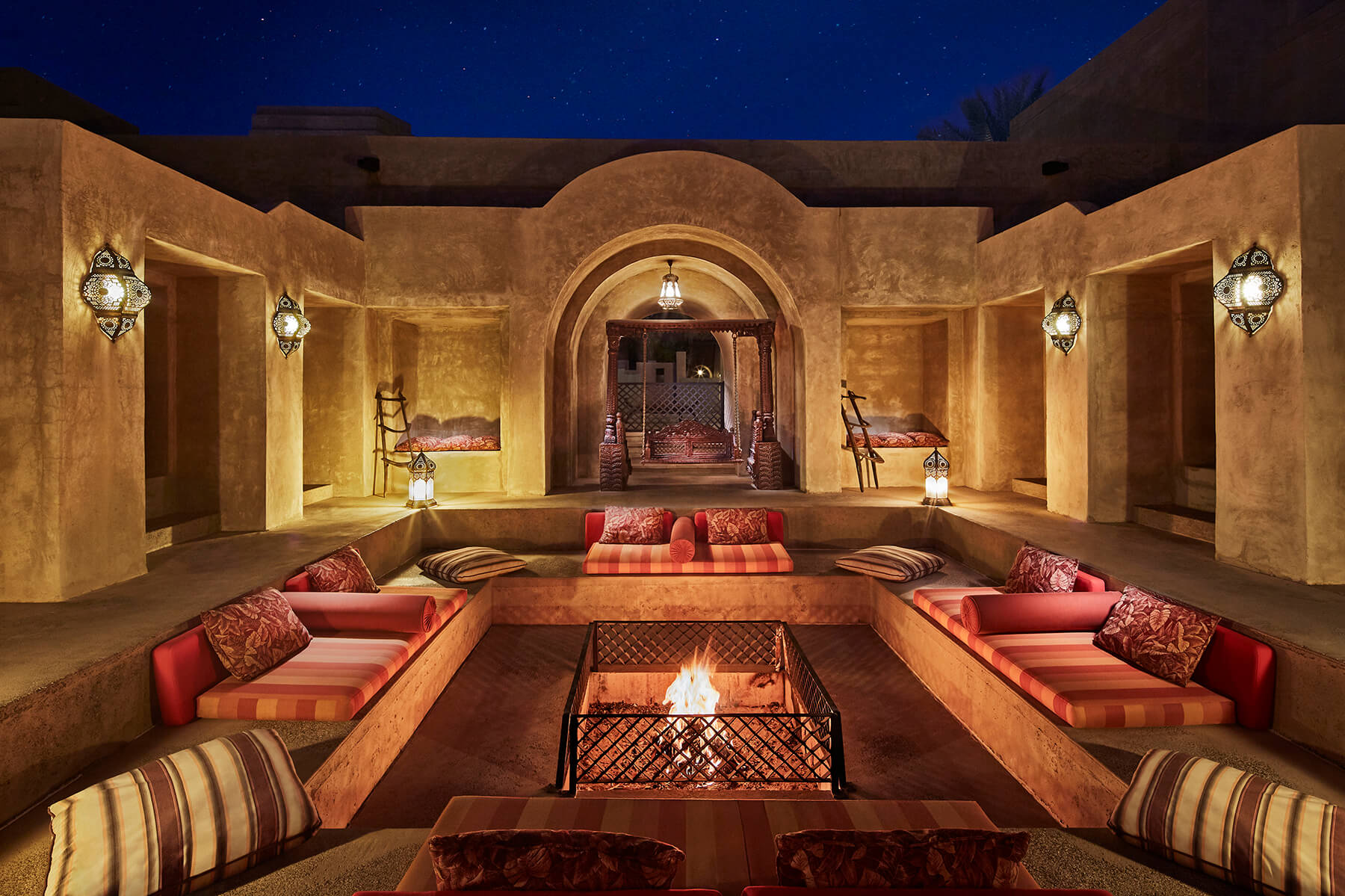
Bab Al Shams
Escape the big city with a stay at Bab Al Shams, a low-slung desert resort closely resembling an Arabian fort. The resort features tranquil gardens and multiple pools, and offers various activities like cycling, horseback riding, and archery. Rooms are specifically styled to showcase the Arabian culture, with draped tapestries, colourful rugs, ornate lanterns, and a comfortable majilis seating area. Bab Al Shams’ Hadeerah restaurant offers an extensive buffet, belly-dancing, and traditional Arabic show.
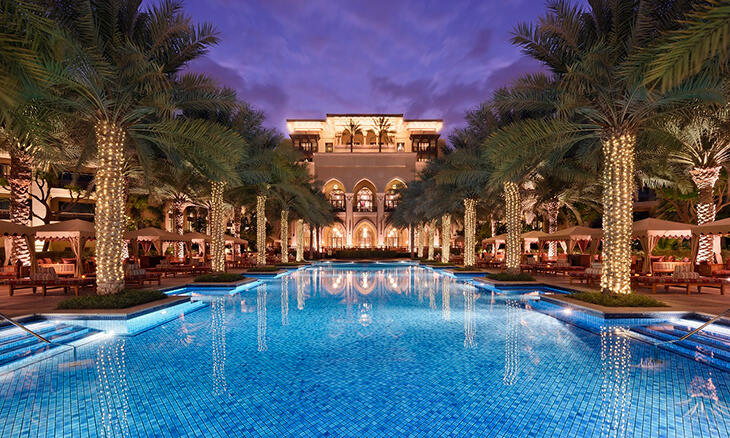
Palace Downtown
Situated on a lake opposite the Burj Khalifa, Palace Downtown features a view of the world’s largest choreographed fountain system. The hotel entrance is lined with towering palm trees, and its guests rooms are decorated in a contemporary Middle Eastern style. Honeymooners visiting the Palace Downtown are usually treated with rose petal-adorned beds and other surprise treats.
Professional reviewers name Cincinnati’s top hotels
Long a center of commerce and culture, Cincinnati’s compact downtown is home to the picturesque city’s best hotels. The downtown central business district features an enviable collection of top-notch hotels, all within a short walk of world-class attractions, nationally-renowned restaurants and the headquarters of business powerhouses like Macy’s and consumer goods giant Procter & Gamble.
From the trendy 21c Museum Hotel to the historic Hilton Cincinnati Netherland Plaza, the Queen City offers discerning travelers an excellent choice of distinctive places to stay. A full list of our winners is available on our Cincinnati destination page. Scroll down for profiles of our top five hotels, according to experts.
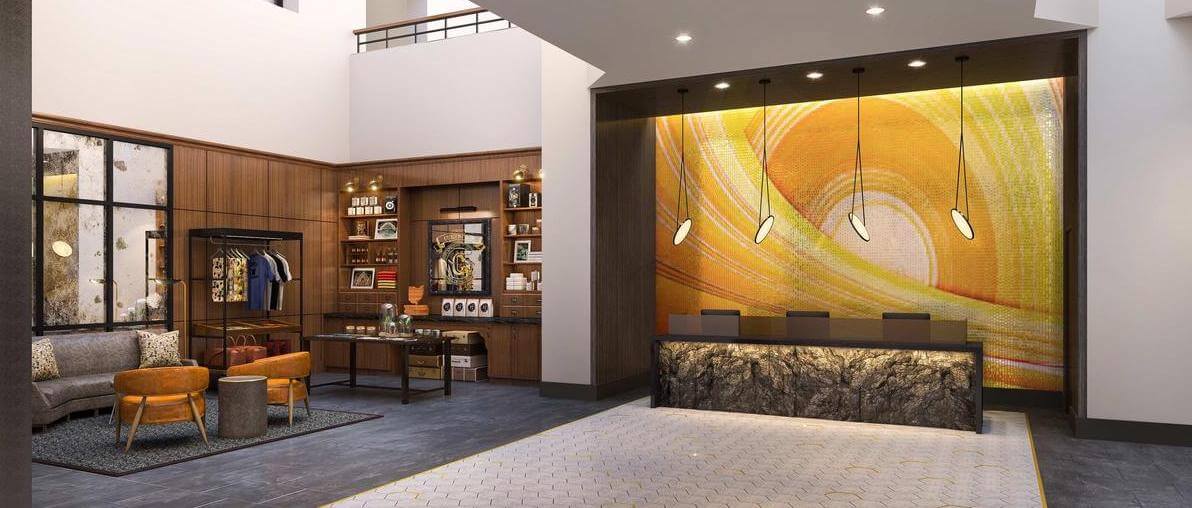
Cincinnatian Hotel
The Queen City’s highest-rated hotel, the Cincinnatian, is housed in a striking French Second Empire building that has been a hotel since 1882. The Cincinnatian became part of the Curio Collection by Hilton following an extensive renovation that debuted in late 2018. The luxury boutique property replaced its long-running, AAA Four-Diamond restaurant (The Palace) with the more contemporary and casual Brick & Mortar that features specialty cocktails and American classics with a creative twist. New artwork throughout the hotel includes custom-made mosaic tile in the lobby that replicates the spectacular ceiling at the city’s historic Union Terminal. Rooms at the service-centric Cincinnatian also were updated, and some include bathrooms with heated floors and whirlpool tubs.
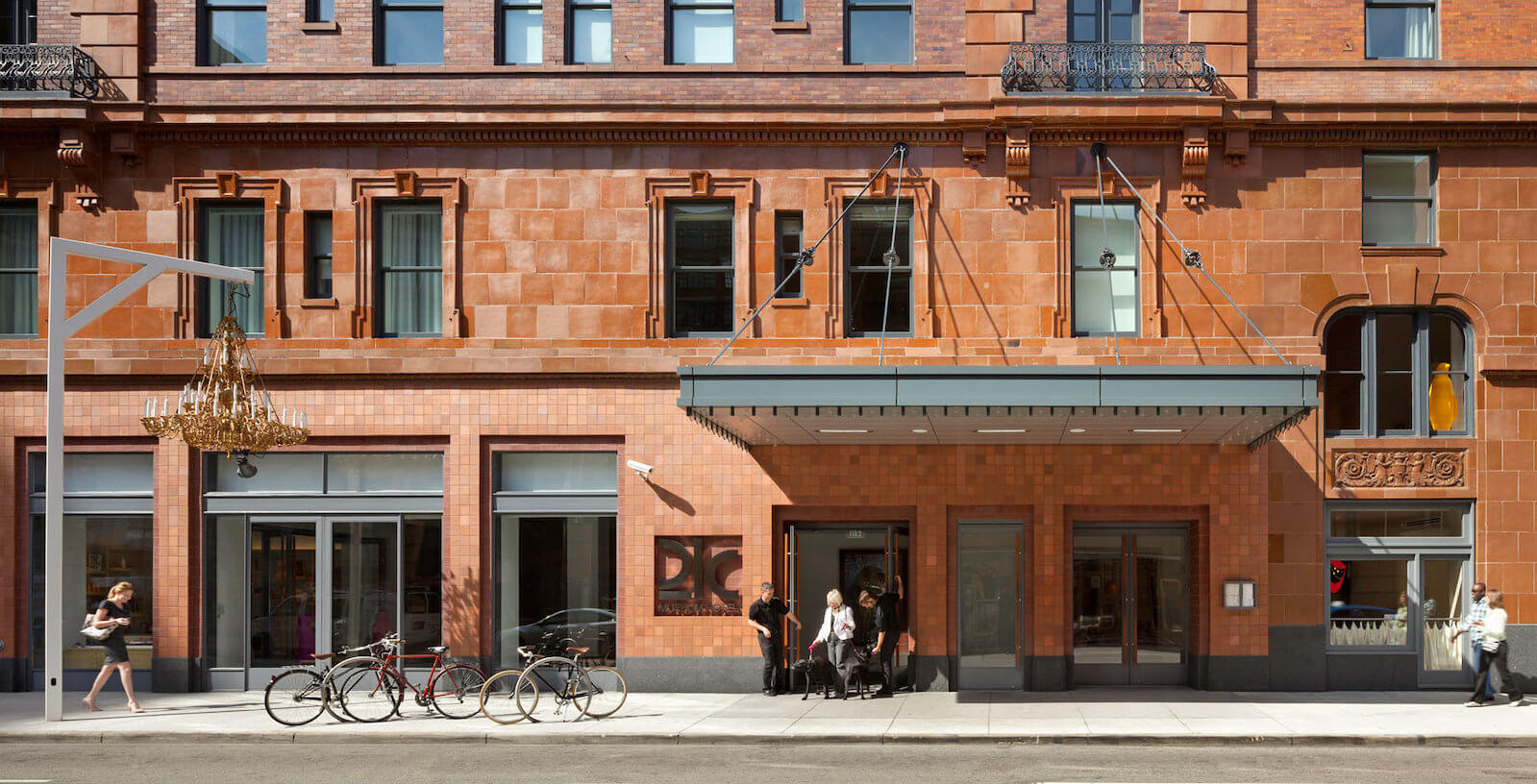
21c Museum Hotel
The 21c Museum Hotel opened in late 2012 and quickly staked its claim among Cincinnati’s best hotels, making Condé Nast Traveler magazine’s Hot List in 2013. Housed in the century-old Hotel Metropole building across the street from the bustling Aronoff Center for the Arts, the 21c is a visual feast that showcases an impressive collection of contemporary art. Gayout likens a stay at the 21c to “spending the night in a trendy art gallery.” Amenities include a full-service spa, rooftop bar and the popular Metropole restaurant that features seasonal, wood-fired cuisine. Rooms in the upscale boutique hotel are decorated in a chic and contemporary style with original art and Nespresso machines.
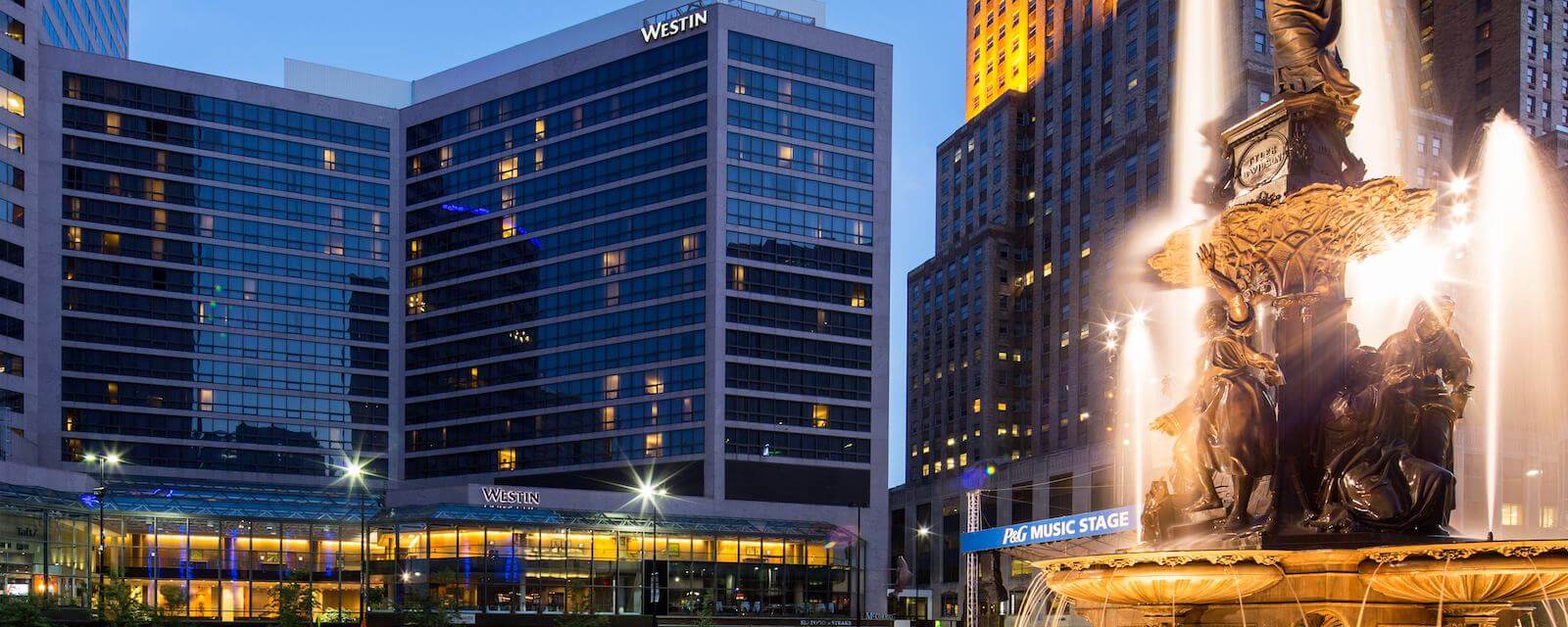
The Westin Cincinnati
The Westin Cincinnati occupies a prime position overlooking Fountain Square, the vibrant heart of the city that’s surrounded by restaurants and shopping. Upgraded in 2015, the Westin’s spacious rooms sport a sophisticated earth tones décor and bathrooms with marble floors and rainfall showers. The Westin is connected to an office complex and within sight of the Procter & Gamble world headquarters, making it a popular hotel for business travelers. A rooftop pool and fitness facility, 24-hour room service and a lobby bar with great views of downtown are among the classy hotel’s amenities.
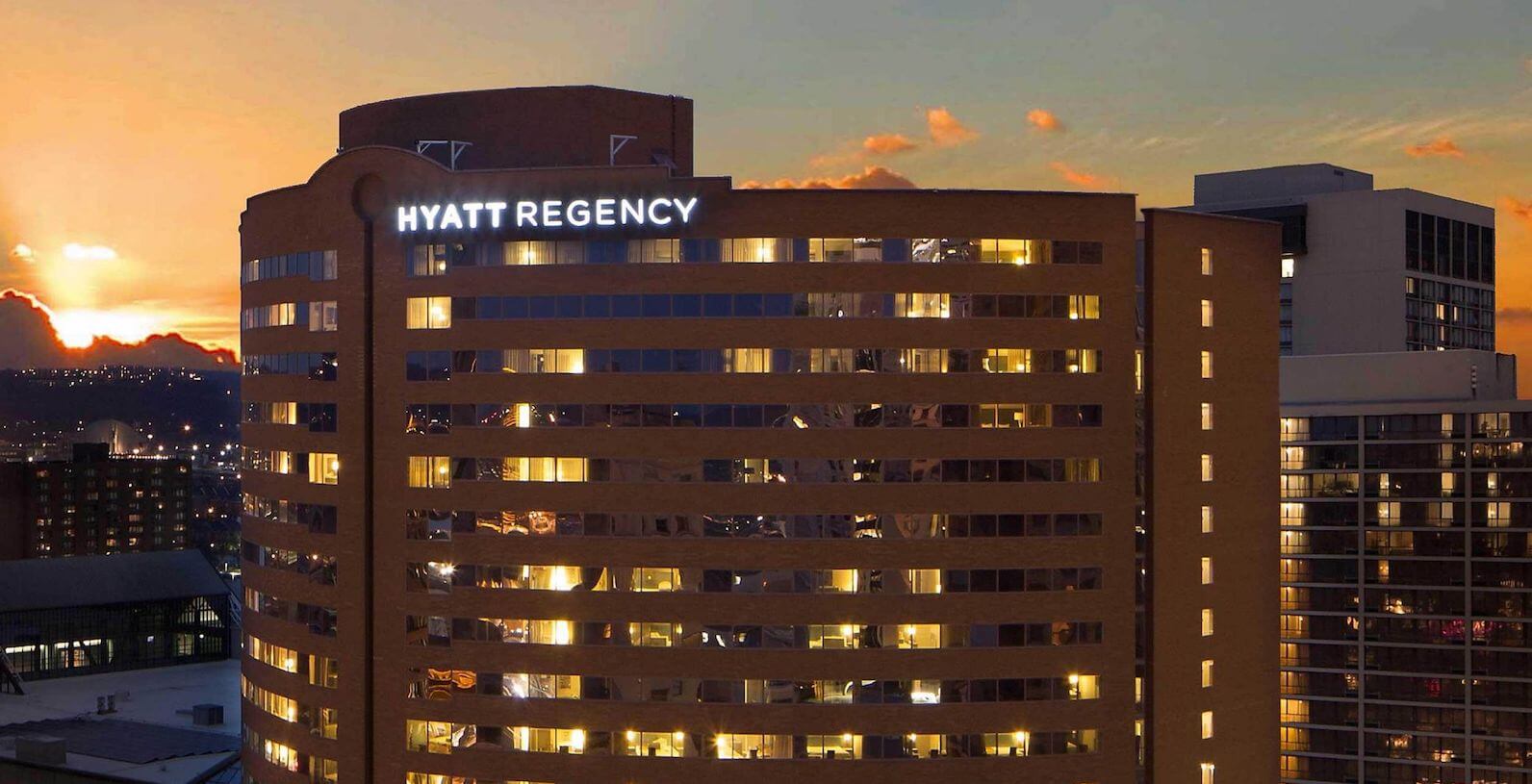
Hyatt Regency Cincinnati
The Hyatt Regency Cincinnati stays busy with convention delegates, given its location next to the Duke Energy Convention Center. The 22-story, 491-room hotel features Hyatt Regency’s signature soaring atrium, with glass walls and ceilings that create a bright and inviting lobby. Spacious rooms are decorated with tasteful neutral colors, and some offer sweeping views of downtown and the Ohio River. Oyster calls the Red Roost Tavern a “standout, with a chic, high-end feel,” where locally-sourced, farm-to-table ingredients are featured. Other highlights include an indoor saltwater pool with a glass dome and 24-hour fitness and business centers.
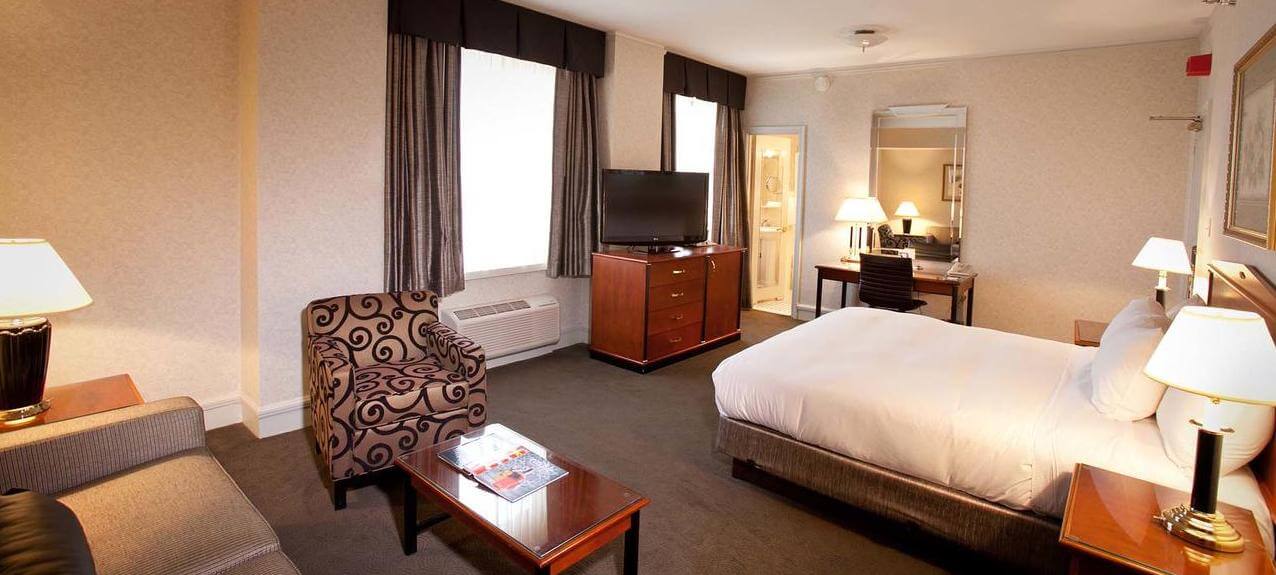
Hilton Cincinnati Netherland Plaza
Lovers of historic hotels and gourmet cuisine flock to the Hilton Cincinnati Netherland Plaza, the circa 1931, National Historic Landmark that’s one of the world’s finest examples of French Art Deco design. The Michelin Guide describes the spectacular lobby as resembling a Hollywood movie palace, with its Brazilian rosewood paneling and original, climbing-vine silver sconces. Elaborate, two-story murals adorn the ceilings of the legendary Orchids at Palm Court restaurant off the lobby, Ohio’s only AAA Five-Diamond restaurant that has consistently made the Netherland Plaza Hilton’s top food and beverage property in the U.S. The hotel is connected to the shops, restaurants and offices in the 49-story Carew Tower that’s across the street from Fountain Square.
Valparaíso's ups and downs
Valparaiso is quite literally a city of dramatic ups and downs. Chile’s second largest metropolis, “Valpo” belongs to that rarefied tribe of romantic port cities — San Francisco and Lisbon are prominent members — where ship studded seas collide with vertiginous house clad hills. The views from on high are inevitably dazzling. But navigating steep ascents on foot, while picturesque, can be wearying, even for the most avid StairMaster fiends. Which is where the elevators come in.
As famed as San Francisco’s cable cars and Lisbon’s bondes (trams) are Valparaiso’s ascensores. Technically ascensor (elevator) is a misnomer, since only one is an actual elevator. The rest are funiculars, rustic wooden boxes with brightly painted exteriors that shudder and swoosh up and down the city’s 40-something cerros, or hills.
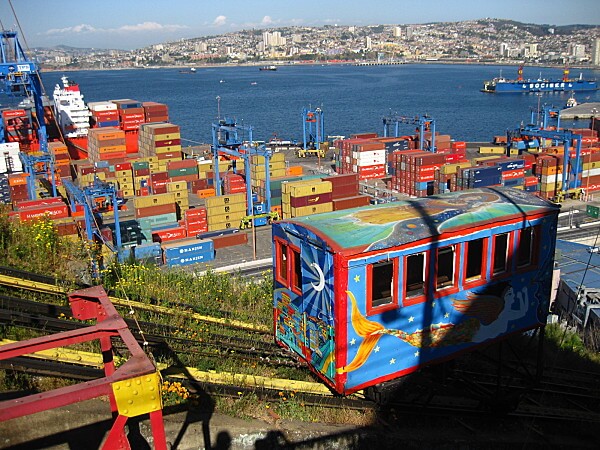
One of Valparaíso’s ascensores
This quaint and quintessentially porteño mode of transportation dates back to Valpo’s boom days when it was one of the most important ports in the Americas. Until the 20th century, the only available sea route from the Atlantic to the Pacific was via the treacherous tip of South America. As the first port after Cape Horn, Valparaiso became an obligatory pit stop and, eventually, a thriving hub for immigrants seeking their fortunes in shipping, mining and banking.
Not wanting to mingle with the sailors, stevedores, and prostitutes (at least publically) along the waterfront, nouveau riche expats built palatial manors on the hills overlooking the sea. To whisk them to and from the lofty cerros, they hit upon the solution of ascensores. The first steam engine-operated funicular went into service in 1883; by the early 20th century, there were more than 30.
Unfortunately, when the Panama Canal opened in 1914 — creating a shortcut from the Atlantic to the Pacific — Valparaiso’s boom began to go bust. Catastrophic earthquakes and fires also wreaked havoc upon the city – and its ascensores. By the early 21st century, only 16 had persevered, a feat that earned them status as National Heritage Monuments.
Historic Valparaiso itself was declared a UNESCO World Heritage Site in 2003. And yet, despite spurring a major revitalization of this bewitchingly ragged city, today only a half dozen ascensores are still in operation. Here’s a brief guide on how to take full funicular advantage of the proud survivors:

Ascensor Concepción
Valparaíso’s oldest ascensor has been in service since 1883. From the historic Calle Prat, lined with grand 19th-century money-making temples such as the Bolsa de Corredores (Stock Exchange) and the former Banco de Londres (today occupied by Banco Santander), the funicular rises up to Cerro Concepción. Together with adjacent Cerro Alegre, Cerro Concepción is one of the city’s most picturesque neighborhoods, crammed with rainbow colored Victorian houses and funky little boutiques (and boutique hotels), and ripe for wandering.
The ascensor alights at Paseo Gervasoni, a manor-lined terrace with sweeping sea and city vistas. Cerro Concepción is drenched in an arty, writerly vibe nourished by a significant coffee culture. Café del Poeta is an elegant café, its walls lined with poetry books, which serves a mean once — Chilean afternoon tea. Nearby, Color Café channels more contemporary artsiness with walls covered in napkin art and the lure of homemade truffles. For caffeine (or hot chocolate) with a view, Café La Belle Époque (at Papudo 527) offers an intimate terrace along with an in-house art gallery.
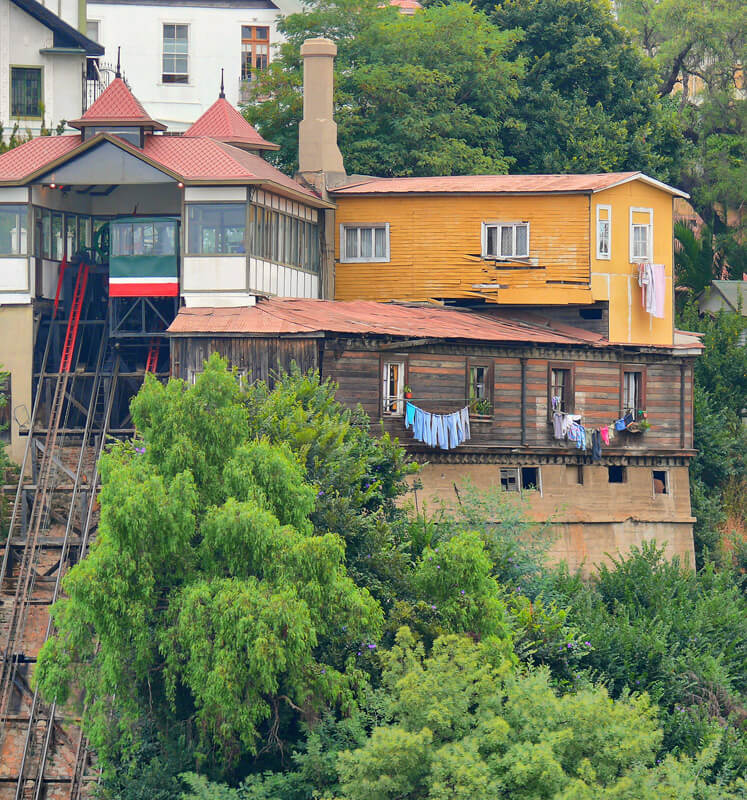
Ascensor el Peral
Inaugurated in 1901, this recently renovated funicular departs from the old court buildings, adjacent to Valparaiso’s monumental main square of Plaza Sotomayor and ascends to Paseo Yugoslavo, a terraced boardwalk on Cerro Alegre lined with striking old houses looking out to the Pacific. One of the most arresting is the handsomely restored art nouveau Palacio Baburizza. Once home to a rich, eccentric and lonely Yugoslavian immigrant, today it shelters the city’s Museum of Fine Arts.
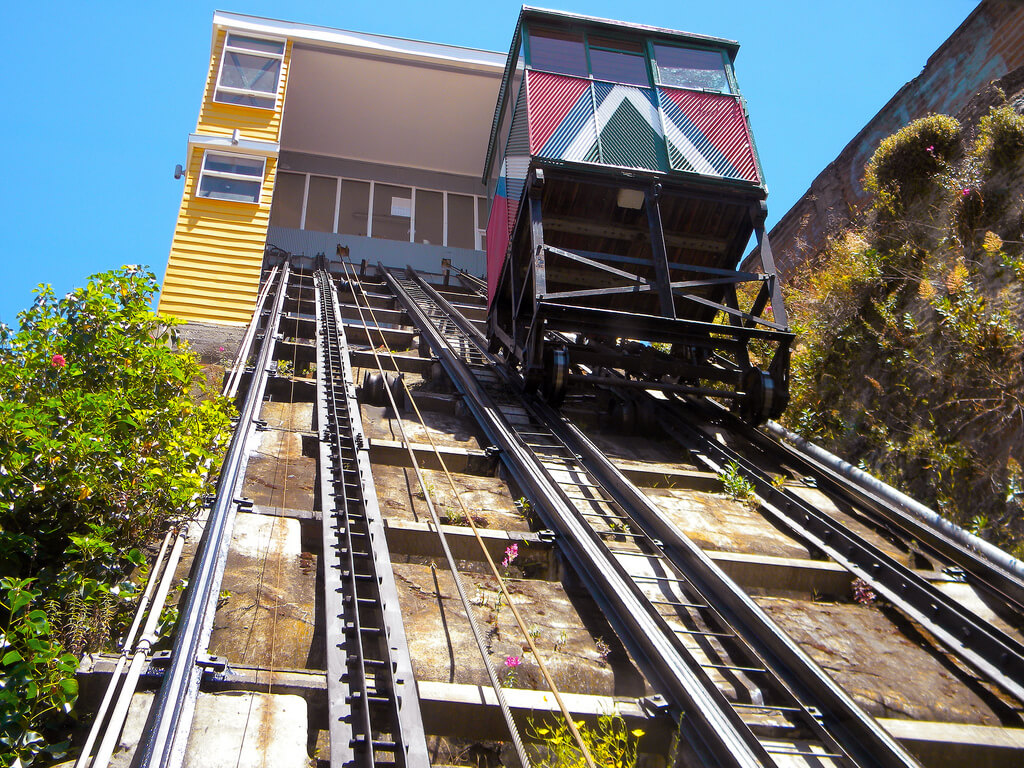
Ascensor Reina Victoria
Cerro Alegre can also be reached via this funicular named after Britain’s Queen Victoria and inaugurated two years after her death in 1901. From Calle Elias, the ascensor rises up to scenic Paseo Dimalow, set amidst Cerro Alegre’s nexus of hip and happening restaurants, bars and boutiques. Worth popping into are galleries such as Bahía Utopíca and Casa E, which showcase works by local artists, and Café Vinilo, a terrifically funky café/bistro with a hidden garden, not to mention inventive food, brutally strong coffee and homemade ice cream made from exotic Chilean fruits and nuts.
Cerro de Alegre is rife with stunning vantage points from which to watch the sunset over the city. Rooftop bars abound, but Taulat is an intimate tapas bar with sublime views and frothy Pisco Sours.

Ascensor Artillera
The western edge of the port district is a lively, gritty area, home to Valpo’s oldest church, and its oldest bar. Since they’re only one block from each other, after spiritual contemplation at the Iglesia de la Matriz, you can take a libation of cheap and potent Chilean chichón at the dimly atmospheric Bar Liberty, which has been slinging drinks since 1897.
Nearby, Plaza Aduana is anchored by the imposing colonial Customs house and the Ascensor Artillera, built in 1893, which takes passengers up the Cerro Artillera. At the top, is the most panoramic boardwalk of them all, Paseo 21 de Mayo as well as Vinizio, a cavernous wine bar/boutique specializing in small Chilean vintages and compelling views of cranes lifting containers at the port below.
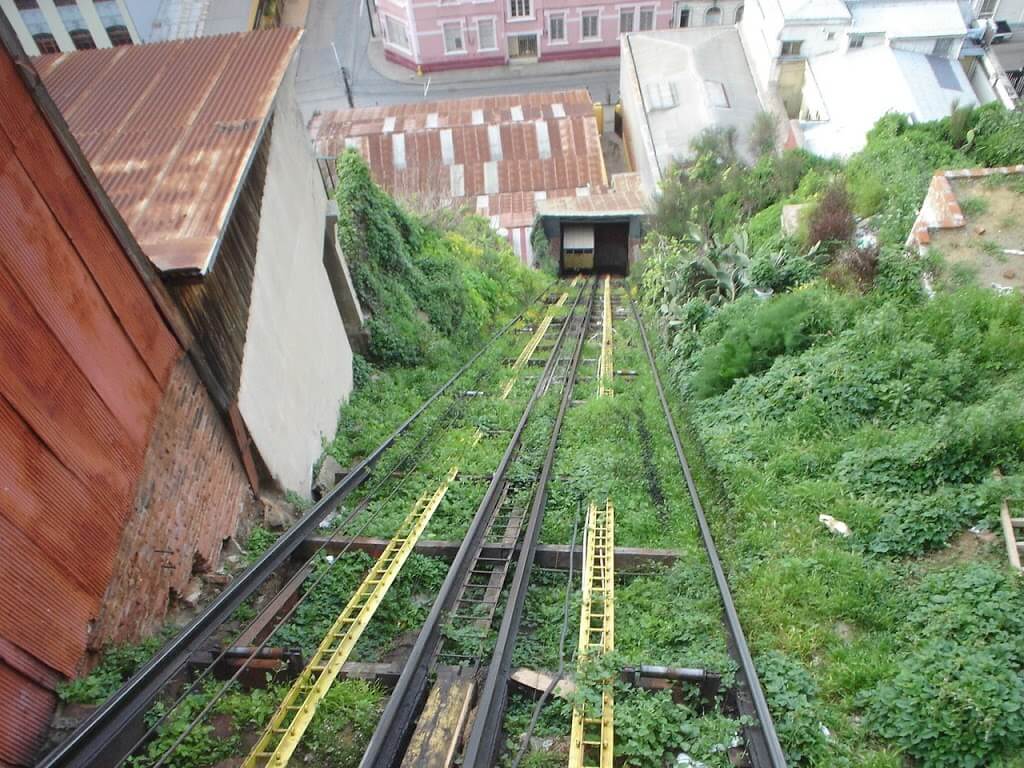
Ascensor Espíritu Santo
Dating from 1912, this “younger” funicular offers a rickety ride from Calle Aldunate up the slopes of Cerro Bellavista. Exiting onto Calle Rudolph, you’ve still got some uphill trekking ahead to reach the city’s most popular pilgrimage site; the madcap 5-story home that poet Pablo Neruda built “in the air” and christened La Sebastiana.
Happily, the route weaves through the Museo a Cielo Aberto, a twisting labyrinth of houses and stairways adorned in murals and frescoes. Named in honor of the ascensor, Espíritu Santo is a contemporary Chilean restaurant offering creative, locally sourced dishes and — in keeping with Valpo’s highs and lows — captivating city views.
Israel’s most luxurious hotels
The State of Israel boasts more than just religious relics, tasty hummus, and camel rides. First, newcomers might be surprised to learn that as small as the country is, its landscape varies from lush greenery in the north, beautiful beaches on the Western coast, mountainous regions surrounding Jerusalem, and endless stretches of desert in the south. Next, there’s a solid offering of boutique and luxury hotels all across the land that cater to discerning visitors traveling from both near and far. Whether you need to rest your head while touring the bigger cities or are interested in discrete, bespoke lodging in the midst of nature, there’s no shortage of options when it comes to high-end hospitality in Israel. We’re proud to reveal our roundup of the can’t-miss hotels in Israel that have been vetted and approved by the experts.
The Norman (Tel Aviv)
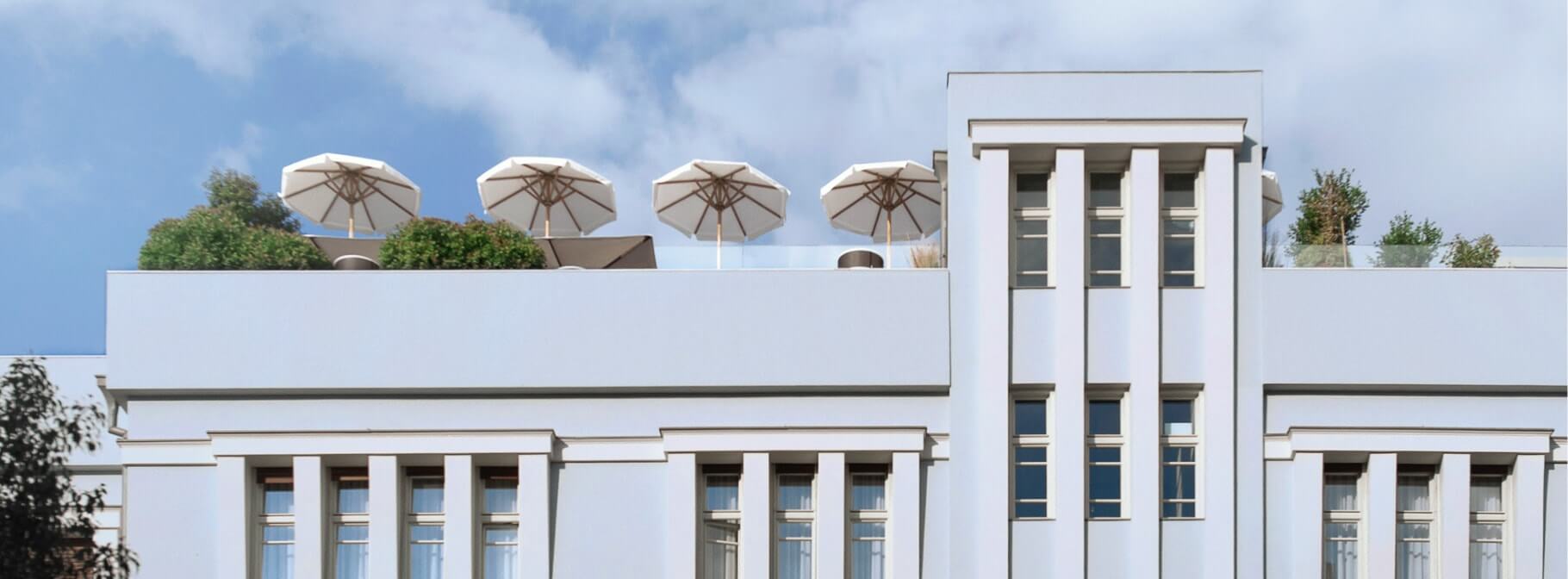
The Norman (Tel Aviv)
The 2014 opening of the five-star Norman Hotel brought a new level of class and sophistication to Tel Aviv’s hotel scene, which is saturated largely with hotel chains on the sea and smaller boutique offerings scattered across the city. Spread across two Bauhaus buildings restored from the 1920s, The Norman’s old-world charm prompted Mr & Mrs Smith to deem the grounds “as glamorous as a silver-screen starlet.” Conde Nast Traveller designated The Norman as the best hotel in Africa and the Middle East in October 2018, in large part thanks to its best-in-class customer service, two gourmand-approved restaurants, and stately Library Bar.
The King David (Jerusalem)
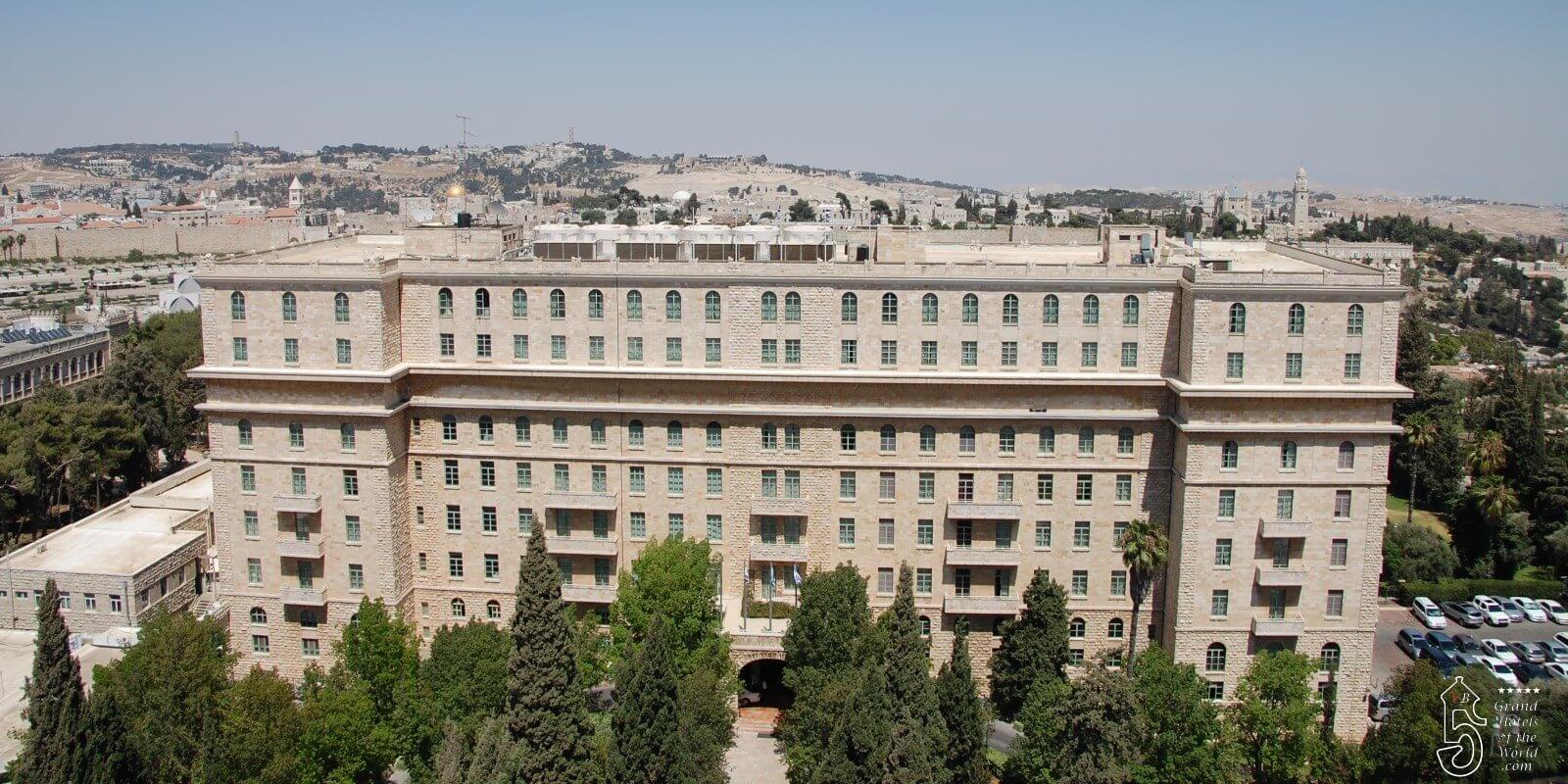
The King David (Jerusalem)
Strategically located a short walk away from Jerusalem’s Old City, The King David Hotel hasn’t lost a bit of its polish or esteemed reputation since opening its doors nearly a century ago. Famous for hosting politicians, dignitaries, and celebrities from around the world, The King David was visited by the likes of Donald Trump and Prince William in 2018. We recommend this hotel for families, kosher-keeping patrons, and discerning guests seeking formal hospitality.
Beresheet (Mitzpe Ramon)
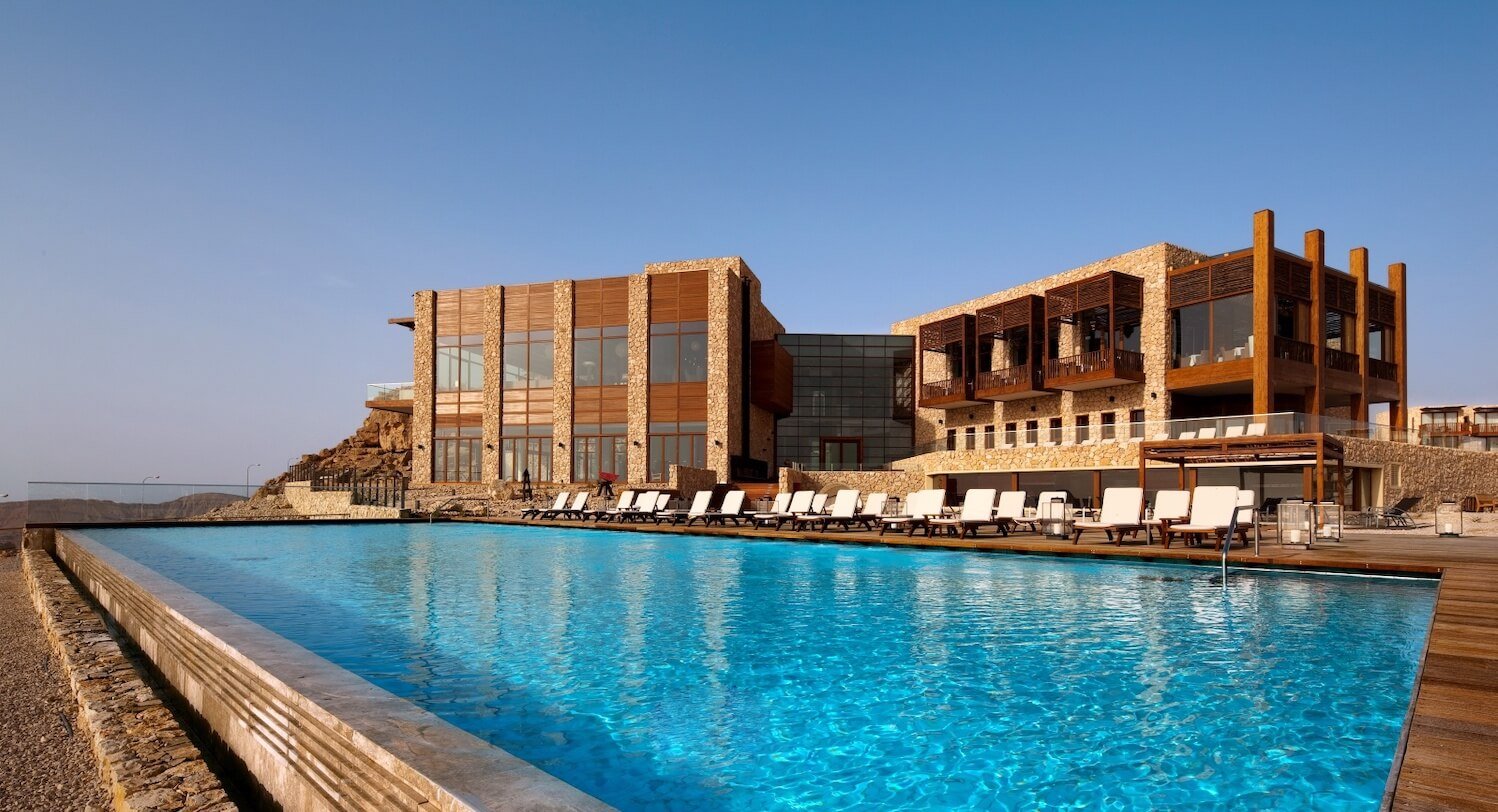
Beresheet (Mitzpe Ramon)
Beresheet is the Negev’s crowned jewel, offering five-star hospitality across 12 acres of property and 111 villas. Southern Israel’s most deluxe resort provides guests with unbeatable views of the Ramon Crater, as well as top-notch service, amenities, and respite from the hustle and bustle of the country’s more toured and saturated areas. Don’t fret if you can’t book one of the 39 rooms that come with a private pool; you can still enjoy Beresheet’s outdoor infinity pool, which was voted “Coolest Hotel Pool in the World” in 2018 by Travel Agent Central.
The Jaffa (Tel Aviv)
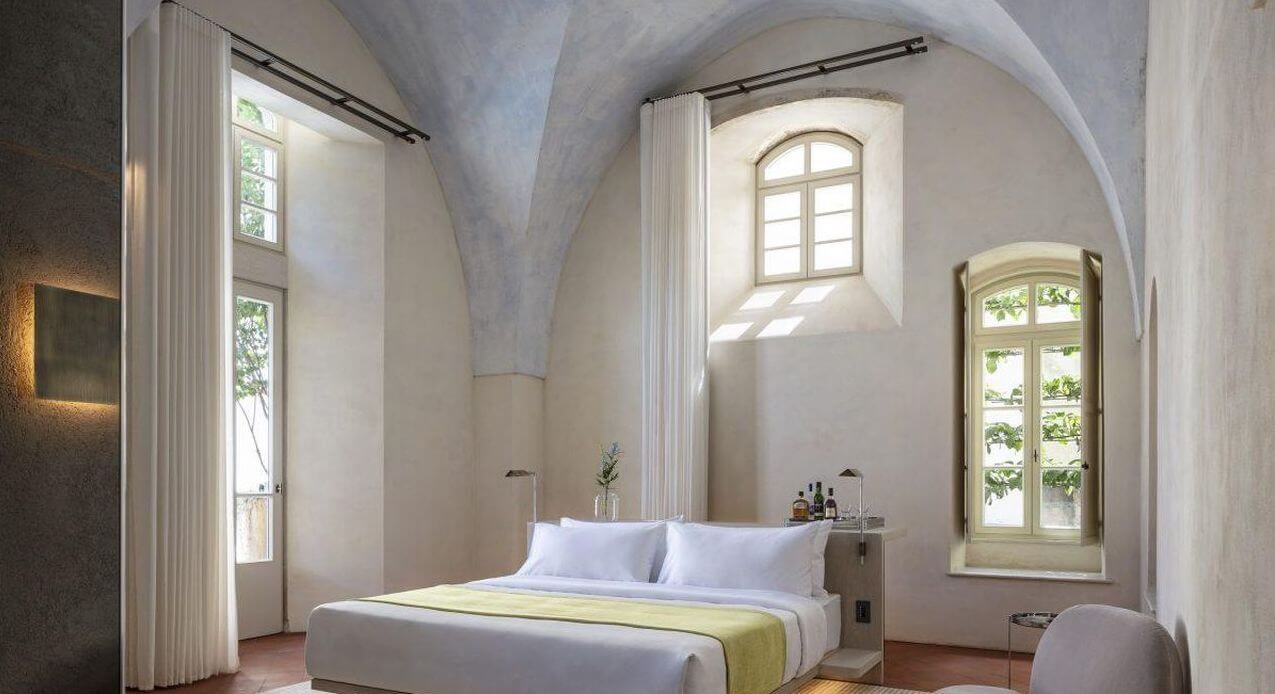
The Jaffa (Tel Aviv)
A Luxury Collection Hotel under the helm of New York-based real estate tycoon Aby Rosen, the recently opened Jaffa—housed in a 19th-century former hospital and monastery—is prompting Tel Avivians to flock south to its namesake neighborhood. The juxtaposition of historical grounds with contemporary interiors makes for a beguiling space that, according to The Telegraph, “begs to be explored.” With its stained-glass windows and high-arched ceilings, the Chapel is perhaps the most awe-inspiring feature on the property, and has already established itself as both a nightlife hotspot and a stunning venue for weddings and special events.
Elma Arts Complex (Zichron Yaakov)
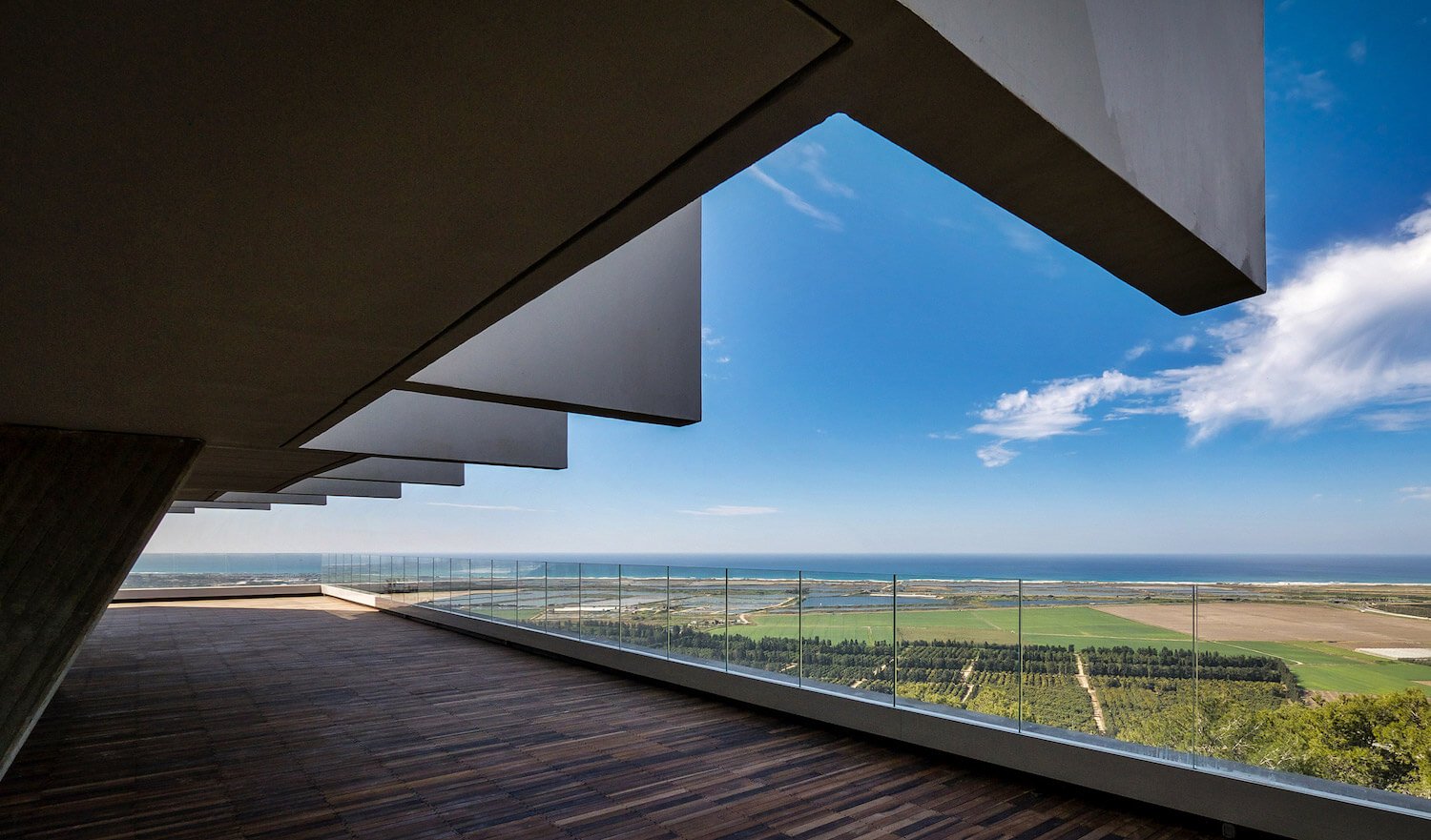
Elma Arts Complex (Zichron Yaakov)
While the Elma’s architecture may be described as Brutalist, a visit to this 95-room, arts-centric oasis is much more welcoming than it may sound. The Elma is as much a luxury hotel as it is a cultural center, boasting high modernist interior design, a plethora of works by Israeli and international artists, and two on-site performing arts venues. We recommend staying here for a uniquely immersive arts experience not far from the ancient ruins of Caesarea and a selection of northern Israel’s best wineries.
Efendi Boutique Hotel (Acre)
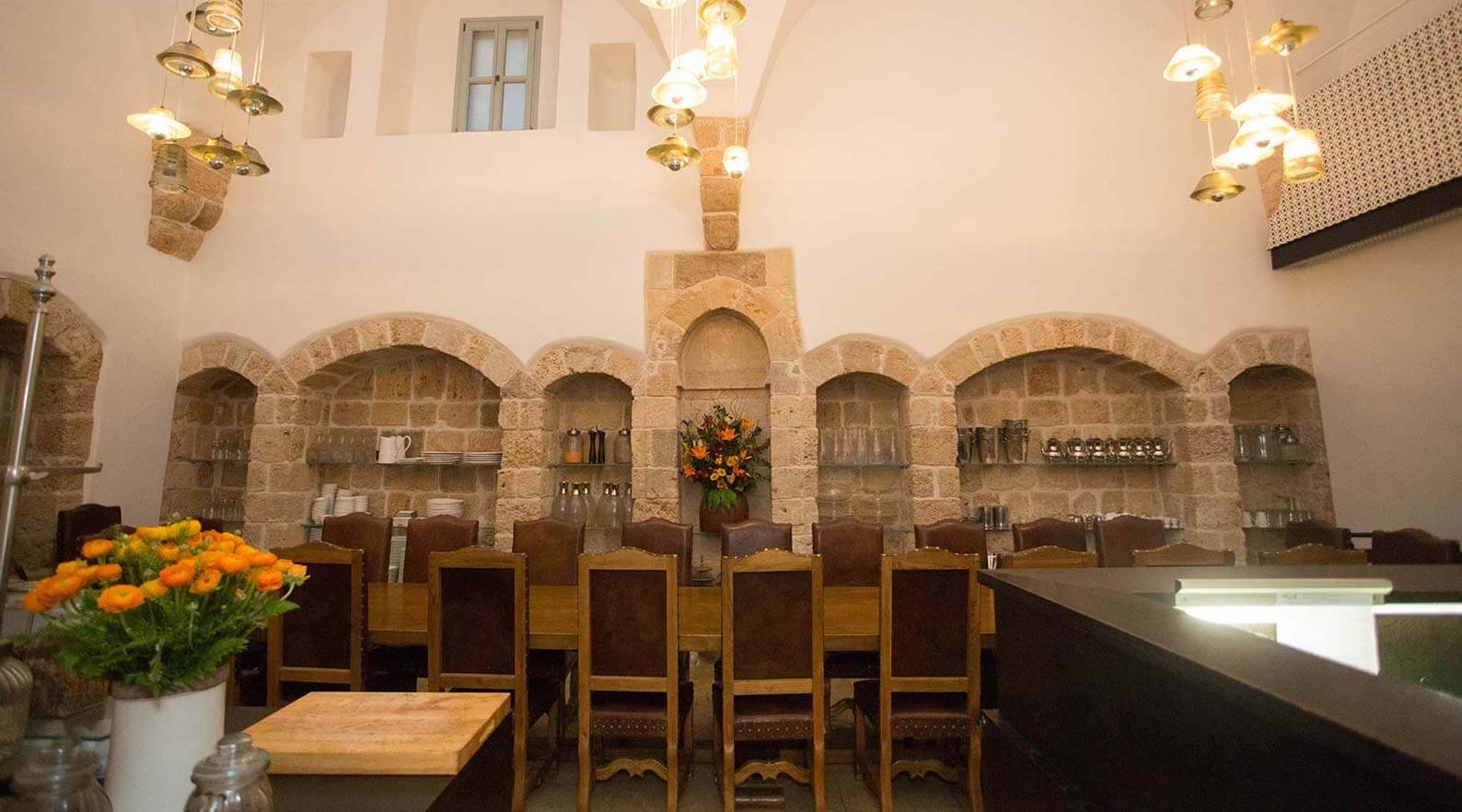
Efendi Boutique Hotel (Acre)
Located in the ancient port city of Akko, the Efendi was birthed by merging two late-Ottoman-era mansions into one deluxe structure housing 12 guest rooms. Guests can immerse themselves in the history of the setting by relaxing in the 400-year-old hammam or taking in the breathtaking views of the city’s walls and the Mediterranean Sea on the cocktail deck. Only a short distance away is owner Uri Jeremias’s namesake restaurant, Uri Buri, one of Israel’s most prized restaurants famous for its delectably fresh seafood.
The American Colony Hotel (Jerusalem)
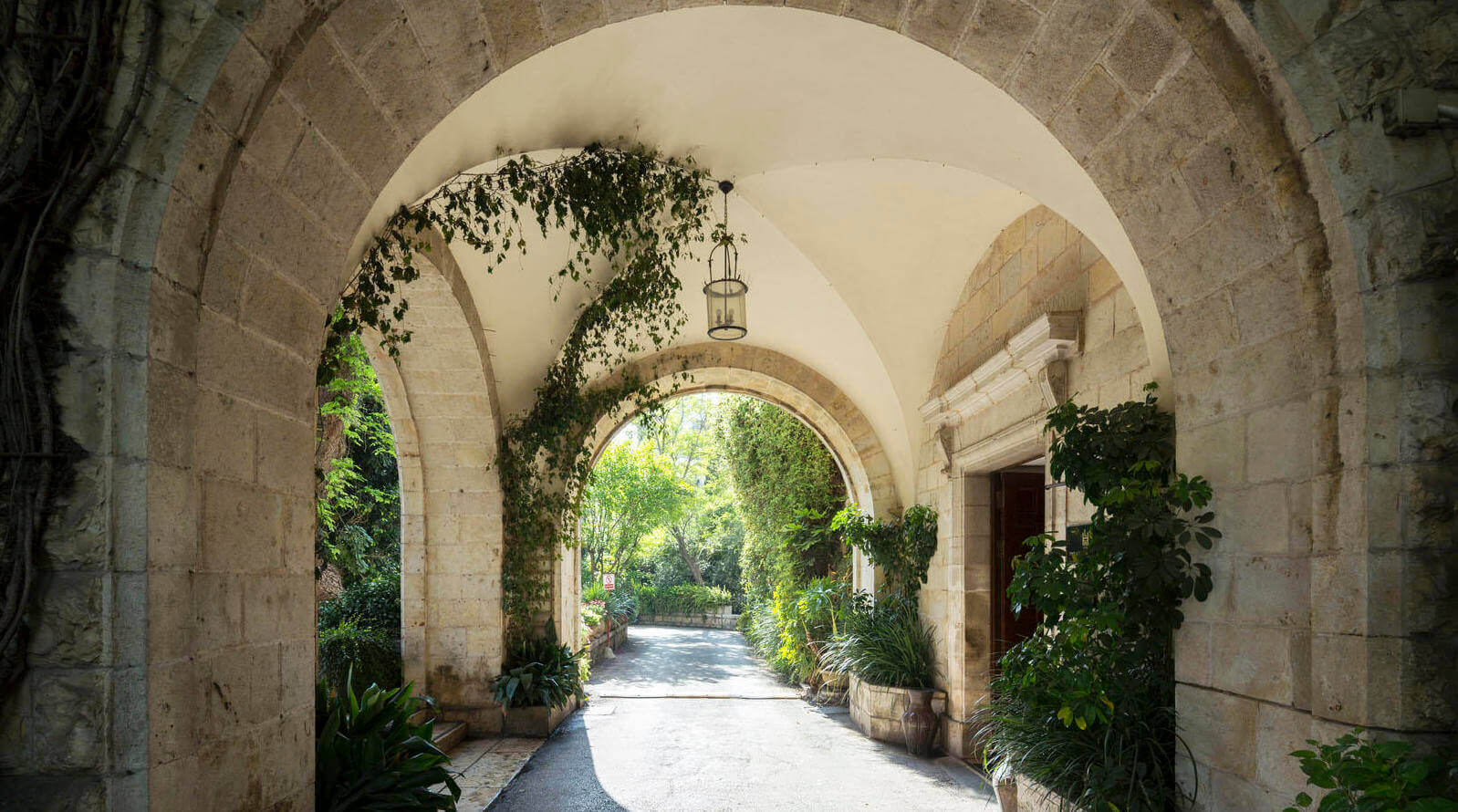
The American Colony Hotel (Jerusalem)
Once a palace for an Ottoman pasha and his harem of four wives, The American Colony Hotel is a five-star walled-in mansion that’s been hosting guests for over a century. Given its strategic location in East Jerusalem and positioning as a beacon of political neutrality, The American Colony is popular with journalists, diplomats, and celebrities seeking access and insight into the city’s less-toured areas without sacrificing comfort, safety, or style. We particularly praise the hotel’s expansive garden courtyard, pink-stoned Cellar Bar, and the Arabesque restaurant’s delectable Saturday buffet.
The Setai (Sea of Galilee)
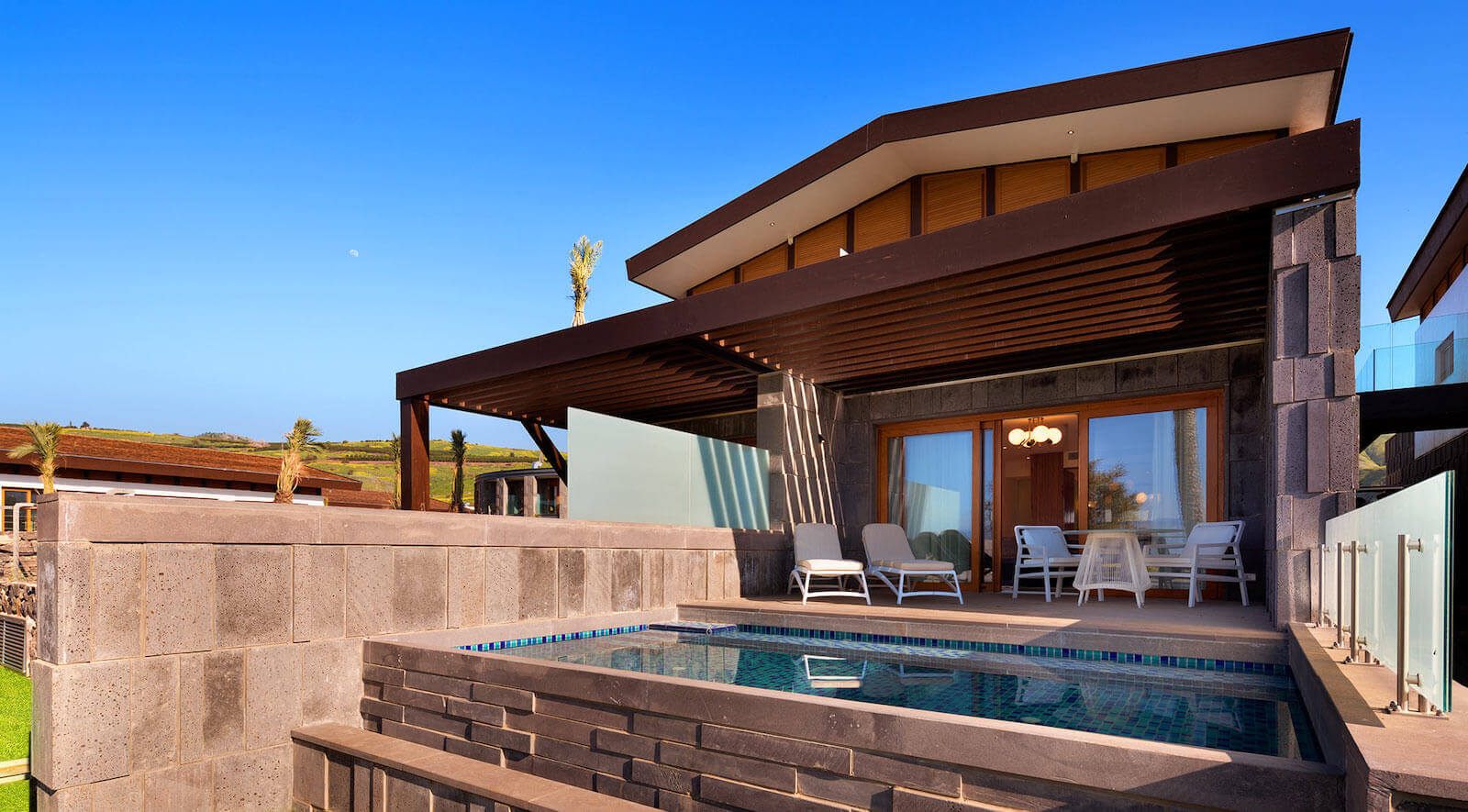
The Setai (Sea of Galilee)
Perched on the eastern shore of the biblical Sea of Galilee, The Setai opened its doors in June 2017, setting a new standard for high-end hospitality in Israel’s northern region. The Setai is accessible to some of northern Israel’s most visited sites, including Mount Hermon (the country’s sole offering for skiers) and the Golan Heights. We recommend this hotel for guests hoping to indulge in some serious R&R, as The Setai boasts the country’s largest and most well-developed spa complex.
v2 of our Hotel, Restaurant & Attraction Review API
In 2016, we launched our Expert Review API to allow anyone to programmatically access professional review data for over 50,000 hotels, restaurants and tourist attractions worldwide.
We’ve been very pleased with adoption of the service, which is now used by over 50 startups as well as by more well-established travel portals. The kinds of uses that we’re seeing are much more extensive than we’d originally anticipated — our white-label API customers include companies working on AI travel search technology and travel agencies using the reviews in-house to improve service to their clients.
We’re gearing up to launch v2 of the API. We’re designing this version to be as backward-compatible as possible; for most users, common API calls will continue to work without any changes necessary. (And in any event we will continue to support v1 of the API until at least the Fall of 2019.) Here’s a preview of three new features in v2.
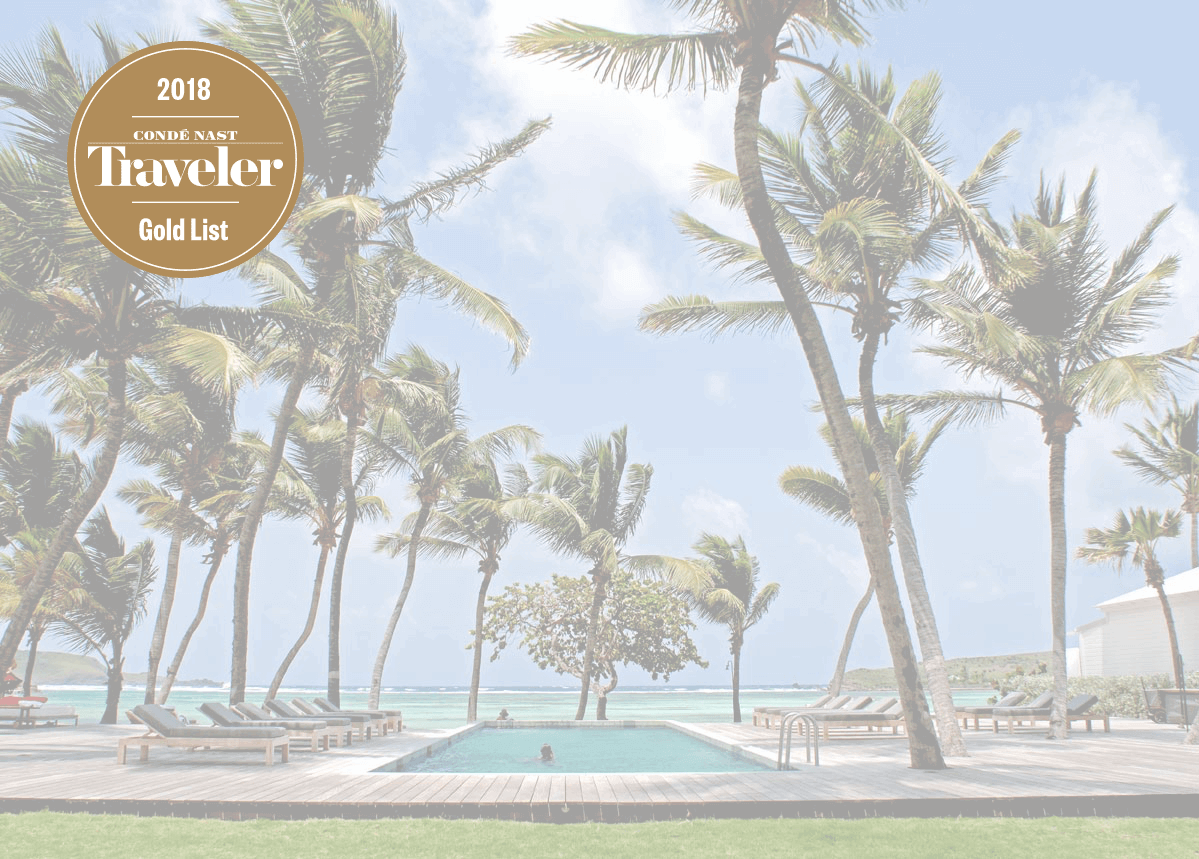
For the first time, the API will include coverage of award lists from major publications.
Award lists
Some of the most eagerly anticipated travel content takes the form of lists, like Condé Nast Traveler’s Gold List and The World’s 50 Best Restaurants. The new version of the API will include this data for the first time.
Review advice
Useful pieces of advice are often included in reviews, like what room to ask for at a hotel, what dishes to order at a restaurant, and the best time of day to visit a particular attraction. Our team has been working to identify this advice; the API will also now provide more structured data for each item.
More general ratings
Currently, each venue on TripExpert is ranked within a particular destination, such as the Bahamas, New York City and Hawaii. This is adequate for most purposes, but not if you’re trying to get a ranked list in a wider or narrower geographic area — like the Caribbean, the Upper East Side, or Kauai. We’re building features that will let you retrieve this data via the API.
For more information
We’ll be updating the documentation on our developer site in the coming weeks. Feel free to reach out to [email protected] if you have any questions. If you’re building something new and you think our data may be useful, we’d love to hear from you.
Best Hotels in Las Vegas, According to the Experts
Visitors to Las Vegas are spoiled for choice when it comes to lodging options — our experts recommend over 150 hotels, and many luxury options are priced very competitively. Four properties, however, stand out above the others, with TripExpert Scores over 95. Of these four, the Bellagio and the Wynn are Vegas classics, with nightclubs, 24-hour casinos, and an extensive range of dining and drinking options. By contrast, the other two are low-key, casino-free getaways: the Four Seasons and the Mandarin Oriental. Read on find out which suits you best.
Why these results are reliable. Our ratings and rankings for hotels in Vegas are based on over 6,000 reviews by professionals writing for travel guides, magazines and newspapers. Our scoring system can’t be gamed by hotels and our research shows it is more accurate than user review sites.
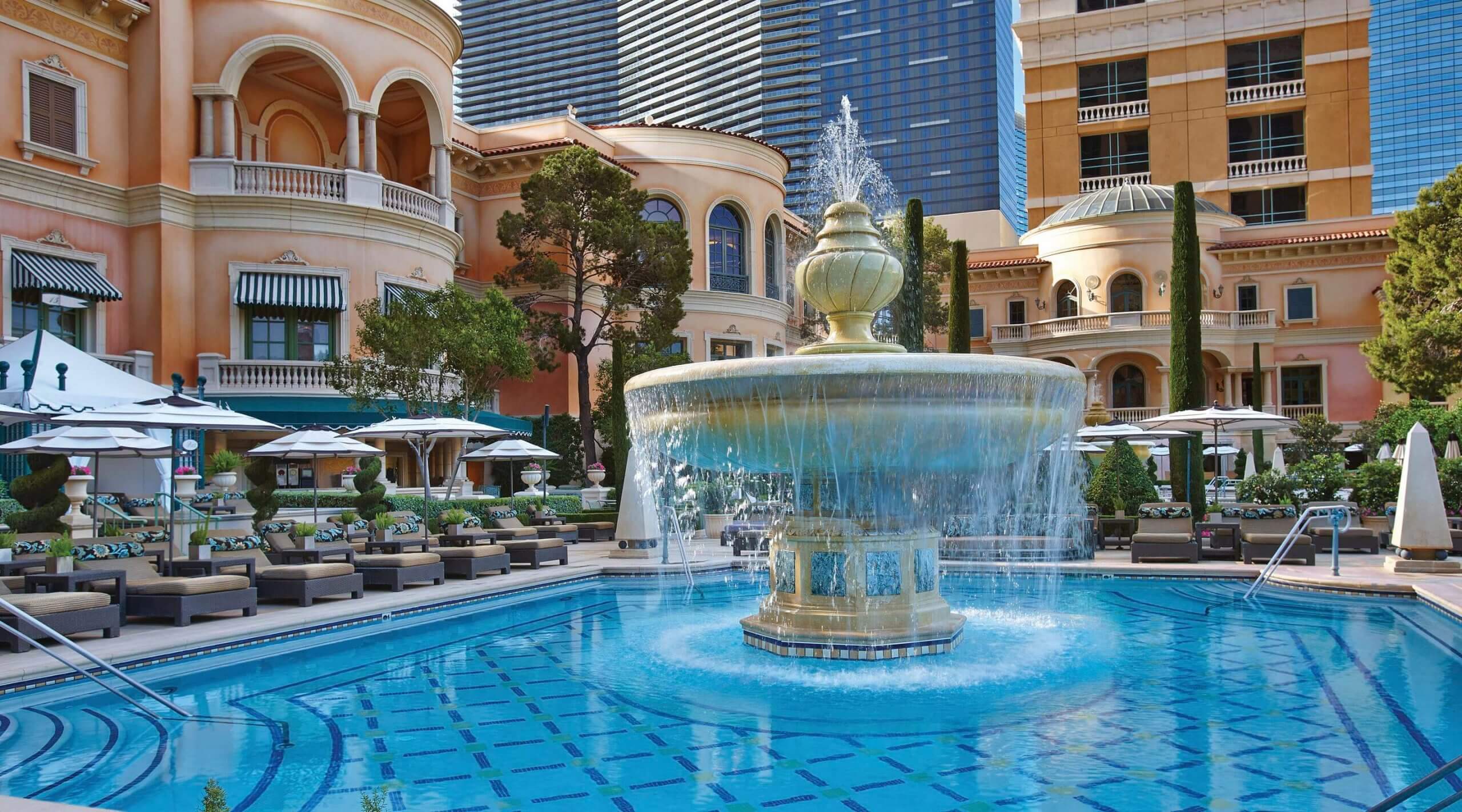
Pool at the Bellagio
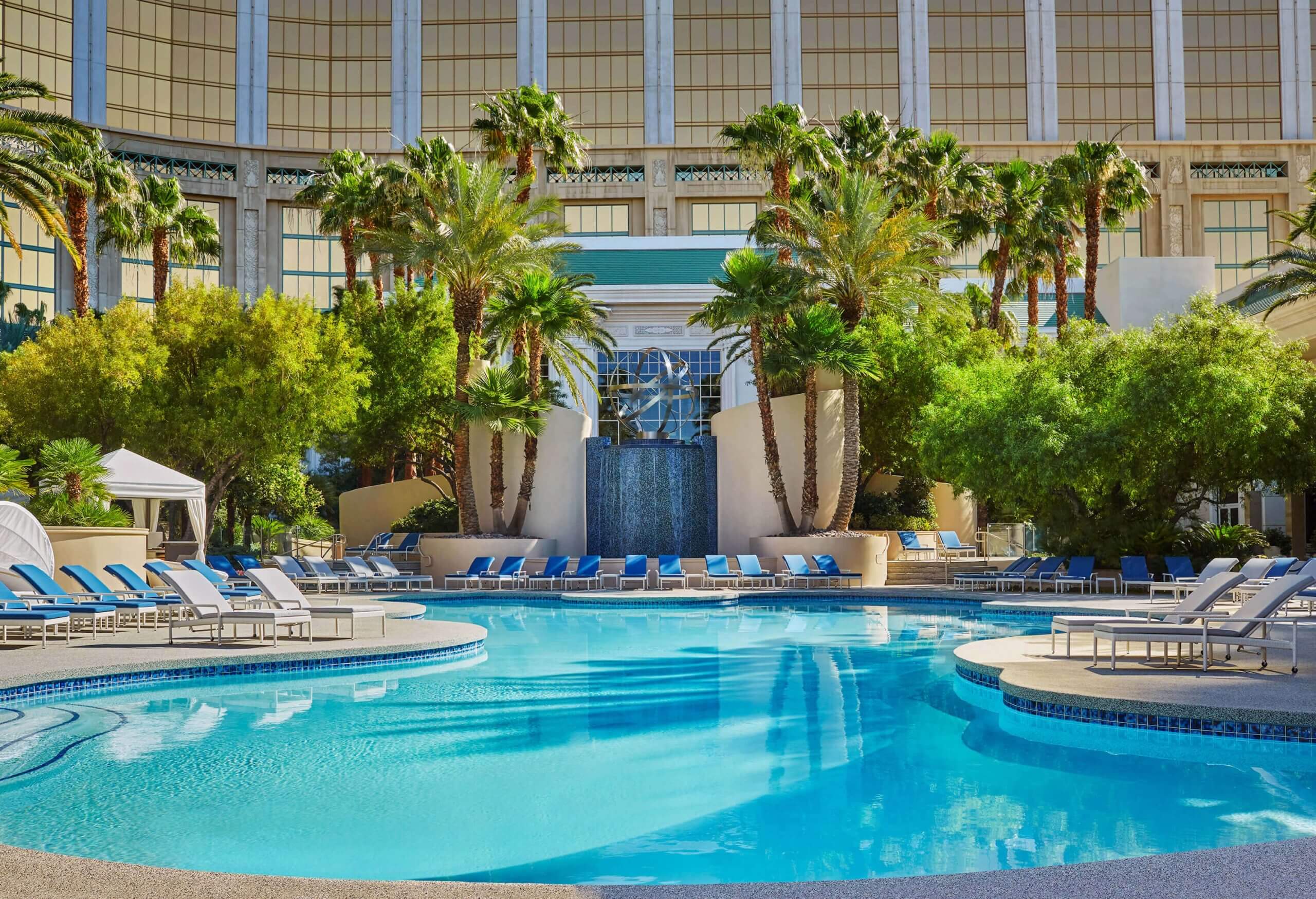
Pool at the Four Seasons
In Vegas, there is often a gap between promise and reality. Many hotels purport to offer old school luxury; the Four Seasons is one of few properties that truly delivers. It has the newest, most well-maintained rooms of any hotel in Vegas we’ve visited, and beautifully landscaped gardens surrounding its pool. There’s no casino, and no thumping poolside parties, making it a wonderful retreat from the rest of the Strip.
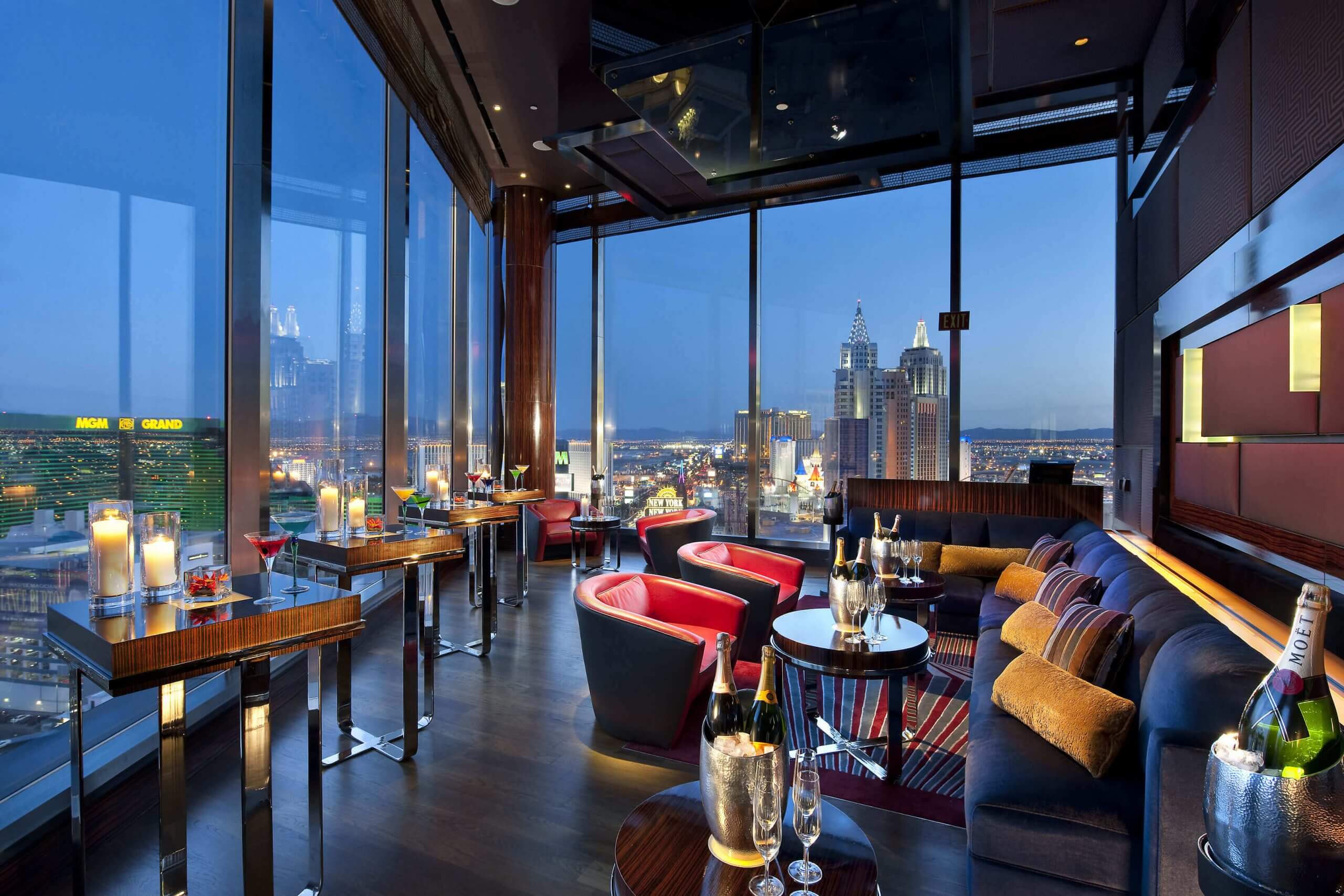
Mandarin Oriental, Las Vegas
Like the Four Seasons, the Mandarin Oriental is praised by reviewers for being a quiet haven, a spot of sophisticated elegance in a complex that also lacks a casino but that includes an outstanding spa and restaurant. The design, which evokes contemporary Hong Kong, is a welcome change to the aesthetic of the rest of the Strip.
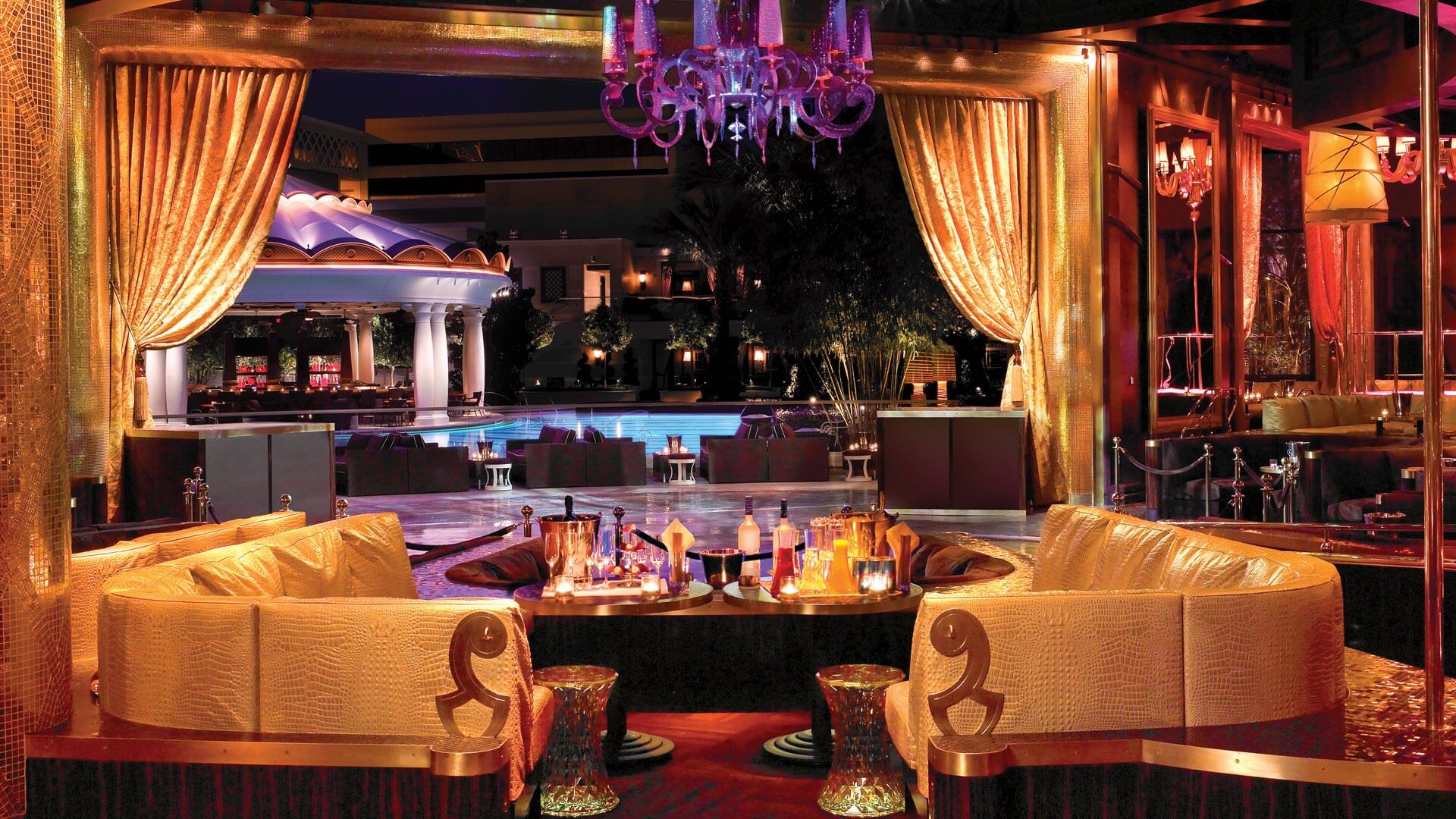
XS Nightclub, Wynn Las Vegas
With almost 3,000 rooms, the Wynn is one of the largest and most amenity-rich hotel complexes in Vegas. You’ll get a larger room here than you will at many other hotels, and with access to everything in this genuinely impressive and kitsch-free resort, you’ll rarely need to leave (that’s the idea).

